Frater D.M.T. (et al.)

A∴A∴
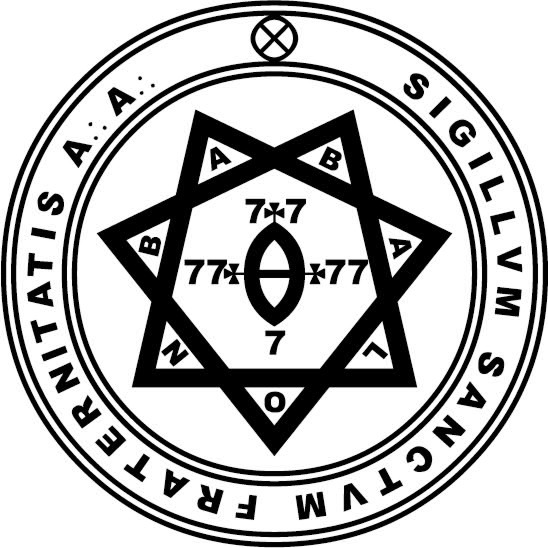
» A COMPENDIUM OF THE A∴A∴ «
The A∴A∴ (Argenteum Astrum) is a secret order founded by occultist Aleister Crowley. The A∴A∴, or "Great White Brotherhood," is an organized fraternity of men and women dedicated to the spiritual advancement of humanity. The current structure of the organization was designed by Aleister Crowley and George Cecil Jones in 1906 from the ashes of the "Hermetic Order of the Golden Dawn". The A∴A∴ revealed Liber AL vel Legis to the world through the Prophet Aleister Crowley, as well as the other Holy Books of Thelema.
In An Account of A∴A∴, Aleister Crowley writes,
This community possesses a School, in which all who thirst for knowledge are instructed by the Spirit of Wisdom itself; and all the mysteries of nature are preserved in this school for the children of light. Perfect knowledge of nature and of humanity is taught in this school. It is from her that all truths penetrate into the world; she is the school of all who search for wisdom, and it is in this community alone that truth and the explantation of all mystery are to be found.
In "The System of the O.T.O", which originally appeared in Magick Without Tears, Crowley says,
The A∴A∴ concerns the individual, his development, his intitiation, his passage from "Student" to "Ipsissimus"; he has no contact of any kind with any other person except the Neophyte who introduces him, and any Student or Students whom he may, after becoming a Neophyte, introduce.
A∴A∴ is unique in that members officially only know their superior and any inferiors they themselves are responsible for. There are no regular group rituals (measures are taken to hide the identity of the Officers during the few Temple initiation rituals), and members are expected to work alone, consulting as needed with their superior in the Order. In this way the founders of the system hoped to avoid the many social complications and ego problems that led to the downfall of the predecessor organization, the Hermetic Order of the Golden Dawn. The A∴A∴ is a spiritual organization focused on enlightenment of the individual, with a strong emphasis on maintaining the chain of initiates from teacher to student, and devoting all of ones attainments to those that follow.
Initiatory Structure of the A∴A∴
The A∴A∴ consists of eleven grades devided into a preparatory stage, and three initiatory "Orders":
| System of degrees |
| Grade |
Label |
Description |
| Without all Orders |
| |
Student |
His business is to acquire a general intellectual knowledge of all systems of attainment, as declared in the prescribed books. At the end of a fixed period, the Student sits an open-book examination to test his reading, after which he passes through a small ritual involving the reading of the History Lection (Liber LXI), and passes to the grade of Probationer. |
| 0° |
Probationer (0°=0#) |
This grade exists primarily for the candidate to prove himself capable of executing the Great Work, and to prepare him for his initiation into the A∴A∴ proper. His principal business is to begin such practices as he my prefer, and to write a careful record of the same for one year. In this, he is charged with the tasks of attaining a "scientific knowledge of the nature and powers of his own being". Crowley elsewhere mentions that the Probationer must demonstrate a reasonable level of proficiency in the core practices of the Order (as laid out in Libers E, and O). This is primarily to ensure that when advancement comes, the newly created Neophyte will have the necessary experience to guide his own Probationers in their work. Initiation into the following grade of Neophyte is conferred after at least one year, through an unpublished ritual titled Liber Throa. |
| The Order of the G∴D∴ (Golden Dawn) |
| 1° |
Neophyte (1°=10#) |
The title of the grade is derived from the Greek neophutos, meaning newly planted. The Neophyte grade is the first grade in which true initiation takes place, and the candidate set in fertile spiritual soil in which to grow. The Neophyte is charged with the task of attaining "control of the nature and powers of [his] own being." This is prosecuted through the acquisition and use of the technique of Rising on the Planes, i.e. by acquiring perfect control of the Astral Plane. Initiation into the grade of Zelator is conferred a minimum of eight months, through a second unpublished ritual, titled The Passing through the Duat. |
| 2° |
Zelator (2°=9#) |
His main work is to achieve complete success in Asana and Pranayama. He also begins to study the formula of the Rosy Cross. The word "Zelator" probably stems from the Greek zealos, zeal. This is in reference to the energy-building asanas and pranayamas that characterise the main work of the grade. The Oath of the grade states the Zelator is to "obtain control of the foundations of [his] own being", a reference to the Sephirah Yesod, to which the grade is attributed. Advancement to Practicus is administrative only, requiring no initiatory ritual as such, and may be conferred at any time. |
| 3° |
Practicus (3°=8#) |
Is expected to complete his intellectual training, and in particular to study the Qabalah. The grade title suggests the "practical" use of the skills acquired through the previous grades. The Practicus is prosecuted to "obtain control of the vacillations of [his] own being", which is to say that he must learn to control his own mind, and become one-pointed in thought, and so in word and action. Advancement to Philosophus, like the advancement to Practicus, is also a purely administrative process, and again may be conferred at any time. |
| 4° |
Philosophus (4°=7#) |
Is expected to complete his moral training. He is tested in Devotion to the Order. In particular, this grade stresses the application of adorations to various deities, such as are outlined in Liber Astarte. The oath of the grade characterises this; the Philosophus resolves to "obtain control of the attractions and repulsions of my own being." This effort is the primarily directed toward transcending the likes and dislikes, deliberately defying one's morality, and so on. The aim is to break out of one's predefined idea of self, and reach a perfectly equanimous perspective. Advancement to Dominus Liminis is made at the perfection of this process, and may take place at any time, with no prescribed ritual. |
| |
| — the link |
Dominus Liminis |
The grade of Dominus Liminis is a "bridge" that connects the outer Order of the G∴D∴, centred in Yesod, with the Order of the R∴C∴, centred in Tiphareth. The work of the Dominus Liminis extends and refines the work of the previous grades, synthesising it into a coherent whole. The self-control of the Neophyte, the energy of the Zelator, the one-pointedness of the Practicus and the indifference of the Philosophus are fused together, and turned to the work of strengthening and refining the faculty of aspiration. Indeed, the oath of this grade is precisely this, to "obtain control of the aspirations of [one's] own being". The title "Dominus Liminis" is another reflection of this aspiration: it means "the threshold of the Lord", a reference to the fact that in the next grade, that aspiration will be turned to the attainment of Communion with the Holy Guardian Angel. |
| The Order of the R∴C∴ (Rose-Cross) |
| 5° |
Adeptus Minor (5°=6#) |
The Grade of Adeptus Minor is the main theme of the instructions of the A∴ A∴ It is characterised by the Attainment of the Knowledge and Conversation of the Holy Guardian Angel. His work is to manifest the Beauty of the Order to the world, in the way that his superiors enjoin, and his genius dictates. |
| 6° |
Adeptus Major (6°=5#) |
His work is to use Magical Powers to support the authority of the Exempt Adept his superior. He achieves self-reliance, the proper use of Force, and the authority to govern the lower grades. |
| 7° |
Adeptus Exemptus (7°=4#) |
The Adept must prepare and publish a thesis setting forth His knowledge of the Universe, and his proposals for its welfare and progress. He will thus be known as the leader of a school of thought. He will have attained all but the supreme summits of meditation, and should be already prepared to perceive that the only possible course for him is to devote himself utterly to helping his fellow creatures. |
| |
| — the link |
Babe of the Abyss |
The Grade of the Babe of the Abyss is not a Grade in the proper sense, being rather a passage between the two Orders. It is an annihilation of all the bonds that compose the self or constitute the Cosmos, a resolution of all complexities into their elements, and these thereby cease to manifest, since things are only knowable in respect of their relation to, and reaction on, other things. |
| The Order of the S. S. |
| 8° |
Magister Templi (8°=3#) |
His principal business is to obtain a perfect understanding of the Universe. The essential Attainment is the perfect annihilation of that personality which limits and oppresses his true self. The Magister Templi is pre-eminently the Master of Mysticism, that is, His Understanding is entirely free from internal contradiction or external obscurity; His word is to comprehend the existing Universe in accordance with His own Mind. |
| 9° |
Magus (9°=2#) |
Attains to wisdom, declares his law and is a Master of all Magick in its greatest and highest sense. His will is entirely free from internal diversion or external opposition; His work is to create a new Universe in accordance with his Will. |
| 10° |
Ipsissimus (10°=1#) |
Beyond the comprehension of the lower degrees. An Ipsissimus is free from limitations and necessity and lives in perfect balance with Nature. Essentially, the highest mode of attainment. |
Membership: In general, a member of A∴A∴ will do the following:
- Discover for himself his own true will, and then do it, and do nothing else
- Accept the Book of the Law as the sole Rule of Life
- Acknowledge that "The word of the Law is Θελημα" and that "Love is the law, love under will."
- Acknowledge the authority of the offices of the Beast 666 and the Scarlet Woman
- Accept Ra-Hoor-Khuit as the Lord of the Aeon, and work to establish His reign upon Earth
- Work to attain the Knowledge and Conversation of his Holy Guardian Angel
- After the K&C of the HGA, to enter into the Abyss, and to emerge again therefrom
Periodicals: The Equinox.
References:
- Crowley, Aleister. (1990). "An Account of A∴A∴" The Equinox, I(1). York Beach, ME. : S. Weiser
- Crowley, Aleister. (1997). "One Star in Sight". Magick: Book Four. York Beach, ME. : S. Weiser
- Crowley, Aleister. (1982). "The System of O.T.O." Magick Without Tears. Phoenix, AZ : Falcon Press
- Eshelman, James. (1993). The Mystical and Magical System of the A∴A∴. Los Angeles: College of Thelema
- Seckler, Phyllis. (eds. Shoemaker, Peters, and Johnson). (2010). The Thoth Tarot, Astrology, & Other Selected Writings. York Beach, ME: Teitan Press
- Seckler, Phyllis. (eds. Shoemaker, Peters, and Johnson). (2012). The Kabbalah, Magick, and Thelema. Selected Writings Volume II. York Beach, ME: Teitan Press
- Shoemaker, David. (2013). Living Thelema. Sacramento, CA: Anima Solis Books
Sources:
[ « back to TOC ]

Abbey of Thelema

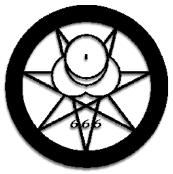

The Abbey of Thelema is an independently functioning initiatory magical group that provides a point of contact with the Order of the Silver Star (also known as the A∴A∴, Astron Argon (Greek) or Argenteum Astrum (Latin), otherwise known as the Great White Brotherhood. The leader of the abbey, Gregory von Seewald, has in turn been delegated to the Authority of the Triad, which originally was conferred upon George Cecil Jones (D.D.S.), Aleister Crowley (O.M.), and George Stansfeld Jones (O.I.V.I.V.I.O.). The abbey provides for instruction in the A∴A∴ following the magical practices and studies that were perfected by its foremost founder, Aleister Crowley (1875–1947). New members of the order are expected to show their serious intentions by acquiring and reading a number of books in magick and mysticism, including the entire set of The Equinox, the magazine Crowley began in 1909 as the official organ of the A∴A∴ Following an exam on his or her basic knowledge of magick, the student may become a probationer and begin the path of magical training. There are 11 magical grades, or degrees.
The secret, and secret practice (long ago publicly revealed), of the Ordo Templi Orientis (the other magical group Crowley headed) was sex magick. It was taught in stages as members attained the seventh through ninth degrees. However, in the A∴A∴ system as taught by the abbey, the probationer who has reached the zelator grade is invited to begin study in this practice. The sexual, magical practices constitute the essence of a second division of the abbey, namely, the Sovereign Penetralia of the Gnosis, to which those who desire to follow the practice adhere.
A∴A∴ members who have attained a level referred to as zelatores may be invited to membership within the Order of Thelemites (also known as the Order of Thelema), which was conceived in the 1920s by Crowley. Various charters, in the form of constitutions, were conferred upon A∴A∴ members of that era. These constitutions recently have been recognized and the order of Thelemites has emerged from dormancy. The order is not a mystical, magical, or occult order in the ordinary sense of these words. Its purpose is to enable its members to succeed in life by teaching them the correct attitudes toward life and how to avoid wasting time in lines of effort for which they are unsuited.
Because the Abbey of Thelema is a secret order, much of its teachings and practice are not revealed to outsiders. The leader of the abbey, Gregory von Seewald, serves as praemonstrator of the A∴A∴, outer head of the Sovereign Penetralia of the Gnosis, and abbot of Thelema for the Order of Thelemites. The Abbey of Thelema is affiliated with the Holy Order of RaHoorKhuit (H.O.O.R.), the Holy Gnostic Catholic Church (H.G.C.C.), and the Ordem dos Cavaleiros de Thelema (O.C.T.) in Brazil.
Address: Abbey of Thelema Headquarters, Box 666, Old Greenwich, CT 06870-0666
The Abbey of Thelema has a second center, in Miami, Florida, the New Flesh Palladium Chapter, which is headed by Robert North.
Membership: In 2008 there were fewer than 50 active members reported.
References:
- Motta, Marcelo Ramos. Calling the Children of the Sun. Trans. Monica Rocha, ed. Gregory von Seewald. Sydney, Australia: Headland Press, 1999.
- One Star in Sight. Old Greenwich, CT: Abbey of Thelema, n.d.
- Yorke, Gerald J. 666: Sex and the OTO. Intro. Gregory von Seewald. York Beach, ME: Weiser Antiquarian Books, 2005.
Sources:
[ « back to TOC ]

Astrum Sophia
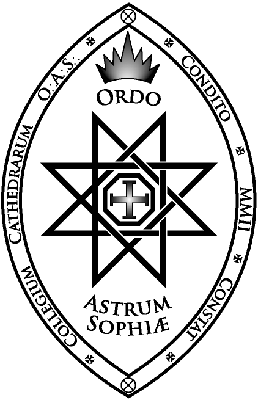
The Astrum Sophia (Ordo Astrum Sophiae), founded in 2002, is a new initiatory magical order, but one that continues the Ogdoadic Tradition of the Western Mysteries as exemplified in the Aurum Solis. The Aurum Solis was originally founded in 1897, but became well known in the 1970s through the work of Melita Denning (d. 1997) and Osborne Phillips. The Aurum Solis provided the charter and hence the initiatory lineage for the Astrum Sophia.
The founder of the Astrum Sophia is William Stoltz, who began working with Denning and Phillips in 1980. Stoltz rose quickly in the Aurum Solis and in 1985 became the order’s administrator-general. In 1987 the Aurum Solis became inactive for a period. In 1999, Stoltz resumed his Third Hall work and subsequently received a charter of succession from the Grand Master of the Aurum Solis, empowering him to establish and govern an autonomous Order of the Ogdoadic Tradition. This charter included the authority to administer all degrees, appoint all officers, and to establish or revise all rites.
The Astrum Sophia’s magical teachings, which build on the system presented in Denning and Philip’s five-volume work The Magical Philosophy, are presented to students in three stages. Following a period of probation, a new student will be introduced successively to the Lesser Mysteries in what are termed the First and Second Halls. These two “halls” constitute the Outer Order or the Order Astrum Sophia. Through the Third Hall, the Greater Mysteries are presented in what is termed the Inner Order or Stella Gloriosa. In the Inner Order, through mastery of the teachings and subsequent personal endeavor, an initiate may reach the grade of Adeptus Minor, and beyond.
The Astrum Sophia is guided by its Collegium Cathedrarum, or College of Thrones, consisting of the Grand Master, the Prior, and the Administrator-General. Under it are Commanderies and Citadels. A Commandery is an autonomous structure that, acting within the principles of the Astrum Sophia, is able to administer its own affairs, set its own curriculum, and establish Citadels. A Citadel is a working group established by a Commandery, operating under the authority of that Commandery
A Commandery is empowered to transmit the first two grades of the Order; initiation to the Third Hall requires permission from the College of Thrones. These officers of the Collegium Cathedrarum operate as members of the Grand Commandery of the Winged Serpent.
The Astrum Sophia also has a consultative governing body called the Star Council, consisting of all Masters of Commanderies and all Third Hall initiates.
Membership in the Astrum Sophia is by invitation, usually extended in response to an application. Probationers become members after receiving the First Hall initiation.
Membership: Not reported. As of 2008, there are three Commanderies operating in the United States, one each in Minnesota, Washington, and California. There are also two in Europe, one in Belgium and one for Ireland and the United Kingdom.
Sources:
- Ordo Astrum Sophiae. www.astrumsophia.org (For information: phanes@isd.net, Minneapolis, MN)
- Denning, Melita, and Osborne Phillips. The Magical Philosophy. 5 vols. St. Paul, MN: Llewellyn Publications, 1974-1981.
[ « back to TOC ]

Builders of the Adytum
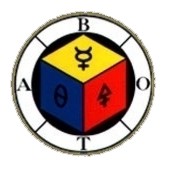
Builders of the Adytum (B.O.T.A.) is a western mystery school whose teachings are based on the Holy Qabalah and sacred Tarot. According to B.O.T.A., the Holy Qabalah is the mystical (occult) wisdom teaching of ancient Israel. The great prophets of the Old and New Testaments (including Jesus of Nazareth) were versed in the Qabalah and received their spiritual training therefrom. The Holy Qabalah is based on a diagrammatical and symbolic glyph called the Tree of Life. It is a pictorial-symbolic representation of the One God and man’s relationship to God and creation. The Tarot is a pictorial textbook on ageless wisdom.
B.O.T.A. was founded in 1922 by Dr. Paul Foster Case (1884–1954), one of the American members of the "Hermetic Order of the Golden Dawn", for the study of practical occultism. A recognized world authority on the Tarot and Qabalah, Dr. Case was given the task by the Inner School of reinterpreting the ageless wisdom into terms understandable to the modern western mind.
The primary purpose of B.O.T.A. is to teach and practice the doctrine of the Oneness of God, the brotherhood of man, and the kinship of all life, patterned after the Ageless Wisdom mystery schools of spiritual training as particularly exemplified by the Holy Qabalah. Occult orders such as B.O.T.A. have as their major objective “the promotion of the welfare of humanity.”The great masters of wisdom, from whom flow the inspiration and spiritual impetus of this work, refuse to have anything to do with any order that fails to recognize the primary importance of this great objective, for they devote all their energy and influence to that end. Their conception of the meaning of “the welfare of humanity”is embodied in the following seven-point program:
- Universal Peace;
- Universal Political Freedom;
- Universal Religious Freedom;
- Universal Education;
- Universal Health;
- Universal Prosperity; and
- Universal Spiritual Unfoldment.
According to adherents of B.O.T.A., in order to promote the welfare of humanity, we need first to look to the units of which humanity is composed. Selfish personalities make their unhappy contribution to a selfish social structure. Chaotic thinking and immature emotions affect the mental and emotional levels of all humanity. We do not live unto ourselves alone. To the degree that the aspirant becomes a more effective unit in his personal environment, he brings spiritual powers into action for all humanity and prepares himself to serve life in ever greater measure.
Dedicated work with the Tarot techniques in the B.O.T.A. curriculum has as its aim the transmutation of personality. A transformed personality will bring with it the ability to change its environment, bringing it closer to the heart’s desire. A fulfilled life becomes a positive radiating center, an effective channel through which the higher self can function, and a living example for others. The particular potency of the western mystery training system lies in its use of symbols, a universal language that directly instructs subconsciousness with its pictorial wisdom.
B.O.T.A. is the outer school behind which stands an inner mystery school offering instruction for students who wish to participate in the esoteric work. Qualified students may become members of a pronaos; many are found in the United States and various other countries, and members are referred to as pronaons. After initiation in a pronaos, members may participate in the group ritual work of B.O.T.A.
The external affairs of the order are managed by the board of stewards. The proculator general is the primary link between the outer and inner schools. Prior to 1976, the only groups open to the general membership were in Los Angeles. However, during the next decade approximately 50 study groups and working groups (pronoas) were formed in 19 states. Groups also appeared in Montreal and Toronto, Canada; Great Britain; the Netherlands; New Zealand; Colombia; and Aruba, in the Caribbean.
The B.O.T.A headquarters in France is in Perpignan; the B.O.T.A. headquarters in New Zealand is in Naenae.
Address in US: 5105 N Figueroa, Los Angeles, CA 90042
Membership: Not reported.
References:
- Case, Paul Foster. The Book of Tokens. Los Angeles: B.O.T.A., 1947.
- ———. The Tarot. Richmond, VA: Macoy, 1947.
- ———. The True and Invisible Rosicrucian Order. Author, 1928.
- Davies, Ann. Inspirational Thoughts on the Tarot. Burbank, CA: Candlelight Press, 1983.
- ———. This Is the Truth About the Self. Los Angeles: Builders of the Adytum, 1960.
- Frazer, Felix J. Parallel Paths to the Unseen Worlds. Los Angeles: Builders of the Adytum, 1967.
Sources:
[ « back to TOC ]

CIRCES International
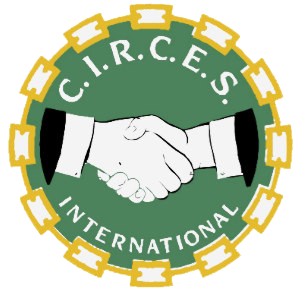
CIRCES International is the American (and English-language) affiliate of the Cercle International de Recherches Culturelles et Spirituelles (International Circle for Cultural and Spiritual Research). The International Circle was founded in 1988 in France as a New Age initiatic association inspired by the Templar tradition of inclusiveness. Integral to the understanding of the organization is the idea that each era is unique in the way the cosmos impacts the inner consciousness of humanity. New eras are defined by astrological ages. The previous age, the Age of Pisces, was keynoted by Jesus’admonition to “love ye one another.”The keynote of the present Aquarian age is the desire for confluence of personal integration. In this age, the path formerly trod primarily by mystics and sages will become common to a large number of the human race.
CIRCES emphasizes two important truths regarding the discovery of a spiritual path that would lead to personal integration. First, each individual must find his/her own path, rather than slavishly attempting to follow a predetermined “true” path. Second, the discovery and treading of one’s path can be greatly enhanced by modern psychological insights. In this light, CIRCES does not present doctrines and dogmas, but a variety of techniques that members are encouraged to use as they awaken to their own personal perspectives of truth.
CIRCES is open to all aspirants who are willing to live by the command, “love ye one another”and who are dedicated to the ideals of chivalry, world peace, and the reduction of human suffering. These goals are pursued by way of the practical integration of the spiritual and psychological technologies. Members are encouraged to discover the way they can most effectively express the various spiritual values, including unconditional love, in daily life.
New members of CIRCES are admitted into the Outer Circle and participate in its work on three levels: (1) in a general research council, members pursue studies on a particular subject and attempt to apply results in a practical context; (2) as part of a commission, work of the research councils on related topics is synthesized; (3) in the Academy, which organizes all the work of the Outer Order, the member may pursue research in one of several colleges—the College of Arcane Sciences, the College of Mundane Sciences, or the College of Creative Sciences.
After a three-year probationary period in the Outer Circle, members may also be invited to participate in the Inner Circle, where the traditional teachings of the Templars as understood by the order are presented. Involvement in the Inner Circle begins with the Order of Sovereign Templar Initiates (OSTI). Since all instruction of the Inner Circle is oral, attendance at the monthly gatherings of OSTI units is required of Inner Circle members. New members of the order may attend Inner Circle meetings but are not to participate verbally for the first year, a period of silence. Work in the Inner Circle progresses on a degree basis. There are three degrees in OSTI, which is followed by three degrees in the International Order of Pythagoreans. At the center of the order is the Universal Order of Melchisedech.
CIRCES International was initially headed by the founder, Fr. Raymond Bernard. Bernard passed away in January 2006, but his influence is still very much alive. CIRCES-USA has been completely independent since Bernard granted it full independence in 1992, and is now very much committed to the original version of its founder, which is universal fellowship, or the one human family, thereby, “materializing the spiritual.”
Each country has been organized as a Grand Commandery under the direction of a Grand Commander appointed by the Sovereign Grand Master. Regional divisions within a country are organized into Grand Preceptories headed by a Grand Preceptor. A Grand Preceptor can operate in the absence of the Grand Commander. Local groups are variously designated commanderies or templar research circles.
Membership: At this time, May 2008, group reports that it is not in a position to determine with accuracy the number of members in CIRCES International. However, given the fact that CIRCES-USA has recently decided to initiate the integration of the French and Spanish languages into its activities, numbers could change dramatically. Therefore, in the not-too-distance future, CIRCES will be trilingual, and as time goes by, it will integrate other languages in all of the activities. At the moment, CIRCES estimates that membership numbers are in the lowto mid-hundreds.
Sources:
[ « back to TOC ]

Clan Invisible
Clan Invisible is a small magical order that emerged in the larger context of the spread of thelemic magic articulated in The Book of the Law, revealed to Aleister Crowley (1875–1947) in 1904. The Book of the Law is often summarized in the statements, “Do what thou will shall be the whole of the law,”and “Love is the law, Love Under Will.”Along with respect for the Law of Thelema or Will, as revealed in the Liber al vel Legis, the clan promotes fitness of the mind and the body through the philosophies of Taoism and practice of the martial arts. It also practices a technique for gaining access to parallel dimensions utilizing dream walking, past-life regression, alchemy, divination, herbalism, holistic living, mysticism, and astronomy.
Unlike some thelemic groups, the clan does not use a grade structure; however, newer and more advanced aspirants are recognized, and the former will be referred to the latter for assistance in the development process. The clan is administered by the secretet.
Membership: Not reported.
Sources:
[ « back to TOC ]

College and Temple of Thelema
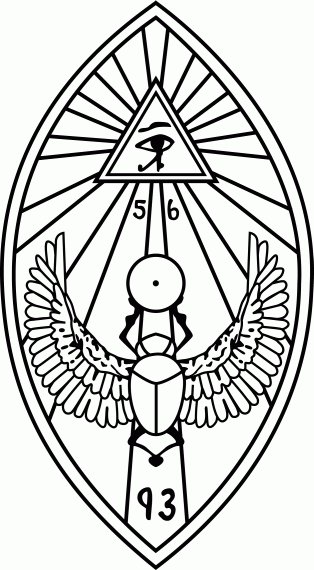
The College and Temple of Thelema (C.O.T. & T.O.T.) are two interrelated structures that focus on the thelemic teachings as passed to Phyllis Seckler (Soror Meral), an early American member of the Ordo Temple Orientis and student of the magical system of Aleister Crowley (1875–1947). The College of Thelema was opened in 1973 as a magical and spiritual education program offering instruction in the basic teaching of the western esoteric tradition, especially in the thelemic mode as developed by Crowley. From 1976 to 1996 the college published In the Continuum, a journal featuring important (and rare) writings by Crowley, as well as other magical materials (copies of back issues are still available from the college). All teachers of the college are bound to the precepts and philosophy as revealed in Liber AL vel Legis (The Book of the Law) and Crowley’s work as the prophet of the current Aeon of Horus.
In 1904 Crowley claimed to have received the channeled dictation of The Book of the Law from a praeterhuman intelligence who declared its name to be Aiwass and identified itself as “the minister of Hoor-paar-kraat,”that is, the instrument of the Egyptian God of Silence. The Book of the Law announced the dawning of a new spiritual era for humanity. The primary message of the book is contained in the Greek words thelema (will), or True Will inherent in each person, and in agape (love), referring to the passionate love of the divine as a basis for authentic human love. For thelemites, the Great World is a matter of finding one’s True Will and expressing loving within that context.
The curriculum of the College of Thelema is broken into four consecutive courses dealing with the practical application of psychology, thelemic philosophy, Qabalah, astrology, and magick. Once enrolled, the student has two years to complete the course. The college’s main campus is located in Los Angeles, California, and there are smaller campus branches in San Francisco and in Vancouver, British Columbia.
The Temple of Thelema was established upon the principles and methods of the College of Thelema, of which it is a part. The temple is an initiating order, a modern mystery school that focuses on the systematic teaching and training of its members in the spiritual disciplines of magick and mysticism. The old grade ceremonies of the legendary Hermetic Order of the Golden Dawn have been recast to conform to thelemic symbols and principles. A “three ray” model of balanced development (wisdom, love, and power) includes intellectual training, meditation, and magical ritual at every stage of progress. Initiation rituals, other ceremonies, and the ongoing group healing work are also a central aspect of the curriculum. Although the actual content and ritual process taught is reserved for members of the order, a general understanding may be gained from reading Crowley’s readily available magical writings.
Following a pattern set by the Hermetic Order of the Golden Dawn in the late nineteenth century, the work of the temple is divided into a series of steps based on a Qabalistic diagram called the Tree of Life. In each of these degrees of training, the member is given the opportunity and responsibility to explore himself/herself from a different point of view, climaxing in a stage of synthesis, or integration.
There are marked differences between the Temple of Thelema and the original Golden Dawn order. For example, at the temple, more practical instruction was added in the early degrees that incorporate much of what has been learned in the last century concerning personal transformation, and steps were taken to remove the remnants of the previous era’s sexist assumptions.
Address: PO Box 415, Oroville, CA 95965 - Alternate Address: College Main Campus, 222 N Manhattan Pl., Los Angeles, CA 90004.
Membership: Figures not reported. In 2008 there were seven centers of the Temple of Thelema in the United States and one temple in Toronto, Canada.
Periodicals: Black Pearl.
Sources:
[ « back to TOC ]

Cor Lucis
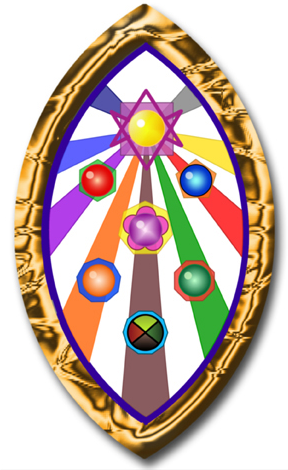
Cor Lucis is a new magical order in the Thelemic tradition. It was formed and is headed by Anna-Kria King. Temple Number One is located in Los Angeles and the largest number of members resides in the Los Angeles metropolitan area. Those outside this area must be willing to come to Los Angeles for initiation and at least annually for further ritual participation. Membership is by invitation only, though seekers are invited to submit an application.
Cor Lucis operates out of the Golden Dawn and Thelemic magical traditions. It offers members a graded program combining group and private ritual, study, and meditation. Students work with material from the Golden Dawn, the Kaballah, and the Tarot. The Book of the Law, received by Aleister Crowley in 1904, provides the framework for all of the Cor Lucis’s work.
Cor Lucis has attempted to strip the masculine bias from the Western magical tradition and honors both male and female participants. Learning the magical tradition and attaining a degree of self-mastery is seen as analogous to training for an Olympic event. Beginning students are expected to devote at least an hour a day to their own self-improvement and to attend group events every two weeks.
Membership: Not reported.
There is one center, in Los Angeles. (222 N. Manhattan Pl., Los Angeles, CA 9000)
Sources:
[ « back to TOC ]

Ecclesia Gnostica Universalis
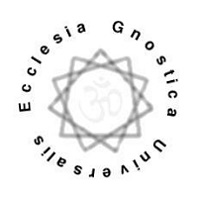
The Ecclesia Gnostica Universalis was founded in 2000 by several bishops in the Thelemic Gnostic tradition of Aleister Crowley (1875-1947) and active with the Ecclesia Gnostica Catholica, which is closely tied to the Ordo Templi Orientis. Since its founding, the Ecclesia Gnostica Universalis has been joined by several other Thelemic bishops, who together form the College of Bishops that leads the organization. Tau Aleph, one of the founders who had been a bishop in the Ecclesia Gnostica Catholica, notes that he had concluded that the church’s mass had lost is power in the concern to preserve its form as dictated by Crowley. The need to revise the mass and be open to changes that would bring it to life became a catalyst for the founding of the new church.
All of the bishops of the church have been consecrated in one (or more) of the lineages of apostolic succession that currently exist in the Gnostic and Thelemic community, primarily that passed to the Ordo Templi Orientis by Crowley from Jules-Benoit Doinel or Tau Valentin II (1842-1894). Tau Aleph had been consecrated by Grady McMurtry (d. 1985), who revived the Ordo Templi Orientis in America in the 1970s and led it for many years. Allen Greenfield (b. 1946), whose ecclesiastical name is Tau Sir Hasirim, was consecrated by Most Rev. Michael Paul Bertiaux of the Neo-Pythagorean Church based in Chicago and Tau Silenus of the Ecclesia Gnostica Catholica and Ordo Templi Orientis. Greenfield sits as a member of the North American College of Gnostic Bishops.
While clearly based in the Thelemic teachings initially articulated by Aleister Crowley, which emphasize the following of one’s own unique will (or destiny) as the best path to supreme realization, the bishops of the Ecclesia Gnostica Universalis have been open to insights drawn from the larger Gnostic tradition as it has emerged through the late twentieth century to the present. The church believes in the continuing evolution of the Gnosis and as such, believes rituals should also change. It encourages the creation of new Gnostic Masses that draw on variant traditions. It also encourages members to create personal rituals that assist them in their individual situation and path to realization.
The church exists to assist people to remember the gnosis (knowledge) they already have but have forgotten. The church is led by its bishops, but they attempt to limit their duties to necessary administrative matters while encouraging the membership to assume active leadership in spiritual matters. The assumption of administrative duties by the bishops frees the priests and priestesses in the church to concentrate on ritual and spiritual matters.
Bishops and worshipping communities of the Ecclesia Gnostica Catholica are found in Atlanta, Georgia; Austin, Texas; San Francisco, California; Portland, Oregon; St. Louis, Missouri; and Moscow, Russia.
Membership: Not reported.
For information: Tau Sir Hasirim (Allen Greenfield), bishop17@mindspring.com
Sources:
[ « back to TOC ]

Eglise Gnostique Catholique Apostolique
The Gnostic Catholic Apostolic Church
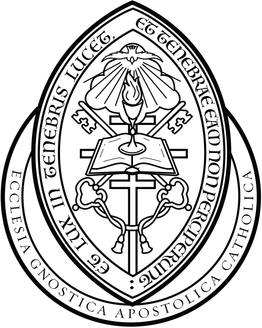
The Eglise Gnostique Catholique Apostolique (the Gnostic Catholic and Apostolic Church) was brought to the United States in 1970 with the appointment of Roger Victor-Herard as the primate of the church for North America, but it has its roots in the gnostic/mystical groups of eighteenth-century Europe. Through the centuries, gnostic Christianity (a form of Christianity considered heretical by the Roman Catholic Church) disappeared from public view. However, in the wake of the Reformation in the sixteenth century, groups such as the Rosicrucians claimed to possess the teachings of the ancient wisdom (i.e., the gnosis). By the end of the eighteenth century (in the relative freedom created by the French Revolution) attempts were made, initially by French Roman Catholic clerics, to reestablish the Gnostic church, and as early as 1800 a Msgr. Mauviel was consecrated as a bishop and established the Johannine Church of Primitive Christians.
A short time later, a second gnostic thrust was initiated by Eugene Vintras (1807–1875), whose gnostic movement ran into trouble with a revived Roman Catholic Church. In 1848 he claimed that in a vision Christ had consecrated him to the papal office and given him a new liturgy. After a brief period outside of France he returned to found, in 1865, the Sanctuary of the Interior of the Carmel of Elie in Lyon.
The Eglise Gnostique Catholique Apostolique, inspired by this growing gnostic milieu, can be traced to 1904 when Julius Houssaye (or Hussay) was consecrated by Paolo Miraglia-Gulotti, an Italian bishop who had been consecrated by Abp. Joseph Rene Vilatte of the American Catholic Church. Houssaye was a gnostic who under his ecclesiastical name Abbe Julio published several occult texts. He passed the leadership of the Gnostic Church to Louis Francois Giraud, whom he consecrated in 1911. Two years later, Giraud consecrated Jean Becaud, who took the ecclesiastical name Tau Jean II and later, as the first patriarch of the church, developed a considerable following in the city of Lyon. In 1918 he consecrated Victor Blanchard (Tau Targilius), who became head of the church in 1934. Blanchard, in part responding to pressures from the rise of Nazism, helped spread the Gnostic Church into Portugal, and on to Brazil. In 1945 Blanchard consecrated Roger Menard (Tau Eon II), who in 1946 consecrated Robert Ambelain (Tau Jean III). Ambelain consecrated Andre Mauer (Tau Andreas), who assumed the role of patriarch of the church.
It was Tau Andreas who named Pedro Freire primate of South America. Then in 1970, Dom Antidio Vargas, a bishop of the Brazilian Catholic Church, consecrated Pedro Freire as patriarch of the Eglise Gnostique Catholique Apostolique. As Mar Petrus-Johannes XIII, he succeeded Tau Andreas. Mar Petrus-Johannes XIII encouraged the spread of the church in the Americas and encouraged Roger Victor-Herard (d. 1989) to initiate work in the United States. In 1970 he named Herard (as Tau Charles) the primate of the North American branch of the church. In 1977 Mar Petrus-Johannes XIII died. The synod decided against naming a new patriarch. At that point the American branch became autocephalous (independent). The church is administered by the presiding bishop, Tau Charles Harmonius II, who has been president of the board of directors since 1984.
The Gnostic Catholic Church perpetuates a gnostic interpretation of Christianity and has instituted a sacramental ministry to that end. In the gnostic view, the world is the end product of successive emanations from God. Humanity is trapped in this material world. Through the gnosis (or secret wisdom), we may receive initiation and a way back to God. Christ, the logos, has been God’s agent in salvation by his bringing the gnosis to us. The church is the custodian of the gnosis.
The church is divided into several dioceses in the United States, and the one in the Midwest (Illinois) serves as its national headquarters.
Address: C/o The Most Rev. Msgr. Robert M. Cokinis, Cathedral of the Four Holy Crown Martyrs, 5215 Randolph St. W, Bellwood, IL 60104
Membership:
In 1995 the church reported approximately 3,000 members in the United States and 200 members in Canada.
Educational Facilities:
Athenea Theologica, Bellwood, Illinois.
Periodicals:
Journal of the Athenea Theologica.
Source:
[ « back to TOC ]

Franz Bardon Foundation
Franz Bardon (d. 1958) was an Austrian teacher of hermetic initiatory magic. His important texts were published in the 1950s in Germany, shortly before his death, and translated into English in the 1970s. Bardon’s three major books included a basic text on hermetic magic, a commentary on the Kabbalah (which he spelled Quabbalah), and a system of spirit evocation. These books found an audience among English-speaking readers, and the foundation was begun in 1986 to propagate Bardon’s teaching, provide a network among students of the books, and offer instruction in his system.
Address: C/o Jim Bardon, 1344 High St., #1-FBF, Denver, CO 80218
Membership: Not reported.
Periodicals: The Franz Bardon News.
References:
- Bardon, Franz. Initiation into Hermetics. Wupperthal, Germany: Deiter Ruggeburg, 1970.
- ———. Die Praxis der magischen Evokation. Freiburg/Breisgau, Germany: Verlag Hermann Bauer, 1956. Trans. as The Practice of Magical Evocation. Wupperthal, Germany: Deiter Ruggeburg, 1970.
- ———. Der Schkussel zur wahren Quabbalah. Freiburg/Breisgau, Germany: Verlag Hermann Bauer, 1957. Trans. as The Key to the True Quabbalah. Wupperthal, Germany: Deiter Ruggeburg, 1971.
Sources:
[ « back to TOC ]

Fraternitas L.V.X. Occulta
Fraternity of the Hidden Light
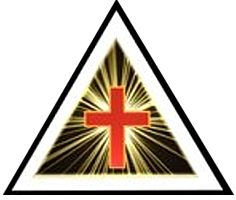
The Fraternitas L.V.X. Occulta, Latin for the Fraternity of the Hidden Light, was founded in Covina, California, in 1982, but traces its lineage to the U.S. section of the Hermetic Order of the Golden Dawn (OGD). According to the present leadership of the fraternity, at one point in the early twentieth century the head and three other officers of the OGD reorganized the order as a mystery school and transitional order to assist in bringing in the New Age, or Age of Aquarius. The present heads of the fraternity inherited this tradition, and during the mid-1980s they assumed a more public profile.
The fraternity has three main objectives: to act as a modern-day repository of the ancient wisdom; to train members for selfless service to humanity through application of the ancient wisdom; and to promulgate the ancient wisdom. Teachings are drawn from the writings of Hermes Mercurious Trismegistus, the legendary Egyptian magus, and the Qabalah. Instruction is also given in Tarot, alchemy, astrology, and occult psychology.
The fraternity is organized in three levels. An outer level trains new initiates in the growth into wisdom, love, and power. The second order is composed of those initiates who have developed harmony and balance within themselves and have received illumination, and whose higher self is in control of their lives. The third level consists of the great adepts and masters of the ages who guide the fraternity from the inner realms.
Members work through a curriculum of graded instruction in the occult, as well as instruction in meditation and ritual. Rituals are used to invoke quantum changes in the consciousness (i.e., high magic). Probationers pass through a period of at least three months in which a basic knowledge of the occult must be acquired. They may then apply for full membership. In 2008 the head (steward) of the fraternity was Paul A. Clark.
Membership:
In 1995 the fraternity reported five temples and members in 17 countries worldwide. The Grand Preceptory of Europe is located in Cambridge, England. The international affiliations are located in the United Kingdom, Spain, France, Japan, Canada, and Australia. There are study groups in Boston, Massachusetts; Dallas, Texas; Denver, Colorado; and several cities in California.
Address: International Headquarters, Box 5094, Covina, CA 9172
Periodicals:
The Hidden Light • The Threshold • The Path of Return • The Halls of Thoth • The Book of the Rose.
References:
- Clark, Paul A. The Book of the Rose. Covina, CA: Fraternity of the Hidden Light, 1985.
Sources:
[ « back to TOC ]

Fraternitas Saturni
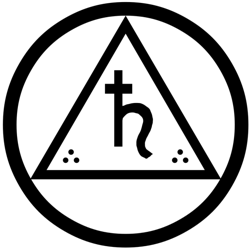
Fraternitas Saturni (lat.: "Brotherhood of Saturn") is a German magical order, founded in 1926 by Eugen Grosche a.k.a. Gregor A. Gregorius and four others. It is one of the oldest continuously running magical groups in Germany. The lodge is, as Gregorius states, "concerned with the study of esotericism, mysticism, and magic in the cosmic sense". Today its purpose is in working on the spiritual evolution of humanity by means of development and advancement of the individual being. This is to be attained by mental and ethical schooling of the personality and complete mastery of esotericism and occultism. The FS adopts a system of degrees, ending with the 33rd as highest degree to reach this goal. The lodge claims further no political or economical objectives. It propagates ideals of freedom, tolerance and fraternity.
Brief History:
The Fraternitas Saturni was founded in the wake of the so-called "Weida Conference" in 1925. It succeeded the "Collegium Pansophicum, Orient Berlin" (Pansophia Lodge), a Rosicrucian magical order founded by Heinrich Traenker, a notable German occultist of the time. The Weida Conference was meant to consolidate Aleister Crowley's claims to be the Outer Head of Ordo Templi Orientis and the expected World Teacher. The conference consisted of Crowley's entourage of Leah Hirsig, Dorothy Olsen, and Norman Mudd and the members of Heinrich Traenker's "Pansophia Lodge". Traenker had served as a X° National Grand Master of the German O.T.O. under Theodor Reussup until Reuss's death. Also attending the conference were the notable film pioneer Albin Grau and Gregor A. Gregorius.
The conference was not a smooth event and Traenker withdrew his support of Crowley. The differences between Traenker and Crowley led to a schism in the Pansophical Lodge between the brothers who disagreed with Crowley and those who accepted Crowley's Law of Thelema, including Gregorius and Grau. Following these differences the Pansophical Lodge would be officially closed in 1926. Those brothers of the Pansophia Lodge who accepted the teachings of Crowley would join Grosche in founding the Fraternitas Saturni - but without Albin Grau.
On Easter 1928, the Fraternitas Saturni was officially founded in Berlin. The Lodge made a formal acceptance of the Book of the Law but they would not answer to Crowley. The FS still thought of him as an important teacher and included the Law of Thelema in most of its teachings, while divorcing itself from direct contact with him. This resulted in the FS developing a different take on the idea of Thelema, which is reflected in the rituals and magical techniques of the brotherhood. The emphasis of the FS lies more on astrological and Luciferian teachings, rather than on Qabalah and Tarot compared to other western magical orders founded in the early 20th century. Because of its unique approach to modern occultism, the FS is considered by many modern authors to be the most influential German magical order.
In 1936, the Fraternitas Saturni was prohibited by the Nazi regime. Gregorius as well as other leaders of the lodge emigrated in order to avoid imprisonment, but in the course of the war Grosche was arrested for a year by the Nazi government. After World War II Gregorius reformed the FS. The end of World War II saw the reactivation of Fraternitas Saturni. First from Riesa in Eastern Germany and later from Berlin, Gregorius tried to contact the Brothers and found lodges in several German cities. By 1957 lodges existed in Düsseldorf, Hamburg, Frankfurt and Stuttgart, with the Grand Lodge in Berlin. In 1960 the FS had, according to its membership list, about 100 members, but in 1962 internal problems led to the expulsion of several members. Following Grosche's death in 1964, the lodge experienced confusion concerning the position of Grandmaster. This resulted in a schism between the Frankfurt lodge and the main body of the Order. In 1969 the two separate groups of the FS were reunified, ending the former conflicts.
List of grandmasters: Gregor A. Gregorius (1928–64) (Eugen Grosche) — Roxane (1964/65) — Daniel (1966–69) — Jananda (1969) — Andrzey (1969–77) — Horus (1977/78) — Drakon (1978–82) — Hamupe (1983–86) — Babacan (1986–90) — Thot (since 1990).
In 1979 some brothers left the Fraternitas Saturni to form their own magical order, called the Ordo Saturni. Although the original lodge kept the name by adjudication, Ordo Saturni claims the "true succession" of the order.
Membership: The Fraternitas Saturni became a legal organisation, registered as "Fraternitas Saturni, e.v." in 1957. The Fraternitas Saturni is, beside incorporating new attempts on magic, still working on its traditional roots and enhancing the concept of "Saturn-Magic" as the center of its work. On its 75th anniversary (2003), the lodge incorporated another order of the so-called "Immanuel-succession", the "Grand-Lodge Gregor A. Gregorius". This unification effectively doubled the size of its membership. The Fraternitas Saturni has working lodges in Germany, Austria and Switzerland. There was a branch in Canada (based in Toronto) in the late 1970s.
Initiatory Structure of the Fraternitas Saturni:
| Old and new system of degrees |
| Pronaos |
| Pre-1960 |
Label |
Post-1960 |
Label |
| 0° |
Novize |
0° |
Neophyt |
| 1° |
Neophyt |
1° |
Scholasticus Voluntatis |
|
|
2° |
Scholasticus Verbi |
|
|
3° |
Scholasticus Vitae |
|
Frater or Soror |
4° |
Frater / Soror |
|
|
5° |
Servus Juris |
|
|
6° |
Servus Templi |
|
|
7° |
Servus Ritus |
| 2° |
Gradus Mercurii |
8° |
Gradus Mercurii |
|
|
9° |
Servus Pentaculi |
|
|
10° |
Servus Tabernaculi |
|
|
11° |
Servus Mysterii |
| R + C |
| 3° |
Gradus Solis |
12° |
Gradus Solis |
|
|
13° |
Servus Selectus Imaginationis |
|
|
14° |
Servus Selectus Magicus |
|
|
15° |
Servus Selectus Elementorum |
|
|
16° |
Sacerdos Aiones |
|
|
17° |
Sacerdos Maximus |
| 4° |
Gradus Pentalphae |
18° |
Magus Pentalphae |
| 5° |
Gradus Sigilii Salomonis |
19° |
Magus Sigilii Salomonis |
| 6° |
Magus Heptagrammatos |
20° |
Magus Heptagrammatos |
| S. S. G. |
|
|
21° |
Magister Selectus Sapientiae |
|
|
22° |
Magister perfectum Potestatum |
|
|
23° |
Magister Magnificus Pneumaticos |
| 7° |
Templarius |
24° |
Princeps Arcani |
| 8° |
Gnosticus |
25° |
Magister Gnosticus |
| 9° |
Magister Aquarii |
26° |
Magister Aquarii |
|
|
Hochwürden |
|
|
27° |
Groß-Komtur |
|
|
28° |
Groß-Kanzler |
|
|
29° |
Groß-Inspekteur |
|
|
Hochwürdengrade |
|
|
30° |
Magister Maximus Cados |
|
|
31° |
Magister Templarius |
|
|
32° |
Princeps Illustris Tabernaculi |
|
"Meister vom Stuhl" / Grandmaster |
33° |
Gradus Ordinis Templi Orientis Saturni |
Originally, there existed nine degrees within the Fraternitas Saturni, not including the Novice, who was not a regular member but a candidate to the Order, and the Grandmaster, which was not a degree in those days but a position held by a single master of the highest degree, guiding the affairs of the lodge. A new member of the Pronaos held the degree of Neophyt (Apprentice), the second degree was called Gradus Mercurii (Journeyman), followed by the Gradus Solis (Master). The first degree in the second order of R + C was called the Gradus Pentalphae, followed by the Gradus Sigilli Salomonis and the Magus Heptagrammatos. The third order called the S. S. G., was formed by the degrees of Templarius, Gnosticus and Magister Aquarius.
The system of degrees was changed in 1960. After the reformation of the degree system and its expansion to 33 degrees, the Gradus Mercurii became 8°, Gradus Solis became 12° and the Gradus Pentalphae became 18°. The other Grades were repositioned as well. The Templarius were renamed Princeps Arcani (24°) and a new degree of Magister Templarius (31°) were installed.
In the 1950s, the first two degrees of the Fraternitas Saturni were of theoretical character. The first degree to be attained by work was the Gradus Mercurii (8°). The conditions centered on basic understanding of esoteric principles and a written essay. The second degree to be attained by work was the Gradus Solis (12°), which required a deeper understanding of lodge ritual and two essays. This degree qualified the Initiate to lead a lodge of the FS. Today these degrees require theoretical understanding as well as practical work in the field of occultism.
Another important degree was the Frater (4°), which contained an oath of lifelong commitment. This was later changed and the vow was made part of the attainment of the Gradus Solis. After 1960, the Gradus Solis marked the member as a part of the inner order, the so-called "Grand-Lodge Fraternitas Saturni".
Much speculation has been made around the content of the Gradus Pentalphae (18°), the degree of the pentagram or the five pointed star. As far as it is known, the work of the Gradus Pentalphae was centered on tantric mysticism and sex magic. As many faked documents have been published it is hard to verify the rumors about the contents of this degree.
The Initials of the degree of Gradus Ordinis Templi Orientis Saturni (33°) are similar to the name of the egregore of the lodge - GOTOS.
References:
- Stephen E. Flowers. Fire & Ice: The History, Structure and Rituals of Germany's Most Influential Modern Magical Order: The Brotherhood of Saturn. St Paul, MN: Llewellyn, 1994
- Stephen E. Flowers. The Fraternitas Saturni: History, Doctrine, and Rituals of the Magical Order of the Brotherhood of Saturn. 2018.
- Tobias Churton. The Beast in Berlin: Art, Sex and Magick in the Weimar Republic. Rochester, VT: Inner Traditions, 2014.
Sources:
[ « back to TOC ]

Gnostic Alchemical Church of Typhon-Christ
The Gnostic Alchemical Church of Typhon-Christ is one of several magical Gnostic groups to arise in the wake of the dissemination of information in the 1980s of the 1976 discovery of what is termed the New Aeon English Qaballa (also spelled Cabala). The New Aeon refers to the period beginning in 1904, when Aleister Crowley (1875–1947), considered the founder of the Thelemic magical tradition, received a work, The Book of the Law, from a preternatural being named Aiwass. Interpreting the book and following its dictates has been integral to Thelemic practice through the years. The book, however, was by no means easily understood and in fact noted that neither Crowley, nor his magical child (Charles S. Jones, 1886–1950) would be able to fully interpret it, but that “one cometh after him [i.e., Jones], whence I say not, who shall discover the Key of it all” (III, 47). Over the years various people had attempted unsuccessfully to decipher it, but in 1976 the independent Thelemite Jim Lees discovered a new interpretive tool that uses the English language in a manner analogous to the Hebrew Kaballah. He and two associates, Jake Stratton-Kent and Carol Smith, subsequently announced his findings to the larger Thelemic community, to a mixed response. Over the succeeding years, Kaaba Publications, headed by Smith, began releasing books expanding on the techniques of the English Qaballa. While most Thelemites rejected Lees’s work, some found it a very valuable tool in understanding The Book of the Law. Among the first groups to utilize the discoveries of the English Qaballa was the Hermetic Alchemical Order of the QBLH.
Founded as knowledge of the English Qaballa grew, the Gnostic Alchemical Church of Typhon-Christ has as its stated goal the spreading of knowledge/wisdom (gnosis) created through the application of the English Qaballa to the Holy Books of Thelema, especially The Book of the Law.
Membership is open to those interested in exploring Thelema, and individual initiations are arranged at astrologically determined times when the Sun is in conjunction with Venus, Mercury, and/or Jupiter.
The founders of the Gnostic Alchemical Church of Typhon-Christ have continued a relationship with Jim Lees and Carol Smith, who serve as editors of The New Equinox: The British Journal of Thelema, through which a variety of articles on Thelema in general and the New Qaballa have been released. The church maintains electronic versions of older issues on its Web site. The church also maintains a relationship with Kiblah Publishing in the United Kingdom, which publishes The New Equinox and has released an edition of The Book of the Law with added materials on the English Qaballa.
The church is a supporting member of the Aleister Crowley Foundation (A.C.F.).
Membership:
Not reported. Members are found in France, England, Canada, and the United States.
For information: pelicanus@webtv.net
References:
- The Holy Books of Thelema. York Beach, ME: Samuel Weiser, 1988.
Sources:
- Gnostic Alchemical Church of Typhon-Christ. {site url} (not working).
[ « back to TOC ]

Hermetic Order of the Golden Dawn
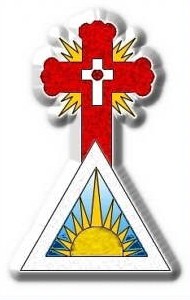
The Hermetic Order of the Golden Dawn is the European-headquartered Hermetic Order of the Golden Dawn (H.O.G.D.), an organization dedicated to the continued preservation of that body of knowledge known as hermeticism, or the western esoteric tradition. The order is rooted in the hermetic and Rosicrucian traditions that teach and practice the triad of spiritual disciplines known as the Trivium Hermeticum; theurgy (magic), astrology, and alchemy. The theurgy includes Qabalistic, Egyptian, Enochian, and Chaldeaen magic. The order promotes the teachings of the original Hermetic Order of the Golden Dawn, the magical fraternity founded in London in 1888 by William Wynn Westcott (1848–1925), S(amuel). L(iddell). MacGregor Mathers (1854–1918), and R. Woodman.
The founders used certain documents known as the Cipher Manuscripts, which had been encrypted using the Trithemius cipher by Freemason scholar Kenneth MacKenzie (1833–1886). MacKenzie had been initiated as a Rosicrucian in Vienna by the Hungarian count Apponyi in 1850. This provides the link to Golden’s Dawn’s Rosicrucian lineage.
Upon his return to England, MacKenzie founded the esoteric society that later became the Golden Dawn under the original name Fratres Lucis, or Brethren of the Cross of Light. MacKenzie’s temple was number one, the Bristol temple of F. G. Irwin was number two, and the Isis-Urania temple, where the Golden Dawn was founded, became number three.
During a visit to Paris in 1891 MacGregor Mathers reestablished contact with MacKenzie’s continental European adepts, whom he referred to as the “secret chiefs.” MacGregor Mathers founded the Second Order of the Golden Dawn’s projected three-order system, Rosae Rubeae et Aureae Crucis, or R.R. et A.C. He eventually moved permanently to Paris to be close to his Rosicrucian teachers.
Following a rebellion of adepts in London in 1903 and a press scandal involving the Golden Dawn name, in 1906 MacGregor Mathers changed the name of the order to the Rosicrucian Order of Alpha et Omega, keeping the Hermetic Order of the Golden Dawn as its outer order.
According to the order’s Web site, in 2002 Golden Dawn leaders Jean-Pascal Ruggiu and David Griffin met in Paris with representatives of MacKenzie and MacGregor Mathers’s continental European secret chiefs, from whom they received the initiation rituals and curriculum for the Golden Dawn’s projected third and final order. These materials allegedly include the secrets of Hermetic Inner Alchemy, which uses the physical body in a prima materia, first matter. According to the Golden Dawn, this opus magnum, great work, is a system that uses the subtle fires of the body, including love and sexuality, to transmute the physical body into higher and more refined forms of energy. The goal is to project consciousness into a solar body and the moment of death, thus rendering the alchemist consciously immortal.
As originally designed by its founders, the Golden Dawn was to be an hermetic society dedicated to the philosophical, spiritual, and psychic evolution of humanity. It was supposed to be a school and a repository of knowledge concerning the principles of occult science and the various elements of western philosophy and magic. Symbolism used within the H.O.G.D. came from a variety of religious sources, and people from very diverse esoteric religious paths found themselves at home with the Golden Dawn.
The order owns the Hermetic Order of the Golden Dawn trademark in the European Union and the Hermetic Order of the Golden Dawn International trademark in Canada. In the United States, they operate by legal agreement adopted by the U.S. District Court as the Hermetic Order of the Golden Dawn, an outer order of the Rosicrucian Order of Alpha et Omega. They also own the R.R. et A.C. trademark of their second order, Ordo Rosae Rubeae et Aureae Crucis and the Alpha et Omega trademark of their three-order superstructure founded by MacGregor Mathers in 1906, Ordo Rosae Crucis, Alpha et Omega.
The Initiatory Structure of the G∴D∴
The Hermetic Order of the Golden Dawn further developed the theurgical (magical) side of the Hermetic and Rosicrucian traditions. A stream of Jewish, Qabalistic influence entered the Hermetic Order of the Golden Dawn (H.O.G.D.) from the order of the “Asiatic Brethren”, another Rosicrucian order of eighteenth Century Germany. The H.O.G.D., therefore, modified the Gold und Rosenkreutz grade structure, causing it to correspond to the Sephiroth on the Qabalistic tree of life. Moreover, the H.O.G.D. organized these grades into a three order system and attributed certain magical (elemental and astrological) forces to each of the grades, as follows:
| Name |
Element |
Planet |
Sephira |
Kabbalistic World |
|
First Order (Hermetic Order of the Golden Dawn) |
| Neophyte (0=0) |
(Introductory) |
|
|
Assiah |
| Zelator (1=10) |
Earth |
Earth |
Malkuth, Kingdom |
| Theoricus (2=9) |
Air |
Moon |
Yesod, Foundation |
| Practicus (3=8) |
Water |
Mercury |
Hod, Splendour |
| Philosophus (4=7) |
Fire |
Venus |
Netzach, Victory |
|
Second Order (R.R. et A.C.) |
| Portal |
Spirit |
(Introductory) |
|
Yetzirah |
| Adeptus Minor (5=6) |
|
Sun |
Tiphareth, Beauty |
| Adeptus Major (6=5) |
|
Mars |
Gevurah, Might |
| Adeptus Exemptus (7=4) |
|
Jupiter |
Chesed, Mercy |
|
Third Order (Name Unknown) |
| Magister Templi (8=3) |
|
Saturn |
Binah, Understanding |
Briah |
| Magus (9=2) |
|
Zodiac |
Chokmah, Wisdom |
| Ipsissimus (10=1) |
|
|
Kether, Crown |
The grades of Neophyte through Philosophus comprise the First, or Outer Order. A grade called the "Portal" comes between 4=7 and 5=6, and this contains some very powerful symbolism on the transition between the Outer and Inner "Mysteries." The three Adept grades comprise the Second, or Inner Order (Rosae Rubeae et Aureae Crucis), and are normally only open to those who pass rigorous examinations and are chosen on other qualifications. The final three grades (which refer to the "Supernal" sephiroth) comprise the Third Order of Masters. There is considerable disagreement among Order sources as to whether living human beings can attain these final mystical grades (not unlike the Bodhisattvas of Buddhism, it seems).
Address: PO Box 1757, Elfers, FL 3468
Membership: In 2008, 4,215 members were reported.
References:
- Howe, Elllic. The Magicians of the Golden Dawn. London: Routledge and Kegan Paul, 1972.
- King, Francis. Ritual Magic in England: 1887 to the Present Day. London: New English Library, 1972.
- Regardie, Israel. The Golden Dawn. 4 vols. Chicago: Aries Press, 1937–1940.
- ———. What You Should Know about the Golden Dawn. Phoenix, AZ: Falcon Press, 1983.
- Wescott, Wynn. History of the Societas Rosicruciana in Anglia. n.d.
Sources:
[ « back to TOC ]

The Hermetic Order of the Golden Dawn
Outer Order of the Rosicrucian Order of Alpha et Omega (O.A.)
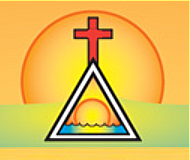
The Hermetic Order of the Golden Dawn, outer order of the Rosicrucian Order of Alpha et Omega, is the U.S. jurisdiction of the European-headquartered Hermetic Order of the Golden Dawn, founded in the United Kingdom in 1888. The order has been credited with constructing a brilliant synthesis of mythical and magical material from varied sources of the western magical tradition. When the order was discontinued early in the twentieth century, its work was carried on by organizations founded by several of its members, and most of its materials have been published. A most important event was the publication of its main rituals by Israel Regardie (1907–1985).
In the early 1980s Regardie was considered by many in the occult world as the last contact point with the era of the Golden Dawn and Aleister Crowley (1875– 1947). Regardie and his student, Cris Monnastre, resurrected the Hermetic Order of the Golden Dawn and the Ordo Rosae Rubeae et Aureae Crucis (R. R. et A. C.). In 1982, under Regardie’s guidance, Monnastre founded the Osiris Khenti Amenti Temple in Los Angeles, California. Over the succeeding years, other temples were opened.
In 1988 Monnastre retired from the Golden Dawn, leaving the Golden Dawn adept David Griffin as his successor. In 1999 Griffin merged the order with the European-headquartered Hermetic Order of the Golden Dawn, forming a triad of chiefs with Ukrainian nobleman Marquis Nicholas Tereschenko and the reigning imperator of S. L. MacGregor Mathers Ahathoor Temple Number 7 in Paris, Golden Dawn adept Jean Pascal Ruggiu.
The Ordo Rosae Rubeae et Aureae Crucis operates temples of the Hermetic Order of the Golden Dawn around the world. The United Confederation of Independent and Autonomous Temples, officially known as the Confederatio Fraternitatis Rosae Crucis (C. F. R. C.), consists of temples from around the world, descending with initiatic and/or chartered lineage and affiliation from the Hermetic Order of the Golden Dawn, as reinstituted by Regardie and Monnastre. Within the confederation, it is believed, are reunited initiatic and/or chartered lineages deriving from the Hermetic Order of the Golden Dawn, the Ordo Rosae Rubeae et Aureae Crucis, and the several groups formed from them early in the twentieth century, specifically the Stella Matutina, the Ordo Rosae Crucis, Alpha et Omega (Rosicrucian Order of Alpha et Omega), the Holy Order of the Golden Dawn (deriving from A. E. Waite), and the Order of the Sacred Word.
The order offers ritual initiation as well as instruction in the Rosicrucian system of ceremonial magic. It is claimed that this system facilitates personal as well as spiritual development through a systematic program of ritual initiation and the spiritual disciplines of ceremonial magic (a powerful tool for self-realization and transformation).
The order distinguishes itself from several other groups claiming roots in the Golden Dawn that engage in what the order views as dubious practices, in particular “initiation by proxy”or “astral initiation.”All initiations marking the progress of the student are performed while the student is physically in the presence of the initiator, during which time, it is believed, the actual transmission of magical energies occurs.
The European-headquartered Hermetic Order of the Golden Dawn operates in the United States by a legal agreement adopted by the U.S. District Court as the Hermetic Order of the Golden Dawn, the outer order of the Rosicrucian Order of Alpha et Omega.
Membership: In 2008 2,130 members were reported.
Remarks: In 1982 Cris Monnastre was given a number of Israel Regardie ’s personal magical accoutrements, among which were Regardie’s Elemental Weapons, a complete Rosicrucian chess set, and a Rose Cross that he had inherited from Elsa Barker (an important historical link in the Rosicrucian Order of Alpha et Omega between Mathers’Ahathor Mother Temple, No. 7, in Paris and the temples of the A. O. in the United States). She has donated these items to the R. R. et A. C.
Address: 270 N Canon Dr., Ste. 1302, Beverly Hills, CA 90210
References:
- Regardie, Israel. The Golden Dawn. 4 vols. Chicago: Aries Press, 1937–1940.
- ———. The Middle Pillar. Chicago: Aries Press, 1938.
- ———. My Rosicrucian Adventure. [1936.] St. Paul, MN: Llewellyn Publications, 1971.
- ———. What You Should Know about the Golden Dawn. Phoenix, AZ: Falcon Press, 1983.
Sources:
[ « back to TOC ]

Hermetic Order of the Morning Star International
Alpha Ωmega Rosicrucian Mystery School
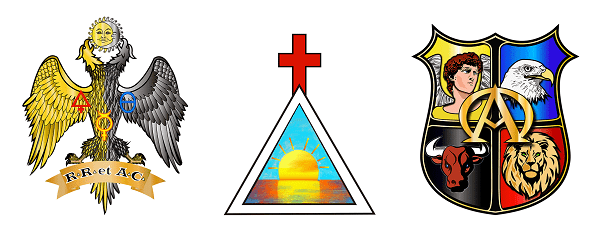
The Hermetic Order of the Morning Star International Golden Dawn – Canada is the Canadian jurisdiction of the European-headquartered Hermetic Order of the Golden Dawn, founded in 1888. It is a worldwide fraternity dedicated to the “great work,”the higher development of spiritual growth through the magical way of life. The order believes that magic is a powerful system of inner growth and spiritual development. As a mystery school, it is designed to take the student step-by-step to the door of adepthood. The adept in the making learns the “secrets”of listening and hearing to what is thought of as one’s inner voice of light, often called the “higher genius”or “holy guardian angel.”
The order owns the Hermetic Order of the Golden Dawn International trademark in Canada. They also own the Canadian R.R. et A.C. trademark of their Second Order, Ordo Rosae Rubeae et Aureae Crucis, and the Canadian Alpha et Omega trademark of their three-order superstructure founded by S. L. MacGregor Mathers in 1906, Order Rosae Crucis, Alpha et Omega.
Students are taught through a series of graded lessons from the starting point of neophyte. Each grade has a series of lessons, more than 175 of which constitute the lessons for the outer order (neophyte to philosophus). Students receive the lesson for their grade, and they work at their own speed. The student is tested on each grade before being passed into the next grade. The movement from grade to grade is marked with an initiation ceremony held in the Temple of Isis Mighty Mother in southern California, or if a person cannot come to the temple, initiations may take place through what is termed an “astral initiation.”
The actual teachings of the order are given to members only, but they flow from the now generally well documented teachings of the western mystery tradition found in the material produced by and written about the Hermetic Order of the Golden Dawn. Almost all of the rituals and teaching materials of the lesser and outer schools originally produced for the Golden Dawn early in the twentieth century have been published, and during the 1980s several groups appeared that directly draw upon these materials. Lessons of the Morning Star include the study of mystical Christianity, Qabalah, Egyptian mysteries, philosophy, Tarot, Greek mysteries, alchemy, astrology, astral travel, clairvoyance, and ritual magic.
V.H. Frater T.D.L., the imperator, and V.H. Soror T.F., prae monstratrix, were the leaders of the order in 2008.
The order has established the Golden Dawn Forum, an email list with free discussion on subjects including Tarot, Qabalah, hermetics, healing, and initiation. A Western Mysteries Form was created as an Internet mailing list for serious discussion of hermetics, ritual, and alchemy. Sincere students are encouraged to join.
Address: 4035 E Guasti Rd., Ste. 306, Ontario, CA 91761
Membership: In 2008, 926 members were reported in Canada.
Periodicals: Sword of Wisdom.
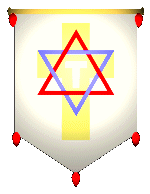
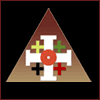
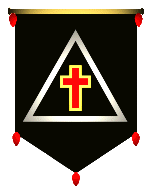
Sources:
[ « back to TOC ]

Holy Order of Ra-Hoor-Khuit
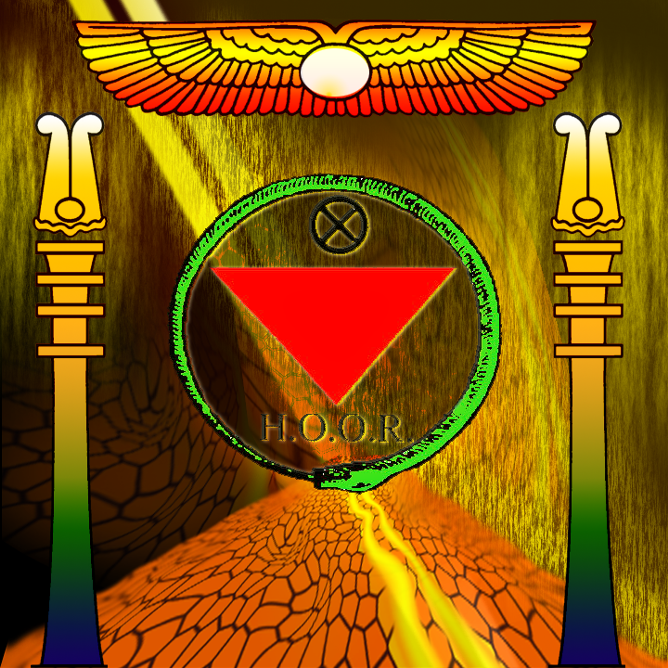
The Holy Order of RaHoorKhuit (H.O.O.R), conceived in 1978 and founded in 1991, is an outer order of Thelema established to fulfill and teach the concepts and principles of the method of theurgy (magic) known as Thelema. The teachings of Thelema (from the Greek word for “will”) derive from Liber Al vel Legis (The Book of the Law), a small volume dictated to the eminent magical theorist and practitioner Aleister Crowley (1875–1947) by a praeterhuman intelligence known as Aiwass in 1904. The teachings of Thelema are generally summarized in several of the statements from Liber Al: “Do what thou wilt shall be the whole of the Law”and “Love is the law, Love under will.”
In essence, Thelema teaches that every human being is a complete, unique, and divine entity (a star). Each person has a unique purpose (destiny), which is the law. Each person’s function is to follow one’s destiny. Love serves as the agent, under the regency of will, that binds all things in their course. Thelemites see the law of Thelema as a law of freedom casting off the authority of priests and demanding that individuals learn to listen internally, by which method the will is discerned. The individual is thus empowered to decide upon the course of his or her own life — associations, movements, living arrangements, and so on. “Do what thou wilt…”does not mean “do anything you want”; rather, it suggests that having discovered one’s destiny or purpose, that becomes the sole guide for action in the world. H.O.O.R. also teaches a method of theurgy that facilitates the discovery of the will and provides guidance for dealing with all aspects of life on planet earth.
The order was headed by Ray Eales (b. 1958), who took the lead in its formation. H.O.O.R. is organized in temples and lodges, and membership is open to men and women. Progress is through grades attained by study, accomplishment, and initiation. The lodges serve as instruments of fellowship, education, and the encouragement of society in the adoption of thelemic principles. The order is closely associated with the Abbey of Thelema, headed by Gregory von Seewald.
The order is administered by a council of generals chosen by the overseer, who holds the position for life. The overseer and the council of generals remain anonymous according to the order’s constitution. In 2008 the overseer was identified as “Frater 939.”
Address: Box 24691, Tampa, FL 33623
Membership: As of 1997 there were more than 100 members of H.O.O.R.
Periodicals: Warriors LVX.
References:
- Preliminary Thoughts on H.O.O.R. Old Greenwich, CT: Holy Order of RaHoorKhuit, 1994.
Sources:
[ « back to TOC ]

Illuminates of Thanateros

The Illuminates of Thanateros (a.k.a. the Pact) is the premier occult society of Chaos Magic. Originally described as the spiritual heir to the Zos Kia Cultus, the IOT is focused on practical results, self-development, and personal evolution. Just as the name Thanateros suggests, we seek to triumph over the dualistic nature of occult philosophy through magical technology and technique divorced from cultural limitations. Our philosophy can be summed up by the phrase, “Nothing is True; Everything is Permitted,” as presented in the book Liber Null and Psychonaut. The perfection of magical technique and production of fruitful results take primacy over mere philosophy and idle theory. We pride ourselves on being a close-knit community of magicians who embody the principles of daring, creativity, and action. We are not a melting pot, but rather a crucible that welcomes magicians of different backgrounds, races, genders, and sexualities to forge the tools of a new magical age.
Most magical societies are based around ancient social hierarchies and customs, but in the 1970s, a new magic and its adherents appeared as a new challenger. This magical system, developed by Peter J. Carroll and Ray Sherwin in London’s East End, was named Chaos Magic and was an attempt to break from old anachronisms and to replace superstitions with a magical system based around pragmatic, testable, and individual experiences. The original practitioners officially formed the Illuminates of Thanateros (IOT) in an Austrian castle and set out to change the world.
IOT, due to Chaos Magic, is highly individualistic and bases rank on magical skill and obligations to the order. This meritocratic approach to governance is highly contrasted with other magical orders, but it has caused schisms, such as the Ice War, which split the group along political lines. IOT’s members attempt to achieve the Gnostic state, an ecstatic state of altered consciousness, which will allow the magicians to surpass any mental blocks and perform magic of their choosing. One such ritual is the Invocation of Baphomet, where chaos magicians can summon a manifestation for communing with different consciousness or altering physical reality.
The Illuminates of Thanateros is essentially a practical Order, acting to organise local groups (Temples) and larger meetings, where members can take part in magical work in a group context. Plenty of other organisations exist for people who simply wish to read about magic or wish to practice on their own. The IOT strives for excellence in magical technique for those who are sufficiently self-motivated to make that effort.
Chaos Magic
The Illuminates of Thanateros represent the "organised" side of what is usually called Chaos Magic. Chaos Magic covers a variety of approaches which have in common an emphasis on the changing of belief as the core technology of magick. We take on a belief in order to achieve a particular effect on ourselves or our circumstances. The belief is only 'true' for as long as we use it; belief becomes the chief tool of magickal transformation and sorcery rather than the envelope of 'truth' inside which the magick is performed.
Gnosis
Chaos Magicians also emphasize 'gnosis', or the achievement of an "altered state of consciousness". Gnosis may be achieved through excitation to the point of mental saturation via e.g. dancing, drumming, sex etc., or through inhibition of the normal mental/emotional functions through prolonged meditation, stillness, breath control etc. The result in both cases is cessation of the internal monologue and a focussing of the powers of consciousness onto a single aim or symbol.
Temples
IOT Temples are autonomous, provided they follow a few basic rules, which keep the IOT's identity intact. This means that there isn't a single type of work that all Temples will engage in - each is an affinity group with its own specifications. Throughout the Pact, the variety of working paradigms and magical models used is quite extensive.
Membership is open and free to all who wish to join IOT. They see themselves as socially responsible, so they often encourage members, and even nonmembers, to perform spells and rituals for the betterment of all.
The minimum requirements for admission are 6 months unbroken recorded work on Liber MMM (see reading list below) and if geographically possible some work with an IOT group or Temple. During this six-month period, you are referred to as a Novice and you have a Mentor, a contact within the IOT who supports you in your work. The work programme you are required to do for a minimum of six months includes:
- Banishing Rituals: master a couple of these - e.g. Gnostic Pentagram & IAO.
- Dreamwork: keep a record of your dreams and suggest interpretations.
- Metamorphosis: self-transforming magic deliberately undertaken.
- Asana: sitting still, practice this on its own then within other work.
- Pranayama: breath control - practice this on its own and in asana, as part of motionless-no-thought exercise, 30 minutes minimum daily.
- Sigils, Mantras: learn how to create and use these.
- Divination: develop and record divination skills - e.g. Tarot spreads, etc.
- Any spells, rituals, or talismans done: keep a record of how & why you did these.
- Image Concentration: visualisation of images in the mind's eye to gain trance.
- Object Concentration: staring at objects, e.g. wall, clouds, in order to gain trance.
- Sound Concentration: repetition of mantras or meaningless phrases to assist trance.
References:
- Peter J Carroll. Liber Null and Psychonaut. This is the original manual of the IOT. It contains Liber MMM, which is the training schedule for entry into the IOT. ISBN 0-87728-639-6. Pub. Samuel Weiser.
- ———. Liber Kaos. This book contains Liber Pactionis, the description of the Pact of the IOT. ISBN 0-87728-742-2. Pub. Samuel Weiser.
- ———. The Apophenion. - wide-ranging consequences of chaos magick theory.
- Ramsey Dukes - any of his brilliant meditations on magick, including:
- ———. SSOTBME. - one of the earliest keys to the chaos current. ISBN 1-903548-00-4.
- ———. What I Did In My Holidays. - essays. ISBN 1-869928-520.
- ———. Uncle Ramsay's Little Book of Demons. ISBN 1-904658-09-1.
- Dave Lee - Chaotopia! - Chaos magick and higher consciousness. ISBN 1869928-881.
- Alan Chapman - Advanced Magick For Beginners - new ideas in the chaos current. ISBN 078-1-904658-41-2.
Sources:
[ « back to TOC ]

Monastery of the Seven Rays
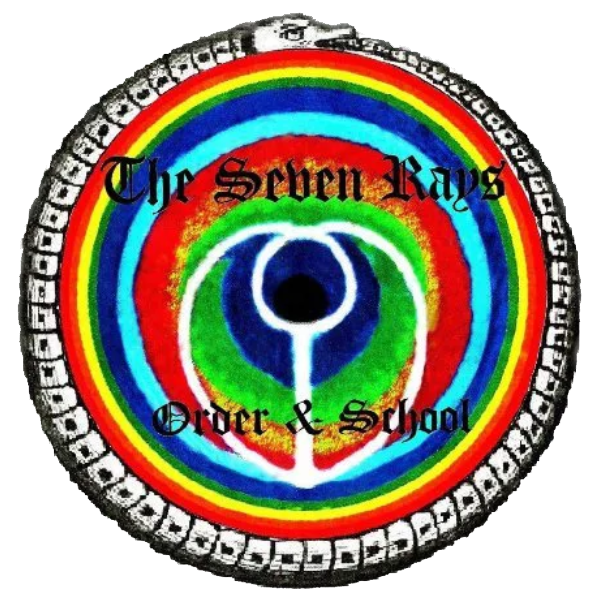
The Monastery of the Seven Rays is the organizational umbrella given to the various magical activities focused in the person of Michael Bertiaux (b. 1935), a noted Chicago occultist-magician. Bertiaux is the inheritor of the French Martinist tradition, which he received through his magical training in Haiti and by his ordination and consecration as bishop of the Neo-Pythagorean Church.
Louis Claude de Saint-Martin (1743–1803) was a Roman Catholic raised in France. As a soldier, he met Martines de Pasqually, a disciple of Emanuel Swedenborg and Rosicrucianism. De Pasqually founded an occult order, the Order of the Elect Cohens, which Saint-Martin joined in 1768. After de Pasqually’s death in 1774, Saint-Martin became the focus of a group of occultists. He began to write books (published posthumously), and a movement, the history of which is still known only in fragments, was born.
By the end of the eighteenth century, a branch of the Martinist Order had been established in Haiti. This group continued to function after Haiti gained its independence. It tended to blend with vodou. In the 1890s there was a revival movement in the Martinist Order, emphasizing a purist strain of Gnostic philosophy. In the years between the world wars the Gnostic Church was established in Leogane, Haiti, and was brought to the United States after World War II. In general, the Gnostic philosophy emphasizes a secret knowledge that humans can attain and denies the divinity of Christ.
The Monastery of the Seven Rays, which became widely known through its advertisements in Fate Magazine in the 1970s, is a magical order drawing upon modern Thelemic magick (derived from the writings of Aleister Crowley), vodou, and the nineteenth-century French Gnostic occult tradition. Bertiaux wrote the lessons, which teach a basic magical system and lead the student into the higher levels of magical working.
The Neo-Pythagorean Gnostic Church is the ecclesiastical structure which, along with six other fraternal and psychically oriented structures with which it is interlocked, focus the Martinist occult/mystical tradition in North America. The tradition began in France, was brought to Haiti, and from there came to the United States in the mid-1950s. Bertiaux was consecrated by Bishop Hector Francois Jean-Maine, a Haitian who had received orders from the Spanish Albigensian Church which in turn had orders from the French Gnostics. The famous French occultists Joseph-Antoine Boullan (1824–1893) and Eugene Vintras (1807–1875) are included in the lineage.
The Neo-Pythagorean Gnostic Church is a ritual theurgic body in which the Eucharist is the center of initiation. Through it, the invocation of angels and planetary spirits is made, and spirit communication often takes place during the mass. Purity of ritual is emphasized, and no tallow (i.e., nothing that carries the suffering of animals) is used in the candles. All members of the clergy are clairvoyant and often have visions during mass. Also, during worship a mystical language is intuitively (i.e., clairvoyantly) perceived and mystically spoken.
A Gnostic hierarchical system is headed by the Absolute, similar to the Kabbalist Ein Soph. The Absolute emanates a Trinity, which in turn is the source of Lucifer and Sophia, the basic male/female polarity. Lucifer is the morning star, inferior to Christ but not to be confused with Satan. Sophia is paid homage in the cult of the Virgin, the archetypical divine being. She is often revered as Our Lady of Mt. Carmel. Satanism and black magick are strongly opposed.
The church is subject to a supreme heliophant (in 1984, Dr. Hector Francois Jean Maine, residing in Madrid). The American jurisdiction is under Bishop Pierre-Antoine Saint-Charles of Boston, who has direct authority over all Haitian American members. Michael Bertiaux in Chicago presides over the Caucasian American members and Bishop Marc Lully of Chicago heads overseas development in South America and the West Indies. In 1979 Bertiaux exchanged consecrations with Bishop Forest Barber of the Catholic Apostolic Church in America.
Associated with the church are the Ancient Order of Oriental Templars, the Arithmosophical Society, Zotheria, and the Esoteric Traditions Research Society. The Ancient Order of Oriental Templars is a lodge with credentials derived from the preCrowleyite Ordo Templi Orientis in Germany. It teaches a 16-degree system of magick. The Arithmosophical Society concentrates on Saint-Martin’s philosophy of numbers. Numbers form a key to Saint-Martin’s system of magical correspondences and tie Saint-Martin to Pythagoras. Both Zotheria and the Esoteric Traditions Research Society are outer courts of the various esoteric structures.
Adress: Box 1554, Chicago, IL 60690-1554
Membership:
Not reported.
Periodicals:
Esoteric Ontology Newsletter.
References:
- Baca, Docteur Bacalou [Michael Bertiaux]. Lucky Hoodoo. Chicago: Absolute Science Institute, 1977.
- Bertiaux, Michael. Cosmic Meditation. Edmonds, WA: Holmes Publishing Group, 2007.
- ———. The Voudon Gnostic Workbook. Exp. ed. Weirs Beach, ME: Weiser Books, 2007.
- Grant, Kenneth. Cults of the Shadow. New York: Samuel Weiser, 1976.
- McIntosh, Christopher. Eliphas Levi and the French Occult Revival. New York: Samuel Weiser, 1974.
Sources:
[ « back to TOC ]

The Open Source Order of the Golden Dawn
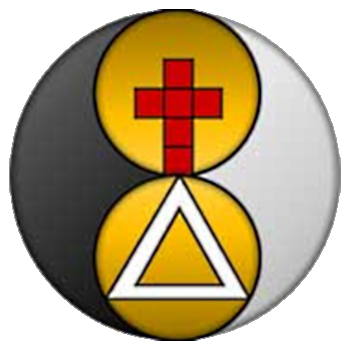
From the "Manifesto of The Open Source Order of the Golden Dawn":
As Western Civilization enters a new Aeon, so must its esoteric traditions. Our solution is not to destroy the old traditions, but to make them new again.
Our Order is a manifestation and heir of the Golden Dawn current — that is, an autonomous entity, but one that draws upon the knowledge, experience, practices and spirit of the system of magical training and attainment developed by the original Hermetic Order of the Golden Dawn. That Order was in turn an heir to the Hermeticists, Alchemists and Magi of the Renaissance and of the Classical world.
The practices of the Golden Dawn lodges were built upon the foundation of Hermetic and Qabalistic philosophy, though the outward form of their rituals and symbolism were sociologically derived and culturally biased. The first Chief of the Order, S.L. Macgregor-Mathers (Fr. D.D.C.F.), admitted this in his final statement to the Order before his death. As reported by his wife and lifelong collaborator, Moina Bergsen Mathers (Sr. V.N.R.), he said:
“He asks that you should keep intact the official Instruction of the Order, knowing that he received it in a direct line from the most pure Rosicrucian sources, even though these Mysteries are found somewhat modified in their exterior form, for reasons of Tribe and Culture.”
So we conclude that the form of the Golden Dawn system is modifiable “for reasons of Tribe and Culture,” and in fact requires of us to do so given the vast cultural differences between 1888 England and ourselves today.
Since the essence of the Golden Dawn constitutes “mysteries,” and insofar as they are valid they transcend culture, every time the culture shifts, the Mysteries must be “rediscovered” — which is to say they must be re-cast into a form that has the desired effect of Initiation and Exaltation on practitioners belonging to the new culture.
Therefore Het-Nuit Lodge, our working body, is undertaking to redact the existing forms of the Golden Dawn System to work more efficiently and correctly within a culture that is radically different from the Anglican Christian/Victorian Era from which the originals came. Entering on a new millennium is as good a time as any for a new start, so it is fitting that Het-Nuit Lodge grew out of a ritual workshop held in February of 2001ev.
So far, this redaction has taken on certain distinct aspects:
Open Source Magick:
The revelation of the once-secret Hermetic symbols and philosophies that are the foundation of the Golden Dawn’s system has long since occurred, yet we still see Lodges swearing their Aspirants to absolute secrecy with mighty oaths of death and destruction, if they dare to reveal to the uninitiated the “secret knowledge” which the uninitiated could buy cheaply at a used book store. We see no reason to follow this defunct and even harmful approach.
Instead, following the demonstrably advantageous practice of the Open Source Software movement, we build our Order on the sources of knowledge that are accessible to anyone. Our sources are already open; we simply affirm this obvious fact. We have no “secrets” to conceal, in particular those that have already been revealed. And in any case, the era of artificial secrecy is at an end. Ours is the Information Age, and we embrace it fully. Therefore we ordain and establish our order as the Open Source Order of the Golden Dawn.
New Aeon:
Het-Nuit bases its authority to redact the GD system on the concept of Aeonic Evolution. The early years of the 20th century mark the “dawning of the Age of Aquarius,” which was the ending of the Modern Era that began with the European Enlightenment and concluded with the Second World War. It was the period that saw the original GD Order explode into schisms, and also saw Aleister Crowley’s writing of Liber AL, the Book of the Law. These things are not at all a “co-incidence,” but rather a line drawn in the sands of time. The old must be put to rest and the new be born.
Freedom of Information:
We agree with Robert Anton Wilson, who said, “Accuracy of signal and free flow of information define sanity in my epistemology.” Our ritual works, commentaries, instructional documents, diagrams and formulae are all available to the general public, for free without restriction. Our primary means of distribution is the World Wide Web, chosen for it’s economy and ease of universal access.
Therefore, as we produce works they will be tested in our own lives, modified if need be according to insights gained through our own experience and that of others with whom we share them (like the ‘beta testing’ of computer software) to assure ourselves of their efficacy, and then, upon our satisfaction, released to the general public by posting them to our website in open ‘pdf’ or similar format. Anyone will be allowed and is encouraged to download and use the rites, etc. The files will be open and editable, allowing the user to easily make changes at will. This approach preserves the integrity of our original work while giving users the freedom to apply their own intelligence and insight in light of their own necessity.
Thelema:
Het-Nuit Lodge is not an attempt to rebuild the Golden Dawn on the basis of ‘purely Thelemic’ principles, but Thelema informs and transforms the understanding and purpose of our Work.
Without going into deep discussion of Thelemic philosophy, we take inspiration from the idea the “Ra-Hoor-Khuit hath taken his seat in the East at the Equinox of the Gods” (AL I.49) and alter our rituals accordingly. We operate from the paradigm that the Aeon has changed and Horus (Ra-Hoor-Khuit) is its avatar, as Osiris (Ausar-Un-Nefer) was the avatar of the previous Age of Pisces.
We hold these truths to be self-evident: that every man and every woman is a Star, and has a ‘True’ Will in life, one that can be discovered by the invocation of the Higher Genius found in us all. Once having discovered one’s ‘True’ Will, then one has no right but to do that Will. That Love is the Law, and Love under ‘True’ Will is Perfect Love.
Duty:
The Order will not require or promote any form of moral dogma, religious canon, apocalyptic doctrine or political philosophy. In keeping with the well-established and eminently wise tradition of the original Order, the civil, moral and religious beliefs and practices of the individual members are none of the Order’s business, however much the teachings and practices of the Order may deepen awareness of one’s commitments.
The Order exists for one reason and one reason only: the elevation of individual human beings from ignorance of their true nature to Magical Adepthood. The Order asks nothing of its Initiates but a sincere commitment to penetrate the Occult Mysteries and apply the knowledge gained to their own lives in a productive and compassionate manner. The only duty to our Order of the Golden Dawn is the Aspirant’s duty to his or her Higher Self, to their own True Will and spiritual destiny, and to the comity of the community.
It is our greatest desire and fondest hope that others will take what we have done and build on it for the future, adapting it without breaking it, to work as well for themselves.
Universalism:
The original Hermetic Order of the Golden Dawn was steeped in the Protestant Christian mythology and symbolism that typified the era and the religious background of the original members. The Het-Nuit Lodge, on the other hand, was established by 21st century Pagans, who do not subscribe to the Pauline Christian philosophy of a “fallen” humanity in need of redemption from our sinful nature. Instead, our true nature is that of the gods, and the source of our suffering is our ignorance that masks our true nature from ourselves. As Pagans, we also hold that a multifarious expression of the Divine is more representative of its actual Nature than a monotheistic one. This is not to exclude all forms of magical practice and ritual based on Judeo-Christian mythology, but rather to include the rest of the rich mythological history of the World’s cultures on an equal basis. As has been said, “There is none but contains a Ray from the Ineffable Light you are seeking.”
The basic symbolism of our Temple and Rituals reflect these principles in their form and function, but are built upon the same foundation of a graded system of spiritual development based on the Hermetic and Qabalistic principles that transcend all outward forms.
We have, as much as possible, diminished the Yahwistic and Christian influences that marked the old Aeon manifestation of the Order. Yahweh no longer has primacy as in the Hebraic Qabala, as we acknowledge the Caananite and broader context of which the Hebrew Qabala is product and a remnant. We exalt the Egyptian and Hellenic Pagan archetypes as applied to interpreting the Qabalistic Tree of Life, which figures so prominently in the Golden Dawn system. Our use of the Qabalah and the Hebrew alphabet is as a system of symbolic glyphs and magickal names particularly well suited to the learning process.
Form and Function:
The formula of the Dying and Resurrected God (Osiris) is replaced in our Temple by the formula of the Crowned and Conquering Child (Horus). We find the focus on death and sacrifice a distraction from the sufficiently daunting task of creating a sustainable magickal life in this post-modern era. Birth, and the challenges that ensue, inspire us to Adeptship.
In much of our temple work, we use the Egyptian, Enochian or Thelemic godforms instead of those of the Semitic Archangels. We have done some re-assignment of symbolic positions of the Temple Officers. Horus is the Heirophant of the Temple in the East, replacing his father Osiris, and his former place in the West is taken by Set. Not only is this redaction consistent with the new Aeon, it also reflects current scholarship in Egyptology that was unknown 100 years ago.
Like any Golden Dawn form, we are an Initiatory teaching order. What we teach is a progressively tiered system of spiritual development designed to invoke the Higher or Divine Genius latent in every human being. By this invocation can a person discover and follow his or her True Will, and have both the power and the wisdom to effectively use the tools of Hermetic magick.
In short, our goal is to normalize Adeptship.
Sources:
[ « back to TOC ]

Order of Napunsakas in the West
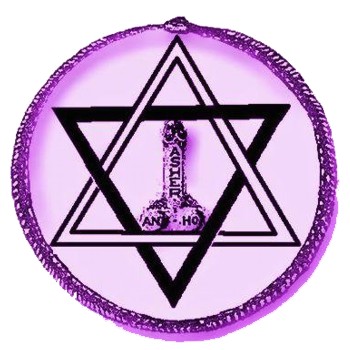
The Order of Napunsakas in the West (O.N.) was founded in 1996 as a special interest group associated with the Servants of the Star and the Snake. It was inspired by the writings of the late Alain Danielou (1907–1994), the author of The Gods of India: Hindu Polytheism (1985), Shiva and Dionysus, and While the Gods Play. The Hindu word napunska designates some 16 categories of nonheterosexual gender variant types mentioned in the Sanskrit dictionary of V. S. Apte. Members of the O.N. seek to reestablish the natural, divine order found in pre-Aryan Shaivism, but the emphasis is on gay, lesbian, bisexual, and transgendered tantra. The outer order is open to all napunskas; affiliates are considered as associate members. An inner order, the Cultus Skanda-Karttikeya (C.S.-K.), is open to gay males only, and only upon formal, in-person diksha, or initiation. The focus of the C.S.-K. is on gay tantra, with special emphasis on the sadhana (worship, or more properly, adoration) of the Hindu deity Skanda, the patron of gays, in His many forms (Kumara, Marugan, etc.).
The current head of the O.N./C.S.-K. is Sahajananda Skanda-Das.
Address: PO Box 1219, Corpus Christi, TX 78403-1219.
Membership:
Not reported.
Periodicals:
Zibaq. (Available from Abrasax Publications)
References:
- Danielou, Alain. The Gods of India: Hindu Polytheism. Rochester, VT: Inner Traditions, 1985.
Sources:
Magical Diaries of Belarion. magickaldiariesbelarion.tumblr.com
[ « back to TOC ]

Order of the Lily and the Eagle
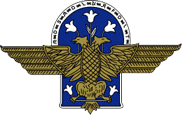
The Order of the Lily and the Eagle is a Western initiatic school working in the ancient lines of Judeo-Christian and Egyptian thought to the Hellenic mystery schools of Orpheus, Pythagoras, and Socrates. It also combines its teaching of St. Martin, alchemy, the Kaballah, contemporary science, and psychology.
The order’s teachings deal with the transformation and liberation of personality. It guides those who seek to know themselves, so that their lives can be used to aid the well-being of others. The order, by means of enlightened advice, helps its members create their own understanding through experience, reasoning, meditation, and introspection.
Address: Center for Inner Initiative, attn: WS, PO Box 937, Littleton, CO 80160-0937
References:
- EON: The Path of Initiation: A Collection of Works from the Order of the Lily and the Eagle. Littleton, CO: Center for Inner Initiative, 1995.
Sources:
[ « back to TOC ]

Order of Thelema
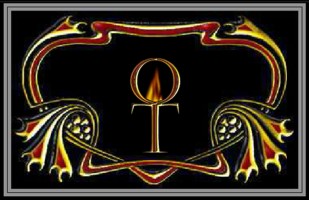
The Order of Thelema is a Thelemic magick group that rejected the attempt by various branches of the Ordo Templi Orientis (OTO) to establish their authority by reference to a line of succession from Aleister Crowley (1875–1947). It was structured as a Crowleyan study group. There is no system of rituals except those ideas that members interpret from Crowley’s revelatory bible, Liber Al vel Legis (The Book of the Law), each according to his own will. The group believes that Crowley still operates close to this plane of existence as a present and active force and that it is possible for him to reach the order by psychic means. The written words of Crowley are the only source of Thelemic Law. Strong support is given the perspective of The Book of the Law. Headquarters of the Order of Thelema are in Chula Vista, California. The word Thelema means “will.”
Address: PO Box 511, Chula Vista, CA 91912
Sources:
[ « back to TOC ]

The Order of Thelemic Knights
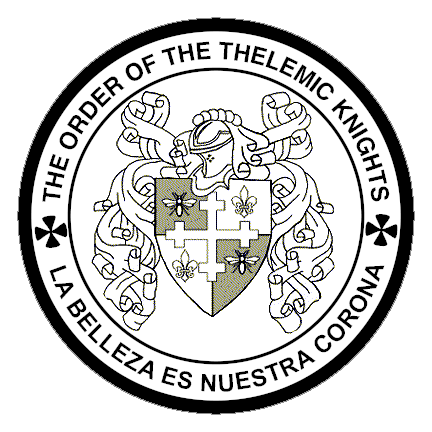
The Order of Thelemic Knights (OTK) is both a Gnostic and Thelemic organization founded in 1999. We serve the Thelemic community and the greater society of mankind. Known for the charitable deeds of its members, the Order of Thelemic Knights also serves individuals in the Gnostic Thelemic community through The Gnostic Thelemic Church of Alexandria. The Order is a modern fraternal organization whose aim is to enable its members to reach the ideal balance between soldiering and religion. We wish to lead each member to the life of the Spiritual Warrior. We lead by requiring each member to adhere to an honorable and chivalric code of conduct. These disciplines carry within them a power of immense potential. As a result, our fraternity is truly fashioned after the New Aeon. Members of the Order of Thelemic Knights are invited to initiate into the system and participate in the mysteries of the Order. A careful screening process identifies their potential for making meaningful contributions to society. Especially relevant is the Order’s ethical value system. Reflected in The Eleven Virtues of Thelemic Knighthood, these virtues have an esoteric meaning in addition to their common meaning. These meanings are known to its initiated members. We encourage members to develop these virtues and also recognize them in others regardless of race, creed, religion, gender, or sexuality.
- Nobility: Poise and elegance in both word and deed.
- Discernment: Piercing all glamour to see the Truth in one’s self and in others.
- Pride: Having a true sense of one’s worth.
- Compassion: The vice of Kings!
- Fidelity: Loyalty to one’s self, one’s comrades and to one’s word.
- Passion: To do all with love under will.
- Strength: The body is the Temple of God.
- Discipline: Perseverance, that the Work may be accomplished.
- Self Reliance: Only a free man may walk our path.
- Hospitality: To share what one has with others, especially those far from home.
From the "Manifesto of the Order of Thelemic Knights":
"Order of Thelemic Knights is a modern fraternal organization whose aim is to enable its members to reach the ideal balance between soldiering and religion. We wish to lead each member to the life of the Spiritual Warrior by requiring each member to adhere to an honorable and chivalric code of conduct. This fraternity is truly fashioned after the New Aeon. These disciplines carry within them a power of immense potential.
We recognize that the complete, awakened individual instinctively recognizes his or her relation to the powers of Nature; that these powers are every person’s birthright and that men and women are entitled to use these powers to improve the condition of their surroundings and their life; thereby simultaneously improving the condition of the environment where that individual lives out his existence. He becomes his own God. We call this “Gnosis.”
We postulate the existence of a Personal Supreme Deity, which holds the reality constructs of each individual’s spirituality, and reflects each individual’s Gnosis. We encourage each Knight to draw on a personal and recognizable God/spark, which is individual to them, and reflects their own True Will. This enables us to postulate and use the different tenets of all religions and philosophies, and have something to offer all people.
We believe that balance lies within each of us, not outside, and that it is to be found as the polarities of Order and Chaos perform their mystical dance around us. We do not adhere to the belief that balance is to be found within the sexes, as this creates ideas of supremacy.
We therefore believe that existence free from illusion is pure joy and ecstasy.
We also believe that this very Earth is the Garden of Eden, and that all sorrows, including disease, hunger; and even death itself, come from the ignorance of these facts. We do not seek to escape this world; we attempt to destroy the veil of illusion which conceals its True Beauty.
We believe that all disease begins in the mind when the spirit is afflicted. Health can only be accomplished when the Physical, Intellectual, Emotional and Spiritual bodies are brought into perfect balance.
We believe that we are caretakers of the Earth, and strive to live our lives in accordance with the Law of Thelema. We believe that our interpretation of that Law is one among many. Furthermore, we perceive any attempts to dominate Nature as an abomination of the worst kind. We feel no need to tamper with something that is already perfect.
We believe that Truth is incommunicable because it manifests itself in us according to our individual capacity to understand its essence. We attempt to bring the individual to that Light by way of Honor and Chivalry.
We exist in the real world, for in the world is where our battle must be fought. Our teachings and methods have been tempered by time; they have caused socio-political revolution and have been the only stable source of courage and strength in times of great danger. Our purpose is the spiritual evolution of humanity by aiding men and women to acquire the strength to recognize the Truth." [...]
Sources:
[ « back to TOC ]

Ordo Adeptorum Invisiblum
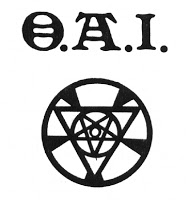
"The OAI also adopts feminist principles and practices — not the anti-male separatist variety — but in its non-sexist androgynous philosophy. Women are not the vehicle of a male seed, a male High Priest. They are magickal people in their own right. The history of female magickal energy is far older than that of the male, but it has been overshadowed by the masculine principle. The OAI seeks to rectify this by balancing the imbalance through women seeking to rediscover and reassert themselves, while male members minimize as far as possible their aggressiveness and dominance. In turn, this will lead to a more directly visible equality and non-hierarchical structure within the group and in rituals."
The OAI teachings followed Aleister Crowley, Jack Parsons and an Ohio woman known as Nema, following a Maatian Current.
The Ordo Adeptorum Invisiblum (OAI) is a British-based thelemicist order aligned to the Maatian magical “current.” It grew out of the proclamation of the magical Aeon of Ma (or Maat) proclaimed in 1948 by Frater Achad (Charles Stansfeld Jones). Maat is the ancient Egyptian goddess of Truth and Justice. The order looks toward a planetary manifestation of the presence of Maat, whose coming has been heralded by three twentieth-century trends: the great liberation movements leading to the recognition of human rights; the attempts to balance male-dominated Western magic; and the nonelitist androgynous approach to magic practiced by Maatian groups. In recognition of their acceptance of feminist liberation concerns and the nonsexist nature of their magical workings, members of the OAI have dropped the use of common designations of male and female members as frater and soror in favor of the single designation persona.
The OAI began in England in 1979 in the informal workings of three Thelemic magicians (two women and one man). In 1980 they made a formal alignment to the Aeon of Maat and thus the OAI came into existence. At the end of the year, the three original members separated. One went to Fez, Morocco, and the following year, one came to Chicago, where the first members of the OAI were received.
The order has developed as a very loose confederation of otherwise independent magicians pursuing their own magical experiments in alignment to the Maatian Aeon. Periodically, members will gather for group rituals. New initiates are received after their successful performance of Liber Samekh He, a revised version of Liber Samekh, a Thelemic ritual designed to promote conversation with one’s Holy Guardian Angel (higher self). The order is nonhierarchical. Leadership can be exercised by any member and teaching is a matter of sharing the results of individual ritual workings with the larger membership. All members have access to all materials possessed by the order.
While the Ordo Adeptorum Invisiblum was originally founded in England in 1979, their United States headquarters were established in Chicago in 1981.
From what I can determine, the OAI practiced a form of feminist Thelema.
Membership:
In 1985 members of the order, reported to number less than 100, could be found in England, the Chicago metropolitan area, and California.
References:
- Liber ANDANA. Chicago: Ordo Adeptorum, 1983.
- Persona PVAD MASURUS 1043. Liber Samekh He. Chicago: Stellium Press, 1981.
- Skia, Persona. O.A.I. Manifesto: Origin, History, Organization. Kenilworth, IL: Ordo Adeptorum Invisiblum, 1982.
Sources:
[ « back to TOC ]

Ordo Astri
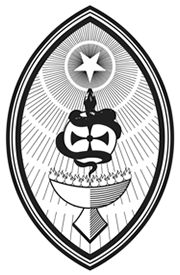
Ordo Astri serves to reveal an Independent Thelemic School of the Mysteries to those so prepared. The grades of initiation in the O∴ A∴ are obtained by personal work done and the keeping of a magical diary Record. Our work is to practice and understand the wisdom of Aiwass.
Our Manifesto describes the O∴ A∴ in the following terms:
A vehicle by which magicians may develop supreme facility in the magical arts towards the end of attaining the Knowledge and Conversation of the Holy Guardian Angel. This may be defined as the personal realisation of cosmic consciousness. In other terms it may be defined as Gnosis or direct experience of the Mysteries.
The Law of Thelema is defined thus:
The core tenets of Thelema are outstandingly simple: “Do what thou wilt shall be the whole of the Law” and “Love is the law, love under will.” Thelema is the law of love — the spiritual intelligence or True Will that unites and harmonises all things. It is therefore a law based on relationship. The universality of the law rests upon the fact that it is particular and inclusive, respecting differences between stars and recognising that each complements the rest.
Ordo Astri fulfils the role of Outer Court to the Order, which is based on the Rosicrucian system of magical grades or degrees equating to the Hermetic Tree of Life. We have developed a comprehensive and internally consistent system of magick and Hermetic Tantra-yoga that has been developed from the hermetic tradition of the ages. There is an emphasis on the Gods of Egypt; the Egyptian name of the Order is Shemsu en Khabs. We are a Thelemic Order, created in the ultraviolet light of the (Egyptian) Book of the Law, called Liber AL vel Legis.
Aleister Crowley and Rose Edith Kelly, Ouarda the Seer, were the recipients of a powerful magical transmission in Cairo, 1904. Some of the Book of the Law addresses the thoughts and questions of Crowley, some of it conveys knowledge of the Theban Setian cult of Mentu, reserved for Initiates. Some passages have served to conceal the secret doctrine from Crowley and his followers. The teachings of Aiwass are nonetheless consistent. To us, being Thelemic does not mean that we unconditionally accept Aleister Crowley’s methods, teaching or philosophy. However, we do not regard Thelema as a religion, and neither did Crowley. Where belief begins, knowledge ends.
Initiatory Structure of the O∴ A∴
Initiation in the O∴ A∴ is achieved through personal work done. Each grade has an Oath and a Task to accomplish, primarily towards the ends of the Knowledge and Conversation of the Holy Guardian Angel. The Hermetic method is necessarily elitist. Few people are able to work in this fashion over a lengthy period of time, or are in any way suited to it.
- While Thelema is our basis, the O∴ A∴ does not serve as a vehicle for the rites, ceremonies or practices of Aleister Crowley or the O. T. O.
- There follows a general outline of the Great Work as structured through the grades or degrees of the Order.
- In reality the first grade, though it is not named thus, is that of Student. The aspirant must demonstrate they have obtained an intellectual understanding of the work before entering into Probationership.
The Light and Dark Face of the Angel
Horus is the universal symbol or type of the Holy Guardian Angel. Like all Egyptian gods, Horus is polymorphic and thus able to assume many forms such as Hoor-Apep, Heru-ra-ha and Hormaku.
The Great Work is to realise the True Self through the Knowledge and Conversation of the Holy Guardian Angel and to help others accomplish the same. In our magical system, based on the Hermetic Tree of Life, there are three critical points in the journey of the Initiate, which are marked by the three veils of the Tree of Life. At each of these an adversary may be encountered as a force whose strength appears to match that of the aspirant, if not to actually exceed it.
The Dweller on the Threshold is first encountered before the person even sets a foot firmly on the path. This is the first spiritual crossroads, encountered as the person considers making a firm commitment to the Great Work. They are greatly hindered by their lack of knowledge and experience. No sooner do they even consider the step, perhaps making tenuous contact with Ordo Astri, than a tumultuous multitude appears, shouting and screaming at them to turn back. The rebellion may manifest in the voices and actions of other people, or the circumstances of the person’s life, but the real source is the undisciplined and disorganised state of the mind and soul of the candidate. It may also be that the person does not, in reality, wish to know any truth. In that case, they will soon end their association with Ordo Astri.
The second critical point is in the attainment of the Knowledge and Conversation of the Holy Guardian Angel. Even while the aspirant is preparing their Oath and meditating on the shining one or augoedes, the Four Evil Princes of the World are stirring. These antagonistic forces work day and night to undo aspiring magicians and thwart their true purpose.
The third critical point is called the crossing of the Abyss, which is required before a person becomes a Master of the Temple. Crossing the Abyss requires encountering, entirely alone and without help, a force that seems to be utterly opposed to the further progress of the aspirant. Furthermore, it requires the aspirant to become ‘self-slain’, which is to say they must achieve the renunciation of their ego-self and yet retain their sanity. Only thus may the nature of the true self, and that which is called divine (Theos), be fully realised without the obfuscation of ego identification. There are also mysteries greater than that.
There follows a precis of the three Orders: The Golden Dawn, Rose Cross and Silver Star.
| System of degrees |
| Grade |
Label |
Description |
| The Order of the Golden Dawn |
The student must be prepared to make a deep and prolonged study of esoteric literature, historical and modern. The (Egyptian) Book of the Law should be studied from the outset, preferably before making contact with Ordo Astri. The principal work of the Probationer is to discover the secret nature of their self. To this end, they will agree to perform various tasks, all the while keeping a magical diary Record of their work. Traditionally, it is said they must seek to obtain a measure of control over the nature and powers of their own being. The magical power or vision that marks the true admission to the grade of Neophyte is that of the Holy Guardian Angel, or of Adonai.
|
| 1° |
Neophyte |
The rest of the degrees in the Golden Dawn are really a continuation and development of this seeking out of the secret nature of the self and discovering the True Will. The first four degrees of Neophyte, Zelator, Practicus and Philosophus are elemental degrees corresponding to Earth, Air, Water and Fire, and the four faces of the Sphinx of Nature. Malkuth symbolises the Universe as the summation of the whole Tree of Life. The other three have planetary correspondences. Yesod (Zelator) is the sphere of the Moon, Hod (Practicus) is the sphere of Mercury, and Netzach (Philosophus) is the sphere of Venus. |
| 2° |
Zelator |
| 3° |
Practicus |
| 4° |
Philosophus |
| |
| — the link |
Dominus Liminis |
The Dominus Liminis (‘Lord of the Threshold’) is the link or passage between the 1st and 2nd Orders — it should all the while be noted that there is in reality but one Order that has three divisions for the sake of classification. The Dominus Liminis grade has no sephirotic correspondence but is theoretically located on the crossroads of the 25th and 27th paths. Elementally, the Dominus Liminis grade is Spirit as the equilibration of the four elements below. Thus, as these elements have their correspondence in the man and woman, each must seek ways to achieve this equilibrium in themselves. The Dominus Liminis must direct their aspiration to the Great Work and become illuminated by their True Will. In this grade the person should perfect their knowledge and practice of all the rituals and other methods of the Outer Order of the Golden Dawn. The magical power or vision marking true admission to the Second Order is the vision of the harmony of all things. This is conveyed by the Holy Guardian Angel. |
| The Order of the Rosy Cross |
| |
| 5° |
Adeptus Minor |
The Adeptus Minor grade (‘Younger Magician’) refers to Tiphereth, the sixth sephira on the Qabalistic Tree of Life, and the Sun of our solar system. At this stage of the journey the aspirant must become a mystic in the true sense of the word, for the Knowledge and Conversation of the Holy Guardian Angel is a mystical experience. The Adeptus Minor has this as their sole task to do and to achieve. The Adeptus Minor truly becomes a member of the Inner Order of the Rosy Cross when they have attained the Knowledge and Conversation of the Holy Guardian Angel. They then realise themselves as an ‘Adeptus Within’ (i.e., Within the Sanctuary). |
| 6° |
Adeptus Major |
The Adeptus Major (‘Senior Magician’ or ‘Master of Magick’) refers to Geburah, the fifth sephira on the Qabalistic Tree of Life. This is the chakra of Mars. Spiritually, it corresponds to Death and so the symbolism of initiation is the Vault or Sarcophagus. The task of the Adeptus Major is to realise their every thought, word and deed as derived from the light of their Holy Guardian Angel. The Adeptus Major obtains a general mastery of magick, including that which is called Jnanamudra in our system. |
| 7° |
Adeptus Exemptus |
The Adeptus Exemptus (‘Released’) grade refers to Chesed, the fourth sephira on the Qabalistic Tree of Life. This is the chakra of Jupiter. Spiritually, this is the New Life that follows the ritual Death of the Adeptus Major. The Adeptus Exemptus must use all knowledge in the love of Truth and Wisdom. They must emancipate their thought from causal determinism and become a pure vehicle for the influence of the Order. This is to prepare them for the critical confrontation with the crossing of the Abyss. |
| |
| — the link |
Babe of the Abyss |
The Babe of the Abyss is the link or passage between the Second and Third Orders. This has no sephirotic correspondence or paths save Da’ath, ‘Knowledge’, the non-sephira marked by the Abyss of the Tree of Life. At the threshold of Da’ath is the false crown of Reason, the Qabalistic Ruach. It is necessary to take the Oath of the Abyss to transcend this, the ultimate Dweller on the Threshold, and truly partake of the spiritual Neschemah or divine Intuition that is Binah and the summation of the supernals. The Magister Templi is one that has directly received and understood the word of the Magus. |
| The Order of the Silver Star or A∴ A∴ |
| 8° |
Magister Templi |
The Magister Templi grade (‘Master of the Temple’) refers to Binah, the third sephira on the Qabalistic Tree of Life. This is the chakra of Saturn. The Magister Templi has taken the Oath of the Abyss, which is “to interpret every phenomenon as a particular dealing of God with my Soul”. The Magister Templi must become the complete mystic, an adept of impersonal love (Agape); they must perfect their Understanding of the Universe, and achieve Mahamudra as that is understood in our system. |
| 9° |
Magus |
The Magus grade (‘Wizard’) refers to Chokmah, the second sephira on the Qabalistic Tree of Life. The traditional mundane chakra is the Zodiac (Mazloth), the starry girdle of Nuit. This grade is very particular to the True Will. The Magus must practice wisdom in all ways. Chokmah is the sephirotic location of the Logos or Word; the Magister hears that word. The Magus must “follow the love of Nu in the star-lit heaven”, and by then understands all the paths that link the supernal sephiroth. |
| 10° |
Ipsissimus |
The Ipsissimus grade (‘Own True Self’) refers to Kether, the first sephira on the Qabalistic Tree of Life. The mundane chakra is the Primum Mobile, the ‘first movement’. The Ipsissimus knows every phenomenon as God, which is to know the Soul of the World. The Ipsissimus is Master of all modes of existence or being and has passed utterly beyond. |
A Word on the Means
All progress is by Oath and Deed. According to Aleister Crowley (Magick):
"A real Magical Oath cannot be broken: you think it can, but it can’t. This is the advantage of a real Magical Oath."
Although anyone may solemnly write their name to a magical Oath, that does not, in itself, make it ‘real’. A piece of paper, after all, is just that. In the same way, a person may be admitted to membership of an Order but that does not mean they have entered any sanctuary in the real sense. No ritual or ceremony will confer initiation of its own accord; no person on earth may confer true initiation on another. Initiation and true membership of the Order are sublime matters of the soul. The work begins, nonetheless, with the Oath of Dedication (or Probationer Oath).
Ordo Astri Gateway to Knowledge
The Ordo Astri Imprimatur book for Probationers is The Enterer of the Threshold.
The document brief for Probationers is Liber Vitriol, DCCXXVI. A general guide for those desirous of the practical work of a Probationer may be found on the following page: VITRIOL
Membership: A full Initiate member of the O∴ A∴ is any person that has attained the degree of Neophyte or above in our Collegium. It is not possible to ‘transfer’ a grade or degree obtained through another magical organisation. While Thelema is our basis, the O∴ A∴ does not serve as a vehicle for the rites, ceremonies or practices of Aleister Crowley or of the O.T.O.
Sources:
[ « back to TOC ]

Ordo Aurum Solis
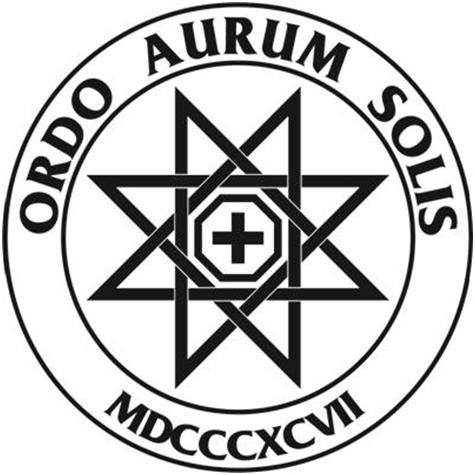
Ordo Aurum Solis, Gold of the Sun, is a magical and initiatory order founded in England in 1897 by George Stanton and Charles Kingold that claims descent from the Ogdoadic Tradition of the Western Mystery Tradition. Ordo Aurum Solis is a private and independent esoteric society rooted in neo-Platonist theurgy tradition. It is not affiliated to any other esoteric, religious, or political associations.
Like the Hermetic Order of the Golden Dawn, the Ordo Aurum Solis teaches a system of high magick, that is, a disciplined approach to self-transformation. Its system, much of which has been published in the five-volume set The Magical Philosophy by Melita Denning and Osborne Phillips, centers upon the myth of the sacred king (i.e., the magician) who chooses of his own free will the path of sacrifice, but subsequently rises again and passes into the light of attainment.
Melita Denning and Osborne Phillips are the pen names of Vivian Barcynski and Leon R. Barcynski, who until recently served as administrator general and grand master, respectively, of the order. Both had encountered the order while living in England and participated in its reconstitution in 1971. They brought the order to the United States in 1978 when they moved to St. Paul, Minnesota. Under their pen names they authored numerous books on various occult topics. Phillips founded in 1997 the first French-language Masonic publication on the Internet, La Parole Circule (Spread the Word), and in 2008 he continued to publish it. It comprises a dissemination of materials pertinent to all degrees. The publication is sent to more than 1,500 subscribers worldwide. There are an estimated 3,000 readers worldwide.
The order is directed by a grand master. The Star Council is composed of eight officers. The location where members meet is called a house. Each state or country has one mother house. There are houses located in the United States, Brazil, Canada, Congo, Spain, France, Greece, and the Netherlands.
The official seal of the order is an eight-pointed star that includes an interlacing design. There is an octagon within the interlacing design and an equal armed cross in the center.
In 1957 three members of the Ordo Aurum Solis founded the Order of the Sacred Word for special studies and practices of the Holy Gnosis. This order was governed by the council of three members until 1959. After then, the initiates in charge were Earnest Page (1959–1966) and Leon Barcynski (1966–1971).
Membership in the order is by invitation only, though inquiries are invited. The order has three degrees preceded by pronaso, a probationary period that can last several months. The first degree is neophytos, or neophyte. The formal title is apprentice of the great world. The second degree is servitor, or server, and the formal title is servitor of the secret flame. The third degree is adeptos minor, or adept, and the formal title is priest of the gnosis.
The position of grand master has been held by George Stanton (1897–1914), Morris Greenberg (1914–1938), Charles Roughlett-Boch (1938–1952), Michael B. Foy (1952–1975), Thomas Maughan (1975–1976), Vivian Godfrey (1976–1987), Carl Weschcke (1987–1988), Vivian Godfrey (1988–1997), Leon Barcynski (1997–2003), and Jean-Louis de Biasi (2003–).
Address: 1203 W Bryn Mawr Ave., Chicago, IL 60660
Membership:
In 2008 it was reported there was affiliated work in 30 countries.
References:
- De Biasi, Jean-Louis. Planetary Harmonizations. Calgary, Canada: Academia Platonica Publications, 2006.
- Denning, Melita, and Osborne Phillips. The Magical Philosophy. 5 vols. St. Paul, MN: Llewellyn Publications, 1974–1981.
- ———. The Magick of Sex. St. Paul, MN: Llewellyn Publications, 1982.
- ———. The Magick of the Tarot. St. Paul, MN: Llewellyn Publications, 1983.
Sources:
[ « back to TOC ]

Ordo Templi Astarte
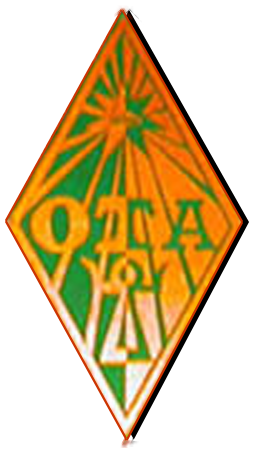
The Ordo Templi Astarte (Order of the Temple of Astarte, or OTA), which also operates under the name Church of Hermetic Sciences, is a ritual magick group begun in 1970 to practice Kabbalistic magick in the Western tradition. Based upon Jungian psychology, the OTA defines magick as a “system of ritual hypnotic induction (conjuration) that calls upon archetypal forms from the unconscious (evocation) and allows them to be visualized (manifestation) whereupon they can be used for numerous purposes ranging from the frankly psychotherapeutic to the more abstract system research and development.”
The OTA traces its history to Aleister Crowley through Louis Culling, who claimed to have had a charter from Crowley for an autonomous lodge. This charter was given after Culling left C. F. Russell, who was deviating from Crowley’s teachings. Culling turned over the charter to the OTA leadership before his death. The group also claims to possess the “secret rituals of the Ordo Templi Orientis in Crowley’s original holographs.”Though operating with a Thelemic charter, the OTA does not consider itself fully Thelemic. In describing the order, founder Carroll R. Runyon Jr. has noted, “We operate a Collegium ad Spiritum Sanctum of the O.T.O. in our Philosophus Grade as a research and study program. In its own context, it is Thelemic; but we do not initiate or operate ceremonially under a Thelemic aegis. We have great respect for the works of Aleister Crowley, but we consider him a Master of the Art in much the same way that Sufis consider Jesus a Great Prophet — without calling themselves Christians.”The OTA is centered in a lodge in Pasadena headed by Poke Runyon, also known as Frater Thabion.
Carroll Poke Runyon describes himself as a Gentleman of the Old School which he defines as: One who recites classical poetry to heartless beauties while wrestling alligators. He has lived out his Neo-Romantic philosophy as a Captain in the Green Berets, a student of Ninjutsu, a blue-water sailor, scuba diver, and a ceremonial magician.
His background in occult study and practice is extensive: in 1970, following a near-death experience, and a mystic vision, he became the founder of The Ordo Templi Astartes (O.T.A.). which is now America’s oldest continually operating Ritual magick Lodge. In 1980 Runyon received his Master’s Degree in cultural anthropology from California State University at Northridge, specializing in Magick. After graduate school he went through all the degrees of Freemasonry in both the Scottish and York Rites.
He then undertook an intense series of Tibetan tantric initiations and training sessions under the direction of H.E. Luding Khen Rinpoche of The Sakya Order, mastering the Vajra Yogini (Goddess of the Sorcerers) system. Runyon later received the Kalachakra initiation from H.H. The Dalai Lama.
Carroll Runyon has served as an officer in three active Golden Dawn temples. His articles on Magick and the Western Tradition have appeared in Gnostica magazine, and his Order’s journal The Seventh Ray. His most noted contribution to the post WW.II occult revival has been his rediscovery, and subsequent development, of the facial reflection / distortion dark mirror scrying method for magical evocation. In 1974 he appeared as a guest on Tom Snyder’s network television Tomorrow Show narrating film footage of O.T.A. magical operations. In 1996, through his Church (The Church of the Hermetic Sciences, Inc.) Runyon wrote, produced and narrated a 75 minute video documentary entitled: The Magick of Solomon, and also authored its companion book The Book of Solomon’s Magick.
He is also the author of Secrets of the Golden Dawn Cypher Manuscript and Seasonal Rites of Baal and Astarte while acting as editor of The Seventh Ray.
Address: PO Box 40094, Pasadena, CA (Alternate Address: The Church of the Hermetic Sciences, PO Box 403, Silverado CA 92676.)
Membership: Not reported.
Periodicals: The Seventh Ray.
References:
- Christensen, Cheryl JoAnne. “Magical Epistemic Communities: The Construction of Specialized Social Realities in Bunyoro, Uganda and Los Angeles, California.”Ph.D. diss., Massachusetts Institute of Technology, 1975.
- Ellwood, Robert S., Jr. Mysticism and Religion. Englewood Cliffs, NJ: Prentice-Hall, 1980.
Sources:
[ « back to TOC ]

Ordo Templi Baphe-Metis
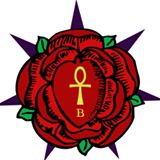
The Ordo Templi Baphe-Metis (OTB) was founded in January 1985. It is a Thelemic fraternal order “chartered” by fiat in Aleister Crowley’s (1875–1947) Khabs am Pekht, though the OTB is in no way connected to any of the branches of the Ordo Templi Orientis (OTO) either in America or Europe. In common with other Thelemic organizations, members of the OTB must accept as a Holy Book Liber Al vel Legis (The Book of the Law), given to the prophet Ankh-f-n-Khonsu (Crowley) by Aiwaz, his holy Guardian Angel, in Cairo in 1904. Additionally, Knights of the Order (which may be of either sex) promulgate the Law of Thelema, together with the Thelemic Bill of Rights, Liber 77 (Liber Oz). Grand Master Ekagratanath trance-channeled the order’s own Holy Book, Liber Ba Neb Tet (Book of Baphomet), available, with commentary, to members only. Members of the order practice ritual and ceremonial magick. A study manual, The Way of the Warrior-Magus, is given to members.
The order has operated the Invisible College, a home-study course in ritual and ceremonial magick, alchemy, divination, and Hermeticism. The OTB is closely related to the American Gnostic Church, with which it has shared an overlapping leadership and published a periodical, Abrasax.
Address: PO Box 1219, Corpus Christi, TX 78403-1219
Membership: Not reported.
Periodicals: Abrasax • The Philosopher’s Stone.
[ « back to TOC ]

Ordo Templi Orientis
O.T.O.
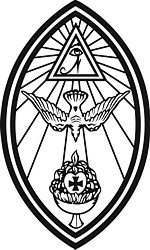
» A COMPENDIUM OF THE ORDO TEMPLI ORIENTIS (O.T.O.) «
The Ordo Templi Orientis (OTO) is a ritual magic organization founded in Germany around 1904. The order found its inspiration in the medieval Knights Templar, who were suppressed through most of Europe in the fourteenth century. Among the charges made against the order were that they practiced various forms of illicit sex, specifically sodomy and bestiality. Through the nineteenth century a number of groups had emerged in both France and Germany claiming to carry on the Templar tradition. However, this order seems to have originated out of a Masonic group founded by Karl Keller and Theodor Reuss and chartered in 1902 by English Mason John Yarker. They began publishing a magazine, Oriflamme, in which the first mention of the OTO occurred. There was mention that the order possessed the key of all hermetic and Masonic secrets (i.e., sex magic).
Brief History:
Keller claimed to have learned his secrets from three adepts, two Hindu and one Arab. His adepts seem to have been the sex manuals from India, the Kama Sutra and Ananda Ranga, and the Arab manual the Perfumed Garden. Keller died in 1905 and Reuss succeeded him as outer head of the order.
Meanwhile, in England, magician Aleister Crowley had emerged as head of his own magic order, the Astrum Argentinum. In 1909, with one of his initates, Victor Neuberg, Crowley conducted a series of magic spells modeled after the invocations in the Enochian language produced by Edward Kelley, the clairvoyant who worked with Elizabethan magician John Dee. Crowley would pronounce the invocation, hoping to receive a vision, the content of which Neuberg would write down. Halfway through the invocations, Crowley had the idea of the two of them performing a ritual sex act. Several years later he published a volume of free verse, The Book of Lies.
Theodor Reuss read the book and perceived that Crowley had discerned the secret of the OTO and confronted him with his discovery. Reportedly, Crowley at that point perceived that the ritual sex in which he had engaged was the key to understanding Rosicrucian, Masonic, and magic symbolism.
Crowley was invited to join the OTO and became the outer head of the order for England. He was also invited to rewrite much of the ritual material. The order was organized in a Masonic manner, with a system of ten degrees, progress upward through the degrees admitting the member to more of the inner teachings. In the first six degrees of the OTO students were taught a general occult system that prepared them for the introduction of the sexual magic presented in the seventh, eighth, and ninth degrees. The tenth degree was purely administrative. Crowley later introduced an eleventh degree based upon his homoerotic predilections.
During the 1970s the secret materials of the OTO were published. They revealed a system of sexual magic based on the use of sex to accomplish goals in magic. Crowley's system is very different from the mystical sexual practices of tantric yoga, with which it has often been compared.
Reuss resigned his position in 1922 and Aleister Crowley became the outer head of the order. The order became his major means of spreading his particular magical philosophy based on the revelatory The Book of the Law, which he claimed he had received from a disembodied intelligence in 1904. This book was translated into German in the mid-1920s, and many of the German members rejected Crowley and his perspective. They withdrew and continued as a pre-Crowleyite OTO, although enough German members accepted Crowley that he could count one German lodge in his branch of the order. Both of the German groups were destroyed by the Nazi regime. A group continuing the anti-Crowley lineage reemerged in Switzerland after the war.
During the time he headed the OTO Crowley experimented with a variety of magic practices, wrote widely, and compiled a curriculum consisting of his own books and some additional valuable works on magic for the order members. He died in 1947 and left the leadership of the order to Karl Germer, a German who had moved to the United States after a nasty encounter with the Nazis. Germer was a loyal member but the order languished under him. He did charter a lodge in England under the leadership of Kenneth Grant, but then withdrew the charter when Grant began to operate outside its dictates.
Aleister Crowley served as outer head of the Order of the Ordo Templi Orientis (OTO), until his death in 1947, when he was succeeded by Karl Germer. Germer died in 1962 without naming a clear successor, and among the people who emerged to succeed him was Kenneth Grant. Germer had given Grant a charter to begin a lodge in London to work the first three of the nine degrees of the OTO system, and in 1955 he founded New Isis Lodge. However, when Grant began working the higher degrees using his own material, Germer expelled him from the order. After Germer died in 1962, there was no one in England to challenge Grant's authority, and for a decade he operated unchallenged. In 1969 Grant co-edited "The Confessions of Aleister Crowley", and in 1973 he published "Aleister Crowley and the Hidden God", the first of a series of books on the thelemic magical tradition. As these books appeared, they described his work with the Kabala (the Hebrew system of magic that became very popular in western magic in the twentieth century). He described his experiences exploring the Qliphoth, the negative side of the kabalistic work. While some accused Grant of flirting with black magic, other magical students were drawn to his work. Grant also brought out new editions of the work of the eccentric artist and magician Austin O. Spare.
Grant's OTO practiced a program similar to other OTO groups. Its goal was the establishment of the Law of Thelema (Will) in the world. New members had to have been practicing magic for at least nine months prior to being accepted in the order and had to agree to disseminate Liber LXXVII, the brief statement of thelemic principles written by Crowley. Grant also dropped the masonic initiatory degree system found in most magical groups, including the American OTO. Members are expected to seek their own true will (destiny) by their magical work.
Under Grant, the OTO dominated the British ritual magic scene into the 1970s. Over the last two decades a number of other thelemic magical groups have arisen in Great Britain and Grant's OTO has come to the United States, though it has remained small.
Germer died in 1962. He had initiated no new members nor arranged for a successor. He was so out of touch with the members that for many years some did not even know that he had died. The order languished and could easily have dissolved. However, in 1969 Grady McMurtry, a member residing in the San Francisco Bay area, began to reorganize the OTO. McMurtry had been given a document by Crowley containing broad emergency measures. Through the 1970s and until his death in 1985, McMurtry rebuilt the order (assisted by the publication of many of Crowley's books), and by the time of his death there were lodges across the United States and in a number of foreign countries. By 1992 the order had approximately 2,100 members in 135 lodges and local groups in some twenty countries.
Several months after McMurtry's death, the ninth-degree members met and elected a new caliph (the title assumed by McMurtry because of the way he came to head the order). The new caliph has chosen to keep his identity a secret from all except the higher-degree members and has never published his real name. He goes by his title, Hymenaeus Beta, acting outer head of the order.
One part of the organization of the OTO is an ecclesiatical structure, the Ecclesia Gnostica Catholica (or Gnostic Catholic Church). The church offers a Gnostic-like mass written by Crowley that embodies the order's perspective in a public, ritualized, and celebratory setting. Crowley was consecrated a bishop in the French Gnostic tradition of Charles J. Doinel, and he in turn passed that episcopal authority to the OTO leadership.
The order values and uses all of Aleister Crowley's writings on magic. In the 1980s it published two collections of the most important writings, one concerning the OTO and its organizational structure, and a second consisting of the "holy books" (the revelatory material received, i.e., channeled, by Crowley, as opposed to the books he consciously wrote). The first was issued as Volume 3, number 10 of The Equinox, one of the order's periodicals.
The Ordo Templi Orientis (OTO), which had become disorganized following the death of Karl Germer (Frater Saturnus, 1885–1962), who had succeeded Aleister Crowley (1875–1947) as outer head of the order, was reborn in 1969 when Grady McMurtry (Hymenaeus Alpha, 1918–1985) asserted his authority as head of the OTO. McMurtry had been given two letters in 1946 from Crowley granting him authority to reform the order and act as Crowley’s representative in the United States subject to the approval of Germer. Though these letters were originally intended to apply to the situation of the lodge in Pasadena, California, which Crowley had specifically asked McMurtry to investigate, they literally gave McMurtry broad emergency powers. After Crowley’s death in 1947 the authorization was used with the Germer’s cooperation and was never withdrawn. Germer’s death in 1962 left McMurtry as the only person with power to act. McMurty further held that he was carrying out Crowley’s wishes; that Crowley had anticipated Germer’s succession problems; and that he had openly discussed them with McMurtry.
McMurtry had been initiated into the Agape Lodge of the OTO in Pasadena in the early 1940s and, during World War II while stationed in England, was the only American OTO member to be with Crowley. He rejected the claims of Kenneth Grant, the British leader of another OTO group, noting that Grant had been expelled from the order in 1955. (Grant later dropped some of his claims to OTO leadership.) McMurtry also rejected the claims of Hermann Metzger, head of a Swiss-based OTO organization, on the grounds of his “spurious”election by his own Swiss group, with no international representation.
During the 16 years of McMurtry’s leadership, the OTO grew into a substantial body with chapters and lodges across the United States and Canada and ten countries overseas. Full membership in the OTO requires physical participation in the ceremonies of initiation and the payment of subscription costs and dues. A correspondence-only associate membership is available.
Remarks:
During the 1980s the legitimacy of the OTO as led by McMurtry and his successor was challenged in court by Marcelo Ramos Motta, head of the Society Ordo Templi Orientis in America. On July 14, 1984, the supervisor general of the Society OTO expelled McMurtry from the order for violating various duties that were detailed in the Constitution of the OTO, and he was replaced. In federal court rulings in 1985 and 1988, McMurtry was found to be the outer head of the order of the OTO.
Initiatory Structure of the O.T.O.
The structure of O.T.O., like that of Freemasonry and the ancient mystery schools, is based on a staged series of initiations or degrees. In the rituals of these degrees, O.T.O. seeks to instruct the individual by allegory and symbol in the profound mysteries of nature, and thereby to assist each initiate in discovering his or her own true identity.
Initiate membership is subdivided by degree. There are a total of 21 initiate degrees in O.T.O., including thirteen numbered degrees and eight un-numbered, intermediate degrees or sub-degrees. The degrees of O.T.O. are divided into three Grades or “Triads”: the Hermit, the Lover, and the Man of Earth, as shown in the accompanying table:
"The Third"
or
"Man of Earth"
Triad |
0° |
Minerval |
| I° |
Man and Brother
Woman and Sister |
| II° |
Magician |
| III° |
Master Magician |
| IV° |
Perfect Magician and companion of the Holy Royal Arch of Enoch |
| Perfect Initiate, or Prince of Jerusalem (P∴I∴) |
| Outside all Triads |
|
Knight of the East and West (K.E.W.) |
"The Second"
or
"Lover"
Triad |
V° |
Sovereign Prince Rose-Croix, and Knight of the Pelican and Eagle |
| Knight of the Red Eagle, and Member of the Senate of Knight Hermetic Philosophers |
| VI° |
Illustrious Knight (Templar) of the Order of Kadosch, and Companion of the Holy Graal |
| Grand Inquisitor Commander, and Member of the Grand Tribunal |
| Prince of the Royal Secret |
| VII° |
Theoreticus, and Very Illustrious Sovereign Grand Inspector General |
| Magus of Light, and Bishop of Ecclesia Gnostica Catholica |
| Grandmaster of Light, and Inspector of Rites and Degrees |
"The First"
or
"Hermit"
Triad |
VIII° |
Perfect Pontiff of the Illuminati |
| Epopt of the Illuminati |
| IX° |
Initiate of the Sanctuary of the Gnosis |
| X° |
Rex Summus Sanctissimus |
| XI° |
Initiate of the Eleventh Degree
(This degree is technical, and has no relation to the general plan of the Order) |
| XII° |
Frater Superior, and Outer Head of the Order (O.H.O.) |
Initiation can be conferred only in a physical ceremony conducted by a properly chartered initiator. See the initiation page for more information.
Ecclesia Gnostica Catholica (E.G.C.)
Integral to the OTO is the Ecclesia Gnostica Catholica (Gnostic Catholic Church). As part of his magical work, Crowley had been consecrated a bishop in the French Gnostic lineage of Jules Doinel (1842–1903) and he, in turn, passed that lineage to others in the order. Hymenaeus Beta, in addition to holding a consecration in the Antiochean succession of Abp. Joseph Rene Vilatte (1854–1929), was consecrated in the Doinel line. He is designated as patriarch of the Ecclesia Gnostica Catholica. Integral to the work of the OTO lodges is the regular performance of the Gnostic Mass composed by Crowley, and priests, priestesses, and bishops have corresponding rank in the OTO.
Address: JAF Box 7666, New York, NY 10116
Membership:
In 2008 the OTO reported 44 lodges and camps in the United States. Additional lodges and camps were to be found in 14 countries around the world.
Periodicals:
The Magical Link • The Oriflamme.
References:
- Crowley, Aleister. Magick in Theory and Practice. 4 vols. Paris,1929.
- Heidrick, Bill. Magick and Qaballah. Berkeley, Calif.: Ordo Templi Orientis, 1980.
- Hymenaeus Beta, comp. The Equinox 3, no. 10. New York: Thelema Publications, 1986.
- King, Francis. The Holy Books of Thelema. York Beach, Maine: Samuel Weiser, 1988.
- ——. O.T.O. System Outline. San Francisco, Calif.: Stellar Vision, 1981.
- ——. The Rites of Modern Occult Magic. New York: Macmillan, 1970.
- ——. Sexuality, Magic and Perversion. New York: Citadel Press, 1972.
- Symonds, John. The King of the Shadow Realm. London: Duckworth, 1989.
- DuQuette, Lon Milo. The Magick of Aleister Crowley: A Handbook of Rituals of Thelema. San Francisco: Weiser Books, 2003.
- The Holy Books of Thelema. York Beach, ME: Samuel Weiser, 1988.
Sources:
[ « back to TOC ]

Servants of the Light

Servants of the Light (SOL) is a contemporary Western Mystery school founded in 1965 by William E. Butler. Butler had begun his esoteric training in Dion Fortune’s Fraternity of Inner Light, which in turn had developed from the Hermetic Order of the Golden Dawn (founded in the 1880s). He received further training from the psychic Robert King, who later served as director of studies for the Servants of the Light until his death in 1978. Dolores Ashcroft-Nowicki succeeded King in 1978 and became head of the school following Butler’s death.
The purpose of the SOL is to assist in spreading esoteric knowledge in an ethical manner to all who want to receive it. It has a loose structure that allows for a great degree of independence and free thinking among the students. The SOL teaches through correspondence, and each student is assigned a personal tutor to assist him or her. The First Degree Course consists of 50 lessons of one month each. Each lesson includes written teachings, exercises, and meditations. Students keep a journal that is periodically sent in for assessment.
Lesson material is centered upon the Western esoteric tradition, and the early lessons include discussions of Kabbalah (and the related Tarot) as a basic system leading to numerous other topics. The SOL also claims direct psychic contact with the Inner Planes where the true directors, members of the Inner Hierarchy, of the school are believed to reside.
Address: C/o Fran Keegan, PO Box 6563, Syracuse, NY 13217-6563 - (Alternate Address:
International Headquarters: PO Box 215, St Helier, Jersey, Channel Islands, UK, JE2 3RD)
Membership:
In 1998 the SOL reported 2,600 members in 23 countries. In 2008 the SOL Web site reported 6,000 students in 23 countries.
References:
- Ashcroft-Nowicki, Dolores. First Steps in Ritual. Wellingborough, Northamptonshire, UK: Aquarian Press, 1982. 96 pp.
- ———. The Shining Paths: An Experimental Journey through the Tree of Life.
- Wellingborough, Northamptonshire, UK: Aquarian Press, 1983. 240 pp.
- Butler, William E. Apprenticed to Magic and Magic of the Qabalah. Wellingborough, Northamptonshire, UK: Aquarian Press, 1990.
- ———. Magic: Its Ritual, Power and Purpose. London: Aquarian Press, 1952. 76 pp.
- ———. The Magician: His Training and Work. London: Aquarian Press, 1959. 176 pp.
Sources:
[ « back to TOC ]

Servants of the Star and the Snake
Societas Stella Serpentis (S.S.S.)
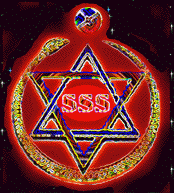
The Servants of the Star and the Snake (SSS) is a federation of ceremonial magicians, shamans, witches, neopagans, sorcerers, and tantrikas founded in the spring of 1994 for the purpose of networking and mutual respect. A Tantric-Thelemic organization, it has no degree system, no grades, no official reading list, no attainments, no hierarchy, no pope, no head, no soteriology, no holy books, no gurus, and no formal initiation. All of these accoutrements are regarded by the SSS as “Old Aeon”and more appropriate for Masonic orders or religious sects. The SSS evolved from the remnants of the Ordo Templi Baphe-metis (OTB). It is based upon the teachings of the cofounder of AMOOKOS (the Arcane Magical Order of the Knights of Shambhala), Shri Gurudev Mahendranath (“Dadaji,” 1911–1991) and Alain Danielou (1907–1994) but retains the Thelemic character of the OTB. The federation is overseen by an administrater-general, a revolving office currently held by Bhaganatha AOM. Associated with the SSS is the Order of Napunsakas in the West.
Brief History:
Our federation of The Servants of the Star and Snake first drew breath on April 6, 1990, when "The Book of Ba Neb Tet" was received from a spiritual being named Andreae by James M. Martin, then head of a "Gnostic-Thelemic occult fraternal order (Ophite-Cainite)" called the Ordo Templi Baphe-Metis. Verse IV of this book speaks of an "inner order" of the O.T.B., "Servants of the Star and Snake". "The Book of Ba Neb Tet" was published in the Spring Equinox, 1991 issue of "Abrasax", the influential occult journal published by Martin. In the same issue, an O.T.B. magus-knight, Auditus-Kaos, wrote a long commentary on Verse IV, calling it "a clear imperative to establish a special Magical Order within the O.T.B., one that is centered around the Mysteries of the Knights Templar."
In this article Auditus-Kaos gives several interpretations of the symbols of the star and snake, emphasizing their Gnostic and Thelemic aspects. It is not clear if the "inner order" of the O.T.B. ever manifested. If so, it was not in existence for long, as the O.T.B. was split by schism and dissolved around the beginning of 1993. About this time, Martin, then known by the magickal name Ekagratanath, began considering that the S.S.S. of his vision might turn out to be something different than had first been interpreted. He had been corresponding with another Texas magician known then as Pandemonanda, later as Eeyore, who was initiated into kundalini yogas as well as Wiccan and Sufi paths. Ekagratanath also communicated with Vajrapaninath (later known as Obeah Marassananda 128), a tantrik and student of Voudon-Gnostic science based in Oslo, Norway, and with Soror Achath, a thelemic and qabalistic magician from Chicago.
It was Vajrapaninath's idea to form a "federation" of magicians, shamans, tantrik yogis, and other open-minded occultists. After months of discussion, meditation, revelatory visions, and several manifestos, the S.S.S., known on the outer as "Societas Stella Serpentis", began in March of 1994. It was established as a federation of Western magicians", but also described as a group of occultists "working in the tradition of Tantric Shaivism and the Sahajiyan Nath-Siddhas." The S.S.S. is unique in occult history as a working group established with "no grades, no degrees, no holy books, no hierarchy, no gurus, no pope, no head, no soteriology, no curriculum, no initiations, and no dues." (Dues were collected, however, for a time under the A.G.-ship of Eeyore, for the purposes of funding publications. They were abolished again by Aion.)
Pandemonanda envisioned the S.S.S. as an occult version of a scientific society, where results of various experiments were shared with the intent of discovering which techniques are the most powerful. The purpose of the S.S.S. would be "to increase knowledge, wisdom, and magickal power of the Brother and Sister wizards. The achievement of FREEDOM is for the individual to attain alone." Ekagratanath wrote on 03/26/94: "If all of us hold an equal rank and exist purely for the exchange of information, we become much more of a single, autonomous organism. A hologram, if you will."
It was not until a year later that the first issue of the S.S.S. magazine, "The Trident" appeared. The main article was "The Building of a Zonule" by Vajrapaninath, which acknowledged the great influence of AMOOKOS on the S.S.S., and the high esteem that the founding members of the S.S.S. have for its founder, Sri Dadaji. "The Trident" continued publishing quarterly until the Summer of 1997. In its pages are found philosophical and historical articles, accounts of personal experiences and experiments, and, notable roundtable discussions of sometimes fiery vehemence. "The Trident" was published, edited, and largely written by Ekagratanath, who later become known as Sahajananda.
In the second issue of "The Trident" appeared a one-page newsletter for members only, edited by Eeyore, that gradually grew into the zine-sized "Vira", later called "Lila". In this less formal publication members could share art, poetry, and personal writings in a more intimate setting. It is also worth noting that Vajrapaninath had earlier put out a publication called "The Ophidian Circkle of Maat", which was subtitled "For the Servants of the Star and the Snake". (The extra "the" before "Snake" is, of course, the original formulation given by Aleister Crowley in "The Book of the Law". The S.S.S., however, retains the wording given in "The Book of Ba Neb Tet." Those who are inclined to ponder such minutiae are welcome to do so.)
Other early members of the S.S.S. included the Chaos magician and Bon and Lamaist Buddhist initiate, residing in the Republic of Singapore, known as Ku Kalkinath, and the Rev. Michael Bertiaux. Rev. Bertiaux was a member for a few months and only contributed one letter to "The Trident" before he decided that his own numerous projects needed his attention and parted amicably with the S.S.S. His influence is still felt, however, and at least two S.S.S. members are his active disciples. Also joining in 1995 was the respected writer known to us by his AMOOKOS name, Shambhala Nath. By Summer, 1998, the S.S.S. had over twenty active members, including other famous occultists, in the U.S.A., Norway, Singapore, Israel, and Australia.
The post of "Administrator-General", or A.G. was established and first held by Sahajananda as a "floating" position of stewardship to be shared ideally by all members. By no means a leadership position, the A.G. is the "one who does most of the work" as far as sending out messages and coordinating communication in the S.S.S. Eeyore held the A.G.-ship after Sahajananda from 1996-98, and was followed by Aion, the current A.G. who has helped establish a viable Internet presence for the federation. Major group workings have included Summer Solstice astral temple gatherings in 1996 and 1997, and, more recently, monthly astral temple convocations at the quartered moon.
The S.S.S. remains a loose confederation of largely solitary magicians. The only physical gathering of members so far was on March 17, 1997 when Sahajananda, Eeyore, Obeah Marassananda 128, and Zarfini met in Corpus Christi, although various membes have visited each other one-on-one. More in-person gatherings are planned.
The S.S.S. remains a most unusual occult organization, and has gone through times of doldrums and times of great creativity. All persons who love freedom are invited to join us in our experiments. Svechchachara!
The Method of Science, the Aim of Religion:
The SSS is thus a widely diverse group of Magickal "Scientists" all working with a wide collections of tools, techniques, goals, ideas, realities and so on. Each of us is attempting Individuation and/or Personal Evolution (or whatever way you want to characterise it). We are familiar with and work with many of the same currents (Thelema, Tantrika, Voodoo, Wicca etc.) in unique and very different ways and with different short-term aims. We experiment and work within our own Circles of Power, often independent of others. We are all Lords and Ladies of our own Magickal Domains.
The SSS exists to share the things we have each discovered in our own private Circles with each other, much as a professional group of scientists will meet occasionally to share what is going on with their research in their own laboratories. We do this for professional growth, curiosity and, of course, a certain degree of fellowship.
The concept of the SSS consciously invokes the notion of the Kaula or Tantrik "family" unit, but extends this notion into cyberspace. The purpose of this SSS website is to "push the envelope" of Magickal practise with the aim of eventually creating an electronic archive of Nu Aeon Grimoires: a site containing SSS member's original rituals, invocations, prayers, yantras, spells etc. Furthermore this electronic sacred space serves to communicate our Gnosis to each other while we are engaged upon The Great Work of furthering psychophysical evolution.
Membership: Not reported.
Periodicals: Lila (occasional).
References:
- Freeman, Harvey. Everything That Is …. Is Within: An Introduction to Dadaji. Center Family Press, 1974.
Sources:
[ « back to TOC ]

Society Ordo Templi Orientis International
S.O.T.O.
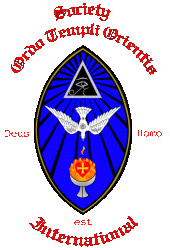
C/o David Bersson, PO Box 59326, Pittsburgh, PA 15210
Among those who made claim to the lineage of the Ordo Templi Orientis (OTO) following the death of Karl Germer (1885–1962), who had succeeded Aleister Crowley (1875–1947) as outer head of the order, was Marcelo Ramos Motta (1931–1987), a Brazilian member of the OTO. He claimed that Germer, on his deathbed, had appointed him outer head of the order. In the years following Germer’s death he completed his initiatic work and assumed the magical status needed to become the leader. In 1975, through the Society of the Ordo Templi Orientis (SOTO), as his branch was known, he issued the first of four massive volumes of the Equinox, each issue of which contained his own writings along with those by Crowley and others. These were seen as a revival of the semiannual publication issued originally by Crowley (1909–1913). Other publications followed.
The SOTO immediately ran into a conflict with the Ordo Templi Orientis over the copyright to the writings of Aleister Crowley that had been left to the OTO in Crowley’s will. The SOTO claimed to be that organization, and writers and organizations not associated with the SOTO who wrote about or published Crowley’s writings were denounced in various issues of the Equinox. The tension between the OTO, SOTO, and Samuel Weiser (the publisher of the first issue of the new Equinox) led to several lawsuits. In 1985 a libel suit filed against Motta and the SOTO by Grady McMurtry (caliph of the OTO) and others, concerning remarks made in the Equinox, resulted in the awarding of all copyrights and trademarks to the OTO and turned back all claims by Motta to be the outer head of the order of the Ordo Templi Orientis. It is the belief of its members that the SOTO is the true OTO and to reject Motta is to reject Crowley.
Motta died two years later in 1987, and at the time of his death left responsibility for the SOTO in the hands of three people—Daniel Ben Stone, Claudia Canuto de Menezes, and William Barden. They, however, failed to follow through on selecting new leadership. At the higher levels the order ceased to operate. Following the withdrawal of de Menezes and Stone, and the death of Barden, Frater Sphinx (aka David Bersson) contacted another senior member, Frater KSK, and initiated correspondence concerning the future of the order. After reaching a consensus, Frater Sphinx assumed control of what was left of the order and began the process of reorganization and rebuilding. In 2007 Bersson published a revised Constitution and OTO Manifesto. According to the constitution, the purposes of the order are to promulgate The Book of the Law and promote the philosophy and the works of Edward Alexander Crowley (aka Aleister Crowley).
The order’s curriculum includes the writings of Aleister Crowley and Marcelo Motta.
Membership:
Not reported. The size and extent of the order, as is the identity of its national and international leadership, is a matter of internal secrecy
Periodicals:
Equinox.
References:
- Motta, Marcelo. Letter to a Brazilian Mason. Nashville, TN: Troll Publishing Company, 1980.
- ———. Manifesto. Nashville, TN: Society Ordo Templi Orientis in America, 1978.
- ———. The Political Aims of the O. T. O. Nashville, TN: Ordo Templi Orientis in America, 1980.
- ———. Thelemic Political Morality. Nashville, TN: Society Ordo Templi Orientis in America, 1978.
Sources:
[ « back to TOC ]

Temple of the Holy Grail
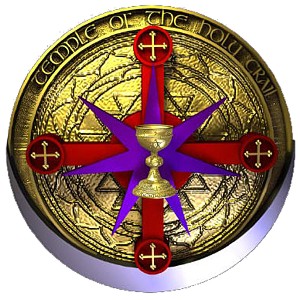
The Temple of the Holy Grail (THG) is an initiatory mystery school for individuals wishing to undertake private advanced esoteric training in order to anonymously serve human and planetary evolution. Training is offered by invitation to people already ordained or otherwise advanced in recognized groups, or to individuals who, having prepared themselves apart from organizations, manifest a devotion to the spiritual unfoldment of humanity and of the planet.
The THG teaches that the Grail mysteries existed in western Europe long before the advent of Christianity as the “Graded Path of Initiation,”comparable to the Lam Rim of Tibetan Buddhism. The mysteries evolved into an esoteric Christian school through the work of the legendary Graalmeister Treverizent in the ninth century and were later associated with chivalric orders, and the alchemical and Gnostic schools.
According to THG history, in the late 1800s a secret English Templar order in possession of an ancient Jewish terra-cotta cup believed to be the true Eucharistic vessel of the Last Supper, now encased in gold, with two ancient silver auxiliary “grails,”prepared to do the sacred Grail Rites that had been done once each century by the order and its predecessors in the year 88 (the mystical Christian Kabbalistic number). The purpose of the rite was to reempower a channel for Divine Blessing upon the planet for the coming century and protect humanity from being overwhelmed by dark forces. The abbot of the order was an elderly man with great concern that the Grail chalices would be stolen by people who wished to use them for magical purposes.
The chalices were secretly transported to London, where the centennial rite (a theurgical Eucharist) was performed, but in spite of all precautions, all three chalices were stolen and used for black magical purposes. After the chalices were retrieved from the thieves, the gold of the True Chalice was melted down, and the pottery cup smashed into the earth. One of the auxiliary chalices turned up at an antiquities auction in Antioch and was purchased by the Metropolitan Museum in New York; it is now exhibited as the “Chalice of Antioch”with legends of it having been the Holy Grail. The third chalice was never found.
In the 1980s, after two decades of spiritual training and progress, the unnamed person destined to become the Grailmaster of the THG, who knew nothing of these events, responded to interior guidance to construct a new chalice through white magical and theurgical preparations that required several years to complete. In August 1988 he was inspired to travel, without any knowledge of the final destination, over 1,000 miles to a sacred site in Canada, where he used the chalice for a theurgical Eucharist to bless the planet and humanity. While returning home, he heard an interior voice naming him the “Grailmaster,”a term unfamiliar to him. He then received teachings telepathically in lucid dreams from a Tibetan lama, which eventually became the First Empowerment of the First Order of THG. Shortly after this he discovered a written account of the Grail Blessing that had been done in 1888. He then began to understand what had been occurring: he had been instrumental in preparing a new vessel for the 1988 centennial Grail Blessing and the blessing had then occurred as scheduled.
Soon after these events, he was contacted by Bp. George Boyer (d. 2008) of the Sanctuary of the Gnosis in London, who transmitted to the Grailmaster all of the charters, titles, and authorities necessary to preserve the esoteric European lineages deriving from the Grail traditions under the auspices of the Temple of the Holy Grail. Bishop Boyer also underwent the new initiations and contributed to the teachings that the Grailmaster began to bring forth in the 1990s.
THG writings state that part of the temple’s authority resides in the apostolic authority of its leadership. Drawing on the community of independent bishops, all 18 historical apostolic and 22 European esoteric lineages flow by live transmission into temple orders. Additionally, the Grailmaster and temple are Keepers of the True Grail, which is the Divine Royal Blood (San Greal in Christian esoteric tradition, often confused with the Grail chalice itself). The THG believes that the Grail is the normally invisible and intangible divine sacrificial energy that nurtures evolutionary unfoldment in the physical universe and among beings developing in this level of existence. The power sanctifies matter. It is the philosopher’s stone that transforms the lower into the higher, expands contracted heart-consciousness, and mediates inspiration, guidance, selfless service, and divine love.
In the Liturgy of the Chalice, the essences of the Holy Grail are poured out as a potent blessing and nurture for the spiritual evolution of all beings in all worlds. Members of the order proceed through the mysteries it perpetuates in an ordered sequence.
Address: PO Box 3816, Santa Cruz, CA 95063-3816
Membership: Not reported.
Sources:
[ « back to TOC ]

Temple of Set
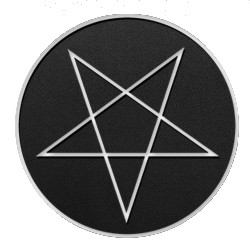
The Temple of Set is an occult initiatory order founded in 1975. A new religious movement and form of Western esotericism, the Temple espouses a religion known as Setianism, whose practitioners are called Setians. This is sometimes identified as a form of Satanism, although this term is not often embraced by Setians and is contested by some academics.
The Temple was established in the United States in 1975 by Michael Aquino, an American political scientist, military officer, and a high-ranking member of Anton LaVey's Church of Satan. Dissatisfied with the direction in which LaVey was taking the Church, Aquino resigned and – according to his own claim – embarked on a ritual to invoke Satan, who revealed to him a sacred text called The Book of Coming Forth by Night. According to Aquino, in this work Satan revealed his true name to be that of the deity Set, which had been the name used by his followers in ancient Egypt. Aquino was joined in establishing the Temple by a number of other dissatisfied members of LaVey's Church, and soon various Setian groups were established across the United States.
Setians believe that Set is the one real god and that he has aided humanity by giving them a questioning intellect, the "Black Flame", which distinguishes them from other animal species. Set is held in high esteem as a teacher whose example is to be emulated but he is not worshipped as a deity. Highly individualistic in basis, the Temple promotes the idea that practitioners should seek self-deification and thus attain an immortality of consciousness. Setians believe in the existence of magic as a force which can be manipulated through ritual, however the nature of these rituals is not prescribed by the Temple. Specifically, Aquino described Setian practices as "black magic", a term which he defines idiosyncratically.
Following initiation into the Temple, a Setian can proceed along a series of six degrees, each of which requires greater responsibilities to the group; as a result, most members remain in the first two degrees. Governed by a high priest or high priestess and a wider Council of Nine, the Temple is also divided into groups known as pylons, through which Setians can meet or correspond in order to advance their magical work in a particular area. Pylons of the Temple are now present in the United States, Australia, and Europe, with estimates placing the Temple's membership between 200 and 500.
Definition
The Temple of Set is a new religious movement, and draws upon earlier forms of Western esotericism. Among academic scholars of religious studies, there has been some debate as to whether the Temple of Set can be characterised as "Satanism" or not. The religious studies scholars Asbjorn Dyrendal, James R. Lewis, and Jesper Aa. Petersen believed that it was apt to consider the Temple of Set to be a Satanic group despite its reluctance to use the term "Satanism" because of its genealogical link to other Satanic groups and its continuing use of "many elements of satanic mythology". Similarly, the sociologist of religion Massimo Introvigne regarded it as Satanist because of its historical origins as a breakaway from the Church of Satan rather than because of its beliefs or practices. Conversely, the scholar Kennet Granholm argued that it should not be considered a form of Satanism because it does not place an emphasis on the figure of Satan. Granholm nevertheless acknowledged that it was an "actor in the Satanic milieu" and part of the wider Left-Hand Path group of esoteric traditions. He suggested that it could also be seen as a form of "Post-Satanism", thereby continuing to reflect its historical origins within religious Satanism.
According to Introvigne, the Temple of Set is a "small but significant" part of the Satanic subculture. The Temple of Set is far more rooted in esoteric ideas than the Church of Satan had been. It has thus been termed "Esoteric Satanism", a term used to contrast it with the "Rational Satanism" found in LaVeyan Satanism. Accordingly, it has been labelled the "intellectual wing of esoteric Satanism", with the Temple presenting itself as an intellectual religion. Aquino possessed a P.h.D. in political science and this formal education was reflected in the way that he presented his arguments, in which he draws broadly upon Western philosophy and science.
History - Foundation
Born in 1946, Michael Aquino was a military intelligence officer specialising in psychological warfare. In 1969 he joined Anton LaVey's Church of Satan and rose rapidly through the group's ranks. In 1970, while he was serving with the U.S. military during the Vietnam War, Aquino was stationed in Bến Cát in South Vietnam when he authored a tract entitled "Diabolicon" in which he reflected upon his growing divergence from the Church of Satan's doctrines. In this tract, teachings about the creation of the world, God, and humanity are presented, as is the dualistic idea that Satan complements God. The character of Lucifer is presented as bringing insight to human society, a perspective that was inherited from the depiction of Lucifer in John Milton's seventeenth-century epic poem Paradise Lost.
By 1971 Aquino was ranked as a Magister Caverns of the IV° within the group's hierarchy, was editor of its publication The Cloven Hoof, and sat on its governing Council of Nine. In 1973 he rose to the previously unattained rank of Magister Templi of IV°. According to the scholars of Satanism Per Faxneld and Jesper Petersen, Aquino had become LaVey's "right-hand man". He had nevertheless developed concerns about the Church of Satan, feeling that it had attracted many "fad-followers, egomaniacs and assorted oddballs whose primary interests in becoming Satanists was to flash their membership cards for cocktail-party notoriety". When in 1975 LaVey abolished the system of regional groups, or grottos, and declared that in future all degrees would be given in exchange for financial or other contributions to the Church, Aquino was disenfranchised; he resigned from the organisation on June 10, 1975. While LaVey seems to have held a pragmatic and practical view of the degrees and of the Satanic priesthood, intending them to reflect the social role of the degree holder within the organization, Aquino and his supporters viewed the priesthood as being spiritual, sacred and irrevocable. Dyrendal, Lewis, and Petersen describe Aquino as, in effect, accusing LaVey of the sacrilege of simony.
Aquino provided what has been described as a "foundation myth" for his Setian religion. Having departed the Church, Aquino embarked on a ritual intent on asking Satan for advice on what to do next. According to his account, at Midsummer 1975, Satan appeared and revealed that he wanted to be known by his true name, Set, which had been the name used by his worshippers in ancient Egypt. Aquino produced a religious text, The Book of Coming Forth by Night, which he alleged had been revealed to him by Set through a process of automatic writing. According to Aquino, "there was nothing overtly sensational, supernatural, or melodramatic about The Book of Coming Forth By Night working. I simply sat down and wrote it." The book proclaimed Aquino to be the Magus of the new Aeon of Set and the heir to LaVey's "infernal mandate". Aquino later stated that the revelation that Satan was Set necessitated his own exploration of Egyptology, a subject about which he had previously known comparatively little. In this account, the direct word of Set was appealed to as a source of legitimation. Moreover, by drawing connections between itself and ancient Egypt, this young religion adopted a legitimisation strategy that tried to antedate both Judaism and Christianity.
Aquino's Book of Coming Forth by Night makes reference to The Book of the Law, a similarly 'revealed' text produced by the occultist Aleister Crowley in 1904 which provided the basis for Crowley's religion of Thelema. In Aquino's book, The Book of the Law was presented as a genuine spiritual text given to Crowley by preternatural sources, but it was also declared that Crowley had misunderstood both its origin and message. In making reference to The Book of the Law, Aquino presented himself as being as much Crowley's heir as LaVey's, and Aquino's work would engage with Crowley's writings and beliefs to a far greater extent than LaVey ever did.
In establishing the Temple, Aquino was joined by other ex-members of LaVey's Church, and soon Setian groups, or pylons, were established in various parts of the United States. The structure of the Temple was based largely on those of the ceremonial magical orders of the late nineteenth century, such as the Hermetic Order of the Golden Dawn and Ordo Templi Orientis. Aquino has stated that he believed LaVey not to be merely a charismatic leader but to have been actually appointed by Satan himself (referring to this charismatic authority as the "Infernal Mandate") to found the Church. After the split of 1975, Aquino believed LaVey had lost the mandate, which the "Prince of Darkness" then transferred to Aquino and a new organization, the Temple of Set. According to both the historian of religion Mattias Gardell and journalist Gavin Baddeley, Aquino displayed an obsession with LaVey after his departure from the Church, for instance by publicly releasing court documents that reflected negatively on his former mentor, among them restraining orders, divorce proceedings, and a bankruptcy filing. In turn, LaVey lampooned the new Temple as "Laurel and Hardy's Sons of the Desert". In 1975, the Temple incorporated as a non-profit Church in California, receiving state and federal recognition and tax-exemption later that year.
History - Later development
Many members of the Temple had raised concerns about Aquino's authoritarian position within it. Aquino relinquished his office of High Priest in 1979 to Ronald Keith Barrett, who produced an inspired text of his own, titled The Book of Opening the Way. Barrett's approach was later criticized as "more mystical than magical" by Temple members. Barrett's leadership was also criticised as authoritarian, resulting in a decline in the Temple's membership. Barrett resigned his office and severed ties with the organization in May 1982. He subsequently established his own Temple of Anubis, which he led until his 1998 death; it survived until the early 2010s. After Barrett's departure, Aquino retook leadership of the Temple of Set. During this period, the sociologist Gini Graham Scott clandestinely participated in the Temple, using her observations as the basis for her 1983 book The Magicians: A Study of the Use of Power in a Black Magic Group.
After receiving his PhD in political science from the University of California, Santa Barbara in 1980, Aquino worked as an adjunct professor at Golden Gate University until 1986 while continuing to serve in the United States Army as an Active Guard Reserve officer at the Presidio of San Francisco. He was fascinated with the connections between occultism and Nazism, resulting in some accusations that he was sympathetic to Nazi ideology. In 1983, he performed a solitary rite at Walhalla, the subterranean section of the Wewelsburg castle in Germany that was utilised as a ceremonial space by the Schutzstaffel's Ahnenerbe group during the Nazi period. This resulted in his formation of the Order of the Trapezoid, a Setian group whose members understood themselves as a chivalric order of knights. From 1987 through to 1995, the Grand Master of the Order of the Trapezoid was Edred Thorsson, who had joined the Temple of Set in 1984 and risen to the Fifth Degree in 1990. Thorsson exerted a "discernible influence" over the Setian community through his books, in which he combined aspects of Satanic philosophy with the modern Pagan religion of Heathenry. In 1980 he founded the Texas-based Rune-Gild, which shared many of the Temple's key philosophical tenets but with a focus on the study of runes and their applications in magical practice.
In the 1980s, Aquino attracted greater publicity for his Temple through appearances on television talk shows like The Oprah Winfrey Show and Geraldo. In 1987, during the Satanic ritual abuse hysteria, the three-year-old daughter of a Christian clergyman accused Aquino of sexually abusing her during Satanic rites held at his Russian Hill home. Responding to the allegations, police raided Aquino's home, however—after no evidence was found to substantiate the allegation and it was revealed that Aquino was living in Washington D.C. at the time of the alleged abuse — the police decided not to charge him with any felony. Aquino attempted to bring formal charges against the chaplain and psychiatrist who had encouraged the girl's claims, although he was more successful in bringing legal action against two books — Carl A. Raschke's Painted Black and Linda Blood's The New Satanists — that had suggested that he was guilty. He then left the Presidio and was transferred to St. Louis. In 1994, Aquino retired from active service in the Army, being honourably transferred to the Retired Reserve and awarded the Meritorious Service Medal.
While the Satanic ritual abuse hysteria declined, Aquino continued to be a figure of prominence in "mind control" conspiracy theories because of his career as a psychological warfare officer in the US Army. In the United Kingdom during this same period, tabloids like the News of the World and Sunday Mirror published sensationalist articles about the Temple. In the mid-1990s a group of British Setians approached the religious studies scholar Graham Harvey and encouraged him to conduct research into the group so as to combat misconceptions about them. The Temple first registered a website in 1997, the same year as the Church of Satan. It would also establish its own intranet, allowing for communication between Setians in different parts of the world.
One member of the Temple was the New Zealander Kerry Bolton, who split to form his own Order of the Left Hand Path in 1990. In 1995, another couple who joined were LaVey's daughter Zeena Schreck and her husband Nikolas Schreck, both of whom were vocal critics of Zeena's father. In 1996, Don Webb became the high priest of the Temple, a position that he held until 2002. He was replaced by Zeena Schreck, but she resigned after six weeks and was replaced by Aquino, who took charge once more. In that year, Zeena led a schism within the organisation, establishing her own Berlin-based group, The Storm, which she later renamed the Sethian Liberation Movement. Aquino stood down as Supreme Priest again in 2004, to be replaced by Patricia Hardy, who was elected to the position of Supreme Priestess. Although no longer in charge of the organisation, he nevertheless remained its most visible spokesperson.
Ideology & Writings
In addition to the Book of Coming Forth by Night, in which Set himself is purported to speak, the Temple's philosophy and teachings are revealed in a series of occult writings titled the Jeweled Tablets of Set. Each tablet is keyed to a specific degree in the Temple hierarchy. Only the introduction to the first tablet (Crystal Tablet of Set), titled "Black Magic", is available for non-members. The Ruby Tablet, which is available for second-degree members, is the lengthiest and most diverse of the tablets.
The private Temple literature is not regarded as secret per se, but is kept restricted because it contains materials which, according to the Temple, may be dangerous to the non-initiated.
Self-deification and Xeper
The human individual is at the centre of Setian philosophy. The Temple places great emphasis on the development of the individual, postulating self-deification as the ultimate goal. The realization of the true nature of the Setian is termed "becoming" or "coming into being" and is represented by the Egyptian hieroglyphic term kheper, or "Xeper" (a phonetic of _Xpr_), as the Temple of Set prefers to write it. This term is described in The Book of Coming Forth by Night as "the Word of the Aeon of Set". Members attempt "to preserve and strengthen" their "isolate, psyche-centric existence" through adherence to the left-hand path. This idea is in opposition to the traditional goal of Hermetic and Western mystical practices, which is the surrendering of the ego into a union with either God or the universe.
The Temple teaches that the true self, or essence, is immortal, and Xeper is the ability to align consciousness with this essence. Aquino taught that there is an afterlife for those who have reached the necessary level of individual development. This afterlife could occur in the individual's subjective universe. Those unable to reach this level dissolve into non-existence when the physical body dies. Self-initiation is knowledge understood as a conjunction of intellect and intuition. In keeping with its emphasis on the individual, the Temple encourages their members to celebrate their own birthday, and does not prescribe any other calendar of religious festivities.
Barrett presented Xem as his Aeonic Word to the Setians, presenting it as a natural and necessary further development of Aquino's Xeper. Aquino later acknowledged Xem as a worthwhile magical concept for Setians to explore, but found Barrett's insistence on its exclusivity as incompatible with the Temple's individualistic philosophy.
Set
Aquino's understanding of Satan differed from the atheistic interpretation promoted by LaVey, and the Temple's theology differs from that of the Church of Satan. The Temple presents the view that the name Satan was originally a corruption of the name Set. The Temple of Set promotes the idea that Set is a real entity, and accordingly has been described as being "openly theistic". It further argues that Set is ageless and is the only real god in existence, with all others having been created by the human imagination. Set is described as having given humanity — through the means of non-natural evolution — the "Black Flame" or the "Gift of Set". This refers to humanity's questioning intellect which sets the species apart from other animals and gives it an "isolate self-consciousness" and the possibility to attain divinity. Aquino argued that the idea of the Gift of Set was inadvertently promoted to a wider audience in Stanley Kubrick's 1968 film 2001: A Space Odyssey. According to Aquino, the black monolith which imparts human-level intelligence onto prehistoric apes in the film was a symbol of Set.
While Setians are expected to revere Set, they do not worship him, instead regarding him as a teacher and a guide. He is portrayed as a role model on which Setians can base their own deification. According to Webb, "we do not worship Set - only our own potential. Set was and is the patron of the magician who seeks to increase his existence through expansion."
Embracing the idea of aeons from Crowley's Thelema, Aquino adopted the Crowleyan tripartite division between the Aeon of Isis, Aeon of Osiris, and Aeon of Horus, but added to that the Aeon of Satan, which he dates from 1966 to 1975, and then the Aeon of Set, which he dated from 1975 onward. Despite presenting these chronological parameters, Aquino also portrayed the aeons less as time periods and more as mind-sets that can co-exist alongside one another. Thus, he stated that "A Jew, Christian or Muslim exists in the Æon of Osiris, a Wiccan in that of Isis, and a Thelemite in that of Horus".
Magic
Aquino placed an emphasis on what he deemed to be the division between the objective and subjective universes. In the Setian religion, the objective world is understood as representing the natural world and humanity's collective meaning systems, while the subjective universe is understood as the individually experienced world and individual meaning systems. Following earlier esotericists like Crowley, Aquino characterised magic as "causing change in accordance with will". Unlike LaVey, Aquino expressed belief in the division between black magic and white magic. He described white magic as "a highly-concentrated form of conventional religious ritual", characterising it as being "more versatile", "less difficult" and "less dangerous" than black magic. However he criticised white magic as "fraud and/or self-delusion" which deceives the consciousness into thinking that it has been accepted in the objective universe.
Aquino divided black magic into two forms, lesser black magic and greater black magic. He stated that lesser black magic entails "impelling" things that exist in the "objective universe" into doing a desired act by using "obscure physical or behavioural laws" and into this category he placed stage magic, psychodramas, politics, and propaganda. Conversely, he used the term greater black magic in reference to changes in the subjective universe of the magician, allowing them to realize their self in accordance with the principle of Xeper. Among Setians it is accepted that there may be changes in the objective universe as a result of greater black magic, however such effects are considered secondary to the impact that they have on the subjective universe.
Within the Temple, rituals are typically known as "workings", and are most often carried out alone. Stressing the religion's individualist nature, there are no rituals that are specifically prescribed by the Temple. Aquino also emphasized that in order to achieve a desired aim, the Setian should carry out physical actions alongside magical ones. There are no regular occasions which are marked by fixed rituals, and the Temple holds to no calendar of festivals.
Insignia
The Temple uses an inverted pentagram as its insignia, known as the "Pentagram of Set" to Setians. The use of the geometric shape is derived from the Sigil of Baphomet used by the Church of Satan, although stripped of its overtly Satanic add-ons. The Temple explains the meaning and significance of the pentagram by referring to Pythagorean ideas and "mathematical perfection". At Setian gatherings, members wear the pentagram as a medallion. The medallion is colored according to the initiation degree of the Setian.
Both the Church of Satan and the Temple of Set also use the trapezoid symbol. The version used by the Church includes flames, a pitchfork and the number 666, while the trapezoid of the Temple has a left-facing Egyptian sceptre, and the number 666 stylized in geometric shapes rather than as clear numbers.
Structure
The internal structure of the Temple of Set is closely reminiscent of that of the Church of Satan as it existed in the 1970s.
Initiatory Structure of the T.O.S.
All members of the Temple must be affiliated with a pylon, and thus membership is by application, requiring contact with a Setian priestess or priest followed by an evaluation period. The participation of non-initiated in the Temple's rituals are forbidden, due to the belief that their rituals would be dangerous in the wrong hands.
The Temple of Set recognizes several stages or degrees of initiation. The degrees indicate the individual Setian's development and skill in magic. The degree structure is based on that of the Church of Satan, which in turn was based on the degrees of a nineteenth-century occult group, the Hermetic Order of the Golden Dawn. The Temple terms the progression through degrees as "recognitions", because the organization's philosophy sees that the individual member initiates themselves and that the Temple merely acknowledges this by granting the degree. These degrees are:
| Degree |
Label |
| I° |
Setian |
| II° |
Adept |
| III° |
Priest / Priestess of Set |
| IV° |
Magister / Magistra Templi |
| V° |
Magus / Magna |
| VI° |
Ipsissimus / Ipsissima |
The priesthood of the Temple of Set consists of members holding the third degree or higher; those in the first and second degrees are considered "lay members" of the Temple. The first degree serves as a space for mutual evaluation, in which the Temple assesses whether the individual is appropriate for the group, and the individual decides whether they wish to further their involvement with it. Full membership comes with recognition to the second degree. Many members do not advance beyond the second degree, nor is this expected of them, as while the first and second degree members use the organization's teachings and tools for their own development, the priesthood involves greater responsibilities towards the organization, such as being its official representatives.
Recognition is performed by members of the priesthood. The fourth degree, which is acknowledged by the high priest/priestess, entails that the individual is so advanced in their magical skills that they are able to found their own school of magic, represented in the different orders of the Temple. The fifth degree can only be awarded by the unanimous decision of the Council of Nine and by the approval of the Temple's high priest/priestess. A fifth degree member has the power to utter and define a concept which somehow affects the philosophy of the organization, such as the concept of Xeper defined by Aquino in 1975. Only a handful of members have attained this degree and most "fifth-degree" concepts defined in such a manner are no longer studied in the organization. The final sixth degree represents a Magus "whose Task is complete". This degree is held by a very select few in the Temple, although any fifth-degree member can assume the sixth degree based on their own assessment.
Leadership
The organization is led by a high priest/priestess, who is also the public face of the Temple. The high priest is chosen among fourth or higher degree members by the chairman of the Council of Nine. This ruling council has nine members chosen from the priesthood (third degree or higher), whose mandate lasts for nine years with a new member being elected every year. The chairman of the council is chosen from among the council members each year. The council has the ultimate ruling power in the Temple and even the high priest is responsible to it. The Temple also has an executive director, whose task is to deal with administrative issues.
Since its founding in 1975, the temple has had the following high priests/priestesses: Michael A. Aquino (1975–1979, 1982–1996, 2002–2004) — Ronald K. Barrett (1979–1982) — Don Webb (1996–2002) — Zeena Schreck (2002) — Patricia Hardy (2004–2013) — James Fitzsimmons (2013-present)
Pylons, elements, and orders
In addition to the international organization, the Temple sponsors initiatory Orders and Elements and local groups called Pylons. Pylons are intended to facilitate the initiatory work of the Temple's members by conducting meetings where discussions and magical works take place. The purpose of a pylon is to provide a space in which the Setian can focus on their religion, aided by like-minded individuals. Pylons typically meet in a member's home. Members usually join the Pylon located geographically closest to them. Correspondence- or Internet-based Pylons also exist, with Harvey noting that this online networking is more common than in-person interaction. A Pylon is led a by a second-degree (or higher) member who is called a Sentinel. The term pylon derives from the architectural features which served as fortified gateways to ancient Egyptian temples. One Finnish Setian informed Granholm that the relationship between the orders and the temple was like that of different departments in a university.
Elements are loosely structured interest groups, where specific themes and issues are addressed. They can be open for non-members and are commonly in operation only for short periods. Topics of interest include, for example, animal rights, which was the subject of the Arkte element operated by Aquino's wife Lilith.
There are sections of the Temple known as Orders, each of which focus on a particular theme, for instance ancient Egypt, Norse culture, Tantric Hinduism, or vampirism. Others focus on a particular skill, for instance the Order of Uart focuses on the visual arts and the Order of Taliesin on music. Orders can be understood as schools of different aspects of magic providing different paths of initiation. Orders are led by grand masters, who will usually be the founder of the order. In longer-lived orders the founder may have a successive grand master. Orders are founded by members of the fourth degree. When members reaches the second degree of initiation, they are expected to join an order of their own choosing. In normal circumstances, a Setian is only permitted to join one order, however special dispensation can be obtained for a practitioner to join two.
Membership:
In 2000, the Temple had thirteen pylons, which were operating in the United States, Australia, Germany, and across Sweden and Finland. The extent of the Temple's membership has not been publicly revealed by the group; however, in 2005 Petersen noted that academic estimates for the Temple's membership varied from between 300 and 500, and Granholm suggested that in 2007 the Temple contained circa 200 members. The Temple's members come from a variety of racial backgrounds.
In 1999, the anthropologist Jean La Fontaine suggested that in Britain there were 100 members of the Temple at most, and possibly "considerably fewer". In 2001 the scholar Gareth Medway posited that the group had 70 to 80 members in the United Kingdom, adding that it was the largest Satanic group then active in the country. In 2009, Harvey concurred with La Fontaine's assessment, although still believed that it was the largest Satanic group in the United Kingdom. He noted that most members were male, between the ages of twenty and fifty, and that — despite his expectation that they might be political extremists — they endorsed mainstream political positions, with all those whom he communicated with stating that they had voted for either the Conservative Party, Labour Party, or Liberal Democrats.
References:
- Asprem, Egil (2012). Arguing with Angels: Enochian Magic and Modern Occulture. Albany: State University of New York Press. ISBN 978-1-4384-4190-0.
- Baddeley, Gavin (2010). Lucifer Rising: Sin, Devil Worship & Rock n' Roll (third ed.). London: Plexus. ISBN 978-0-85965-455-5.
- Drury, Nevill (2003). Magic and Witchcraft: From Shamanism to the Technopagans. London: Thames and Hudson. ISBN 978-0-500-51140-4.
- Dyrendal, Asbjørn (2012). "Satan and the Beast: The Influence of Aleister Crowley on Modern Satanism". In Henrik Bogdan and Martin P. Starr (eds.). "Aleister Crowley and Western Esotericism". Oxford and New York: Oxford University Press. pp. 369–394. ISBN 978-0-19-986309-9.
- Dyrendal, Asbjørn; Lewis, James R.; Petersen, Jesper Aa. (2016). The Invention of Satanism. Oxford and New York: Oxford University Press. ISBN 978-0-19-518110-4.
- Faxneld, Per; Petersen, Jesper Aagaard (2013). "Introduction: At the Devil's Crossroads". In Per Faxneld and Jesper Aagaard Petersen (eds.). The Devil's Party: Satanism in Modernity. Oxford: Oxford University Press. pp. 3–18. ISBN 978-0-19-977924-6.
- Gallagher, Eugene (2014). Reading and Writing Scripture in New Religious Movements: New Bibles and New Revelations. New York City: Springer. ISBN 978-1-137-43483-8.
- Gardell, Matthias (2003). Gods of the Blood: The Pagan Revival and White Separatism. Durham and London: Duke University Press. ISBN 978-0-8223-3071-4.
- Granholm, Kennet (2009). "Embracing Others than Satan: The Multiple Princes of Darkness in the Left-Hand Path Milieu". In Jesper Aagard Petersen (ed.). " Contemporary Religious Satanism": A Critical Anthology. Farnham: Ashgate. pp. 85–101. ISBN 978-0-7546-5286-1.
- ——— (2013). "The Left-Hand Path and Post-Satanism: The Temple of Set and the Evolution of Satanism". In Per Faxneld and Jesper Aagaard Petersen (eds.). The Devil's Party: Satanism in Modernity. Oxford: Oxford University Press. pp. 209–228. ISBN 978-0-19-977924-6.
- ——— (2014). Dark Enlightenment: The Historical, Sociological, and Discursive Contexts of Contemporary Esoteric Magic. Leiden: Brill. ISBN 978-90-04-27486-0.
- Harvey, Graham (1995). "Satanism in Britain Today". Journal of Contemporary Religion. 10 (3): 28–296.
——— (2009). "Satanism: Performing Alterity and Othering". In Jesper Aagard Petersen (ed.). Contemporary Religious Satanism: A Critical Anthology. Farnham: Ashgate. pp. 27–40. ISBN 978-0-7546-5286-1.
- Introvigne, Massimo (2016). Satanism: A Social History. Leiden and Boston: Brill. ISBN 978-9004288287.
- Lewis, James L. (2001). Satanism Today: An Encyclopedia of Religion, Folklore, and Popular Culture. Santa Barbara: ABC-CLIO. ISBN 978-1-57607-292-9.
- Hume, Lynne; Drury, Nevill (2013). The Varieties of Magical Experience: Indigenous, Medieval and Modern Magic. Santa Barbara: ABC-CLIO Press. ISBN 978-1-4408-0418-2.
- La Fontaine, Jean (1999). "Satanism and Satanic Mythology". In Bengt Ankarloo and Stuart Clark (eds.). The Athlone History of Witchcraft and Magic in Europe Volume 6: The Twentieth Century. London: Athlone. pp. 94–140. ISBN 0-485-89006-2.
- van Luijk, Ruben (2016). Children of Lucifer: The Origins of Modern Religious Satanism. Oxford: Oxford University Press. ISBN 978-0-19-027510-5.
Medway, Gareth J. (2001). Lure of the Sinister: The Unnatural History of Satanism. New York and London: New York University Press. ISBN 978-0-8147-5645-4.
- Petersen, Jesper Aagaard (2005). "Modern Satanism: Dark Doctrines and Black Flames". In James R. Lewis and Jesper Aagaard Petersen (eds.). Controversial New Religions. Oxford: Oxford University Press. pp. 423–457. ISBN 978-0-19-515683-6.
- ——— (2009). "Introduction: Embracing Satan". In Jesper Aagard Petersen (ed.). Contemporary Religious Satanism: A Critical Anthology. Farnham: Ashgate. pp. 1–24. ISBN 978-0-7546-5286-1.
- ——— (2012). "The Seeds of Satan: Conceptions of Magic in Contemporary Satanism". Aries: Journal for the Study of Western Esotericism. 12 (1): 91–129. doi:10.1163/147783512X614849.
- ——— (2013). "From Book to Bit: Enacting Satanism Online". In Egil Asprem and Kennet Granholm (eds.). Contemporary Esotericism. Sheffield: Equinox. pp. 134–158. ISBN 978-1-908049-32-2.
- ——— (2014). "Carnal, Chthonian, Complicated: The Matter of Modern Satanism". In James R. Lewis and Jesper Aa. Petersen (ed.). Controversial New Religions (second ed.). Oxford: Oxford University Press. pp. 399–434. ISBN 978-0-19-931531-4.
- Schipper, Bernd U. (2010). "From Milton to Modern Satanism: The History of the Devil and the Dynamics between Religion and Literature". Journal of Religion in Europe. 3 (1): 103–124
Sources:
[ « back to TOC ]

Temple of the Vampire
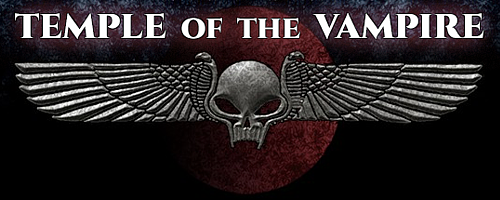
Temple of the Vampire emerged in the late 1980s, paralleling elements of the Western Esoteric magical tradition and utilizing a vampiric metaphor. It practices what it terms the religion of Vampirism. Like many magical groups, its members tend self-consciously toward an elitism, and see themselves as above the mass of humanity by seeking authentic power, wealth, and worldly enjoyment as well as physical immortality. Members are described as Vampires. They believe that Vampires, people like themselves, created the world’s religions to keep humankind docile and civilized.
Demythologized, the Vampiric perspective is a rational religion, but one that acknowledges the hidden natural laws that are referenced in order to work magic. Magic is real and the Vampire honors the results it produces. The religion is also focused on this life, and the active pursuit of physical immortality, both through the current scientific advances in medicine and bioengineering, as well as by pursuing the traditional teachings of the Vampire religion. The temple motto is “Test Everything. Believe Nothing”; the religion is based not on faith but on validated personal experience.
The Vampire pictures two realities. The Daylight self is a true skeptic who renounces superstition while maintaining an open mind to validated evidence. The Nightside self practices magic using techniques revealed to advanced members. The practice of magic can lead to appropriation of the powers traditionally associated with the vampire (hypnotic control, shapeshifting, and even physical immortality). It also leads to contact with the Undead Gods (the advanced members of the religion) and allows for the attainment of the transhuman condition.
The essential teachings of the temple are summarized in The Vampire Bible. Membership begins with the purchase of authorized copies of The Vampire Bible and acceptance of its basic perspective. Purchase of The Vampire Bible and a written agreement to not engage in criminal activity allows one to be registered as a lifetime member. However, to become a subscribing active member is to commit to achieving measurable success in wealth acquisition and survival techniques, as well as to progress through the various levels of experience of the Vampiric existence.
Adult members may join cabals, local groups of temple members. Cabals are now located internationally throughout the world. Past conclaves have been held in Washington, D.C., London, and Australia.
Address: Box 3582-E, Lacey, WA 98509
Membership: In 2008 the Temple reported cabals in all 50 states and approximately 40 countries, including most of the countries of Europe. In addition there were cabals in Australia, New Zealand, Brazil, South Africa, Malaysia, Japan, China, and Canada.
Periodicals: Lifeforce: The International Vampire Connection to CABAL.
Sources:
[ « back to TOC ]

Temple ov Psychick Youth
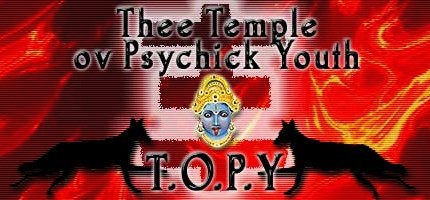
The Temple ov Psychick Youth (TOPY) is a loosely organized magical group that originated in 1981 out of the philosophical musings of musician Genesis P. Orridge. The beginning was marked by Orridge leaving a band, Throbbing Gristle, to start the temple as well as a new musical group, Psychic TV. He wished to explore the nature of human limitations, conditioning, and potential and saw performance art as a tool for his investigation. He soon concluded that he was doing magic. Early on, he reached the conclusion that humans possess an endless potential. He came to resent any constraints on this potential, a belief that echoed what Aleister Crowley maintained in Book of the Law:“The word of sin is restriction.”
As TOPY developed, it ascribed the chief problem of society to the extreme narrowing of human choice down to a few freedoms and the sleep state in which most people exist, unaware of their vast potential. In this sleep state, society reaches a crisis as more and more increasingly zombie-like individuals are required to produce less. Religion and politics are the primary forces putting people to sleep. Temple membership consists of people who are awake to their possibilities and are constantly fighting constraints even as they realize their potentials.
The first realization in the wakening process is the individual’s acceptance of mortality and a coming to terms with physical transience. The acceptance of mortality liberates. Also, temple members expect to come into a relationship with their True Will (in the Thelemic sense of “Do what thou wilt”) and act in accordance with it. As Crowley expressed it, “Do what thou wilt shall be the whole of the Law.”From such an approach to life, an intuitive way of acting, acting according to what one believes rather than from any public moral code, emerges.
Essential to developing such an approach is attention to one’s sexuality. Rather than conforming to accepted public sexual norms, one should express sexuality according to one’s own belief. Since sex is the basic and universal motivator of human action, it is the most appropriate tool for initially claiming self-control.
A logical extension of its belief about the power of sex, the Temple asserts that ritual sex magick is the best means of liberating the energy needed to progress. As one grows and transforms within the continuously changing environment, magical activity allows for constant adaptation. As one discovers and moves toward realizing one’s True Will, ritual magick allows its actualization. Ritual magick pushes the individual to test his or her own limitations and often moves him or her outside accepted behavioral patterns. Ritual magick includes the mastering of altered states of consciousness that in and of themselves produce a new view of reality.
TOPY is unusual in the magical community in that it is not organized in a hierarchical fashion. Members are regarded as equals whose varying skills and interests complement each other. They are united in a visionary psychick alliance. TOPY also rejects the idea of secret rituals (a belief that grew out of, and was made possible by, the publication during the last generation of all of the secret Crowleyan magical rituals). While the rituals used and created by individual TOPY members vary considerably, the working of sigil magick, a practice especially associated with the late Austin Spare, is by far the most common practice. Sigils are symbolic representations of a magical goal that are created by writing out a sentence articulating one’s goal and then reducing that sentence to a simple symbol. The symbol/sigil is then energized by an act of magick during which the sigil is anointed with a set of body fluids (spittle, blood, and sexual secretions) and the attachment of body hair. A basic belief of the Temple is that the visualization of a goal and the magick applied to that goal causes its realization.
Statement of Intent
Thee Temple ov Psychick Youth (TOPYNA 1985-2008) existed to promote a system ov functional, demystified magick, utilising both pagan and modern techniques. It is a process ov individual and collective experimentation and research with no finite answers, dogmas or unchallengeable truths. It is for each to discover his or her own understanding ov thee questions that suggest themselves, and through that voyage ov discovery to find their personal and true identity, thee True Will.
Thee Temple was formed as an organization of Individuals dedicated to updating and de-mystifying religious thought, & also dedicated to creating a world where Individuals can be free to express themselves by whatever means they wish to. We wish to break Control at all levels. We experiment with whatever methods we can utilize to accomplish these goals - magick, technology, poetry, musick, whatever!
As first steps towards change, we attempt to cultivate an awareness ov thee consequences ov our thoughts and actions, and to direct our energies in constructive directions. All this is done on thee understanding that our thoughts and behaviour form thee interface between our lives and thee lives ov others, and their repercussions are therefore endlessly returning.
Awareness is consequently a requirement for our personal and collective survival and evolution. Still, we recognise that awareness itself is dependent on information, communication, and personal commitment. Our work is subsequently practical, exchanging models and methods we have found useful to ourselves. Thus we do not dictate, but rather focus on expanding thee available possibilities through thee cross-fertilisation ov suggestions, successes, and failures. And for us this is a full-time commitment, a continual process ov being, an endless myriad ov becomings.
Address: PO Box 163138, Sacramento, CA 95816
Membership: Not reported. There are several centers of activity in the United States.
References:
- Burton, Tina. “‘Intuitive Magick?’: A Study of the Temple ov Psychic Youth, 1981–1989.”Unpublished paper in the American Religions Collection, Davidson Library, University of California, Santa Barbara, 1989.
- An Introduction to the Temple ov Psychick Youth. Brighton, UK: Temple Press Limited, 1989.
Sources:
[ « back to TOC ]

Thelemic Gnostic Church of Alexandria
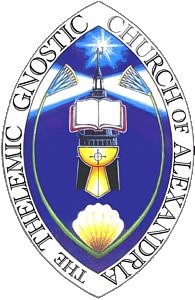
The Thelemic Gnostic Church of Alexandria (TGCA) is the religious arm of the Order of Thelemic Knights (O.T.K.), a fraternal order in the Thelemic tradition of Aleister Crowley (1875–1947). The O.T.K. was founded in 1999 by Gerald del Campo, who serves as both the primate of the Thelemic Gnostic Church and head of the Order of Thelemic Knights.
The Church advocates the Thelemic magick espoused and taught by Aleister Crowley and separates itself from the popular Christian Gnosticisms that emerged in the late twentieth century. It posits in their stead the Thelemic interpretation of the individual’s spiritual nature. The church teaches that spiritual insights are to be found in all the world’s scriptures when properly interpreted, but that institutional religion tends to have a distorting effect on understanding.
By Gnosticism, we do not mean the Christian revival that has become so popular today, but a true Gnostic interpretation of one’s spiritual nature as informed by the tenets of Thelema. We posit that all sacred texts yield profound insights, and that much of the messages in these texts are lost when distorted by institutionalized religions. Our interpretation of religion is quite simple:
The church does not concentrate on building a relation to God (an unknowable reality) or the afterlife, rather it emphasizes assisting members to live to the fullest in the present as they follow their True Will or destiny, which they feel will lead to positive social change.
The Church is led by its patriarch, under whom there are bishops, priests, and deacons. As a New Aeon church, the Thelemic Gnostic Church of Alexandria freely admits women to all levels of the priesthood. The church opposes any legislation that would ban gay marriage. It holds that for adults, how sexuality is lived out is a matter of personal choice, including the choice of celibacy.
From the "Manifesto of the Thelemic Gnostic Church Of Alexandria":
The Thelemic Gnostic Church of Alexandria is the religious arm of The Order of Thelemic Knights. A true Gnostic Church, welcoming students of any religious, philosophical path or religious background.
The Church posits that all holy books contain profound insight into human nature only when they are studied as poetry or myth. All religions possess the potential of bringing out the worst in mankind when interpreted literally. Prophetic texts receive special attention when corresponding to current events, and emphasize the importance of knowing what to take literally and what to take metaphorically as the most important part of any religious life. Our teachings reject the idea that Thelema originated in a vacuum, and suggest that by studying the religious doctrines which the Prophet scrutinized the individual will be lead to a greater understanding of Thelema and its esoteric purpose.
By Gnosticism, we do not mean the Christian revival which has become so popular today, but a true Gnostic interpretation of one’s spiritual nature as informed by the tenets of Thelema. We posit that all sacred texts yield profound insights. Much of the messages in these texts are lost when distorted by institutionalized religions. Our interpretation of religion is quite simple:
1. The social/ritualistic approach to transcendence.
2. A social celebration of one’s religious philosophy
3. A way to show reverence toward one’s internal deity and the deity of his or her comrades
4. Spiritual community made up of individuals that share the same beliefs
The concept of God as one supreme deity who rules over the universe is viewed by us as an open ended question. We pay very little attention to the “afterlife.” It isn’t that we don’t believe that the possibility exists; it is that we view the entire concept as irrelevant to Our Mission of causing change in THIS world. The Church’s emphasis is on helping its members get the most out of their lives, each according to their own True Will while causing positive social changes – while living right now because this is where we are. The dying part is something that will inevitably take care of itself in its own time.
Although The Thelemic Gnostic Church of Alexandria respects the individual choice of religious belief, and often quotes from the various Judaic, Christian, Taoist, Buddhist, Hindu and other Holy Books, different religious persuasions are not permitted to practice their religion or evangelize their particular belief systems at Our Sanctuaries. Special dispensation may be made for purely scholastic reasons and research. However, these instances are rare.
Holy Orders
There are various stations or positions of service within the Church.
The most important ones in terms of running the Church’s activities are the Holy Orders: Bishops, Priests and Deacons, which serve under the direction of the Patriarch. The Thelemic Gnostic Church of Alexandria considers these Orders as sacraments.
Ordination of Women
The old aeon churches were largely based on the concept of the phallicism indicative of the Aeon of Osiris. With regards to the Sacrament of the Mass, Leadbeater rightfully wrote that “…this particular type of magic is not adapted to work through the feminine organism… the ecclesiastical power is meant to flow through male channels… the particular power of the Christian religion is intended to flow along masculine channels.…” In a letter known as “Ordinatio Sacerdotalis,” Pope John Paul II wrote that the Catholic Church had no authority to ordain women, and therefore female priests are something of an oxymoron. All other philosophical differences aside, we believe that those two statements are solidly founded on the metaphysical concepts of the patriarchal period in which they were written.
The Thelemic Gnostic Church of Alexandria, however, is a New Aeon Church and has a unique understanding of the metaphysical implications dictated by the Aeon of The Child. In accordance with that understanding, not only does Our Church offer women Holy Orders, but we encourage women to seek this type of service. We do not recognize the title “priestess” however – all members of Our Priesthood are known simply as Priests. Female Bishops, however, go by the title “Sophia.”
Religious control
The Church teaches to identify fundamentalism and confront it when it leads to cultish behavior, mind control, manipulation, psychological coercion, torture and unethical influence wherever such behavior is encountered. It may be said that one of Church’s missions is to protect the individual’s freedom, which includes freedom of thought, freedom of speech, freedom of religion and freewill – which we hold to be the elemental right of all humans. Without the right to observe and consider the world objectively, think rationally, or to formulate beliefs based on ones observations there can never be freedom.
Gay marriage
Our Church views Marriage as a sacred institution. A religious matter to be interpreted by the Churches – not the State, This social problem illustrates that if a separation of Church and State truly existed, this issue wouldn’t be receiving the attention it is today. We hold the opinion that Churches that would allow Gay Marriages should, and those that felt same-sex marriage conflicted with their dogma could refuse them. But for the Our Church the issue of same-sex marriage extends far outside of any religious or dogmatic considerations, since at least in the United States, married individuals enjoy some very significant benefits not available to unmarried partners of ANY sexual preference. This makes it an issue of equality, fairness and justice and this is why we oppose any sectarian legislation banning it.
Celibacy
We believe that an adult person’s sexuality is a matter of their own business. We don’t pass judgment of individuals based on their sexual behavior. Provided it is not destructive to the Church or its members. Nor do we hold any sexual conditions on Our Clergy. Some choose celibacy as a path to enlightenment. In fact, we believe that the practice of withholding from sex in order to attain some spiritual goal is a legitimate, but almost always misunderstood Hindu practice. Chinese magical and alchemical manuscripts use the same practice for the same ends in .
The Battle for Freedom and War
The subject of war is a difficult one during these difficult times. It often seems as though the entire world is engaged in it. One can interpret the Battle for Freedom in many ways. For practical purposes we see it to fit into three categories. Individual Ability, Joint Fraternal Struggle, and the reality of war as physical violence. Which must ultimately be the last resort to resolving any conflict.
A perfect example of Individual Ability is the Battle for Freedom as might be interpreted by a person who possesses knowledge of secular law. Their battle could well be a War on Injustice. For a teacher, it might be a War on Ignorance; if a Doctor, a War on Disease; for a rich person, a War on Poverty. All individuals are specifically designed to take up some cause. Each and every one of us according to our true nature and will as manifest in our physical lives. When these causes are taken up by groups of individuals, such as OTK and/or The Thelemic Gnostic Church of Alexandria, they become Joint Fraternal Struggles. These are the battles which concern Us today.
In most industrialized countries, physical war is the realm of politicians who are usually members of multinational corporations rich enough to not have to fight them. War is real for the poor. Who usually serve through military service because this provides them with some opportunity at an education and/or career. Mostly it is the middle class or poor that dies for the benefit of these corporations.
War is what occurs when diplomacy and reason have failed to justify some hostile aggression against another nation. Situations are created to benefit others. Often times these actions lead to murder, poverty and oppression. When the oppressed rightly fights back, the oppressing government never fails to point out the animal nature of those that oppose them. Conveniently leaving out the history which led to the aggression in the first place. During WWII, Hitler’s forces referred to the French Resistance as “terrorists.”
Aries, the god of war has four companions: Deimos, which means Fear; Phobos (Fright); Eris (Strife); and Enyo, who was the destroyer of cities. Aries didn’t care about whose side he was on. He didn’t care about the right or wrong of war – he simply liked bloodshed. Pro-war propaganda is designed to make us think like Aries.
It is inevitable that one day Thelemites will have to face Thelemites in the battlefield. This did indeed occur in recent memory in the Bosnian/Croatia conflict. Like all good Thelemites, they went to Crowley’s writings to see what he had to say about this in MWT. His reply was appalling to some because he seemed to condone Thelemites killing other Thelemites. He wrote that when it comes to physical war Brothers should fight fiercely against one another in the battlefield, but in Lodge they should love one another. On the surface this doesn’t seem to be much of an answer. What he was really getting at is similar to “give unto Cesar that which is Cesar’s”. He seemed to indicate that each person had a duty to defend his country, even if that meant going against a Brother.
The Thelemic Gospel Church of Alexandria is a member of the North American College of Gnostic Bishops. Gerald del Campo serves as the College’s secretary.
Address: C/o Sanctuary of the Golden Flower, PO Box 8052, Portland, OR 97280
Membership: Not reported.
Sources:
[ « back to TOC ]

Thelemic Order and Temple of the Golden Dawn
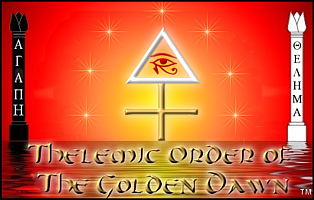
The Thelemic Order and Temple of the Golden Dawn was established in 1989 by Christopher S. Hyatt and David Cherubim. The Thelemic Order of the Golden Dawn was founded in 1990 as the Thelemic Temple and Order of the Golden Dawn in Los Angeles by David Cherubim, its frater superior chief. It is a magical / religious / scientific order devoted to the teachings of Aleister Crowley and exists to assist in the initiation of persons into the magical life of Thelema. Thelema (or will) was the basic concept of Crowley’s magical system. The order offers seven grades of initiation from neophyte to ipsissimus, each level representing one of the seven chakras of the human body in the Indian tantric system, one of the seven planets of traditional astrology, and one of the seven metals of alchemy.
The order has attempted to interpret Crowley’s Book of the Law (1904), the basis of his proclamation of the new Aeon of Horus in which his followers now consider we are living. Regarding ritual, the order believes that the injunction “rituals shall be half-known and half-concealed”means that initiation rituals should be developed in response to the nature of each initiate. Thus each initiation of a member becomes a unique event.
The members of the order together constitute a religious body of free warriors who are seeking to extend the dominion of the Law of Thelema; that is, they are attempting to establish on earth the principles of The Book of the Law. The methods for accomplishing this task are occult research, practical mysticism, ceremonial magick, and tantric alchemy. The order also offers members a system of self-initiation based upon the Qabalah (Kabbalah) and the Tarot.
The order has been created in an environment in which the great majority of Crowley’s writings (including the rituals of the Ordo Temple Orientis, which he headed) have been published and are readily available. It is assumed that members have or will gain a solid background in Crowley’s thought.
In the early 1980s Hyatt, a student of the famous magician Israel Regardie (1907–1985) and founder of Falcon Press, conceived the idea of a new magical order inspired by the Hermetic Order of the Golden Dawn. The Golden Dawn, the original ceremonial magic organization founded in 1880 in England, had become the fountainhead of modern magical teachings. Regardie made many of the teachings of the order available to the general public in 1937–40 when he published The Golden Dawn, a multivolume reprint of the basic documents and rituals. Regardie also wrote a number of books that have become standard reading for anyone doing ceremonial magick. Falcon Press was also responsible for reprinting many of Regardie’s books in the 1970s and early 1980s. David Cherubim, a ceremonial magician, met Hyatt shortly after Regardie’s death in 1985. The first initiations for the order were made in March 1990. Since that time, initiation ceremonies have been held each equinox and solstice.
While inspired by the older Golden Dawn, the new order differs in several important aspects. The older Golden Dawn, for example, had a distinctly Christian cast. The new order is Thelemic. It accepts the revelation of the “new aeon” that began in 1904 with the giving of The Book of the Law to Aleister Crowley by the entity Aiwass. The new aeon is named for Horus, the son of Osiris and Isis, and is designated the Crowned and Conquering Church.
The Law of Thelema (or Will) as enunciated inThe Book of the Law asserts the right of every person to be the god that they are rather than follow false gods and their outmoded commandments. There are no gods but man. Each individual has a duty to discover his or her true purpose in life, and to create and assert that purpose. The order initiates members into the truth of their godhood and supplies them with means (ceremonial magick, tantra, astrology, yoga, tarot, and the Qabalah) of realizing their true will. The goal of the order is to create a new race of free men and women who will in turn build a new civilization based upon the Law of Thelema.
Membership is limited to people over 18 years of age. The order has a correspondence course for members unable to attend lectures in either Phoenix or Los Angeles. Falcon Press publishes the writings of Hyatt, Regardie, and others in basic agreement with the Thelemic teachings. Associated with the order is the Israel Regardie Foundation in Los Angeles, originally established by Regardie’s student Laura Jennings.
Address: C/o New Falcon Publications, 1755-A Purina Way, Sparks, NV 89431
Membership: In 1997 the group reported that there were 200 members in the United States, 20 in Canada, and 100 in Brazil. There were temples for initiation in the United States and Brazil.
Periodicals: Newsletter.
References:
- Crowley, Aleister, Lon Milo DuQuette, and Christopher S. Hyatt. Enochian World of Aleister Crowley: Enochian Sex Magick. Phoenix, AZ: Falcon Press, 1991. 162 pp.
- DuQuette, Lon Milo, and Christopher S. Hyatt. Aleister Crowley’s Illustrated Goetia: Sexual Evocation.Phoenix, AZ: Falcon Press, 1992. 222 pp.
- Hyatt, Christopher, ed. An Interview with Israel Regardie: His Final Thoughts and Views. Phoenix, AZ: Falcon Press, 1985. 144 pp.
- New Golden Dawn: Flying Roll. Parts 1–15. Phoenix, AZ: Thelemic Order and Temple of the Golden Dawn, 1990–1991.

Sources:
[ « back to TOC ]

Typhonian Ordo Templi Orientis
T.O.T.O.
Kenneth Grant (b. 1924) emerged in the 1970s as the self-proclaimed leader of the British branch of the Ordo Templi Orientis (OTO). He had coedited The Confessions of Aleister Crowley (1969), late head of the order, and had even earlier (in the 1950s) under the direction and charter of Crowley’s successor, Karl Germer, established the New Isis Lodge in London. However, Germer’s charter had given Grant the charter to work only the first three degrees. Grant began to work all eleven, writing his own materials where they were unavailable. Germer expelled him from the OTO. However, when Germer died, and with the OTO almost extinct, there were few who could challenge Grant’s leadership. In 1973 he published Aleister Crowley and the Hidden God, the first of six substantive books that began to explore the Qliphoth, the so-called backside of the Kabbalah, the mystical Tree of Life. His concentration on the magick of this shadowy realm of the consciousness gave his brand of magick a unique quality but also led other magicians, even Thelemites, to accuse him of tampering with black magick.
Except for the concentration on the Qliphoth in the experimental areas of magick, Grant’s order follows much traditional OTO tradition and practice, the secret material of the order having become public during the 1970s through the access given to the Crowley papers deposited at the Warburg Institute in London. Like the other Thelemic groups, the Typhonian Ordo Templi Orientis has as its aim the establishment of the Law of Thelema. It does not undertake the training of novices and accepts for membership only those who have submitted a record of nine months’ magical practice. They must also publish or disseminate Liber LXXVII, a brief statement by Crowley of some major Thelemic principles.
Organizationally, this branch of the OTO has dropped the quasi-Masonic structures typical of most magical groups, and its ten degrees are no longer conferred in secret, elaborate rituals. There is no set course to study. Advancement beyond the third degree is subject to the invitation of the governing body. Each applicant is aided to discover the great work that is her or his own true will.
The Typhonian Ordo Templi Orientis came to the United States through individuals who contacted Grant after reading his several books. It grew and spread in the mid-1970s. For several years a periodical, Mezla, appeared. However, in the early 1980s, Soror Tanith (J. R. Ayers), head of the order in North America, resigned, and no successor was named.
Address: C/o Starfire Publishing, BCM Starfire, London, England WC1N 3XX
Membership: Not reported. In 2008 there were no known lodges in the United States, and fewer than 100 members of the OTO branch headed by Kenneth Grant were thought to live here.
References:
- Grant, Kenneth. Aleister Crowley and the Hidden God. New York: Samuel Weiser, 1974.
- ———. Nightside of Eden. London: Frederick Muller, 1977.
- ———. Outside the Circles of Time. London: Frederick Muller, 1980.
Sources:
[ « back to TOC ]

Links
An archive of less significant magickal orders & thelemic organizations & magical societies
[ « back to TOC ]
based on "Melton's Encyclopedia of American Religions" (2009.) & "Encyclopedia of Occultism and Parapsychology" (2011.)